Quick filters:
Gamma ray burst Stock Photos and Images
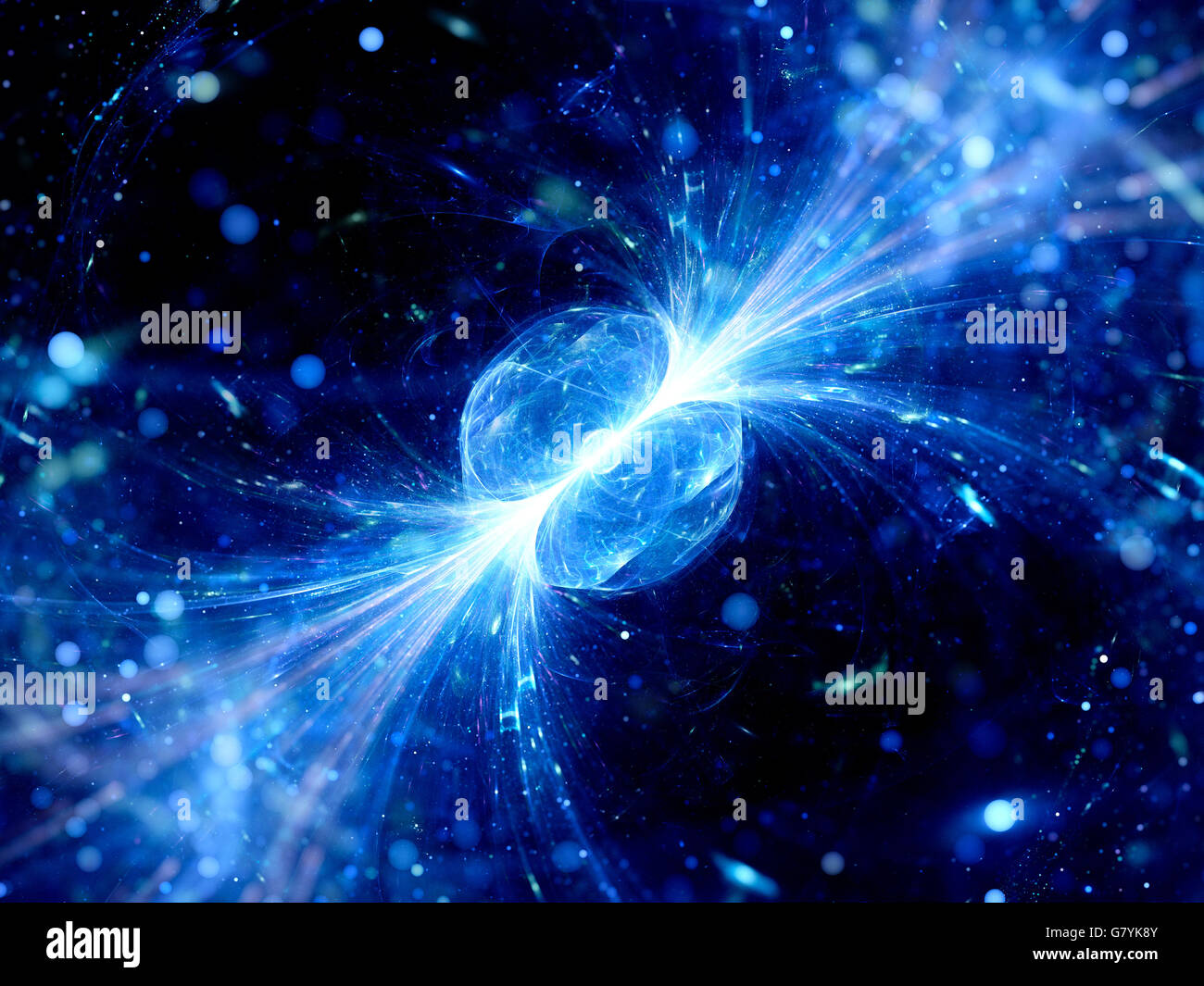 Blue glowing gamma ray burst in space, quasar, computer generated abstract background Stock Photohttps://www.alamy.com/image-license-details/?v=1https://www.alamy.com/stock-photo-blue-glowing-gamma-ray-burst-in-space-quasar-computer-generated-abstract-108172651.html
Blue glowing gamma ray burst in space, quasar, computer generated abstract background Stock Photohttps://www.alamy.com/image-license-details/?v=1https://www.alamy.com/stock-photo-blue-glowing-gamma-ray-burst-in-space-quasar-computer-generated-abstract-108172651.htmlRFG7YK8Y–Blue glowing gamma ray burst in space, quasar, computer generated abstract background
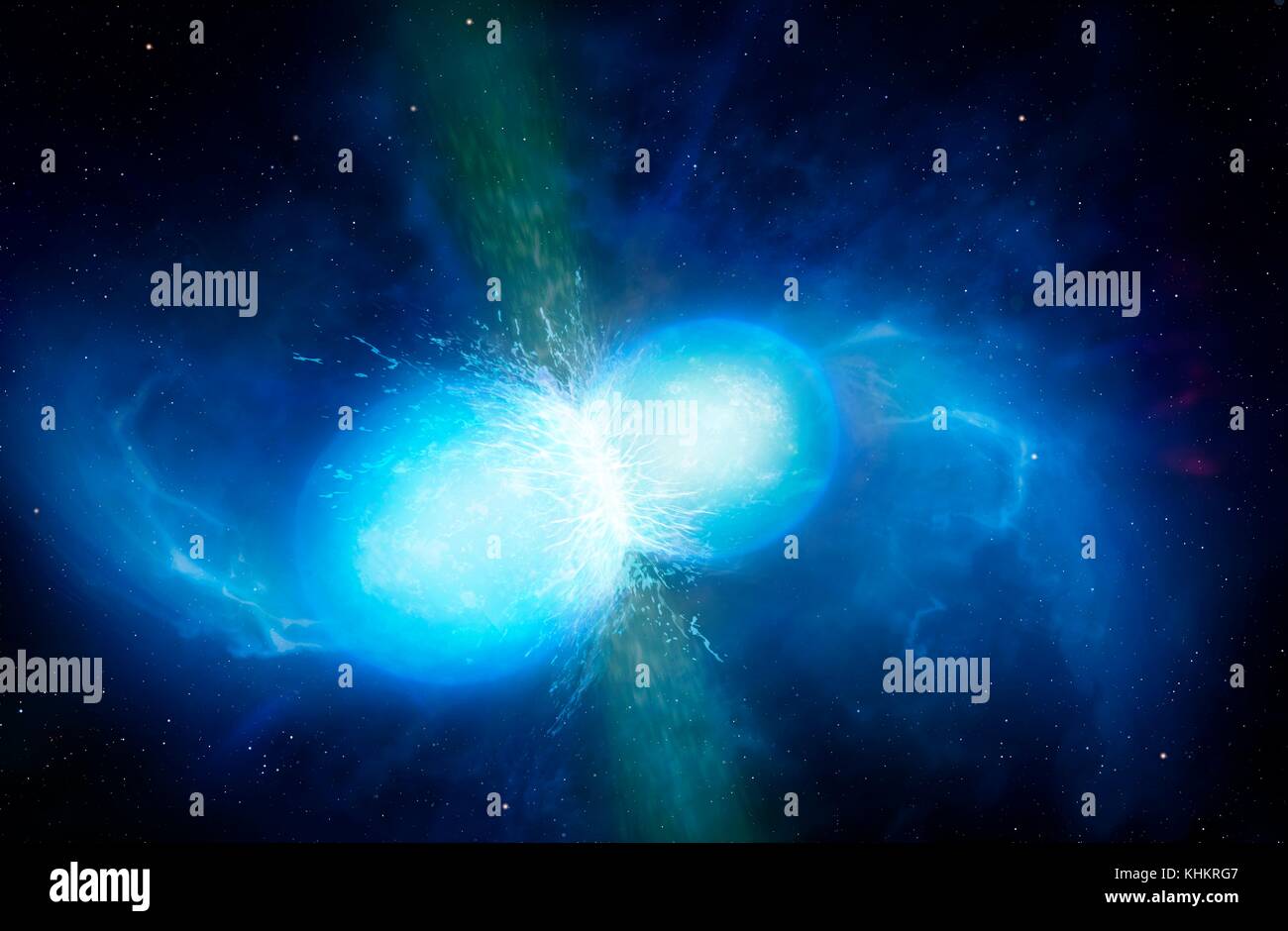 Neutron stars merging, illustration. Neutron stars are the remnants of stars that have run out of fuel and exploded as supernova, eventually collapsing into a superdense core. A typical neutron star has a mass of between 1.3 and 2.1 solar masses but measures only 10km in diameter. Neutron stars can exist as paired, or binary, stars. Seen here is the very final stage, just before full merger. This causes a violent burst of magnetic radiation lasting milliseconds. It is suggested that this is the source of short gamma ray bursts. Stock Photohttps://www.alamy.com/image-license-details/?v=1https://www.alamy.com/stock-image-neutron-stars-merging-illustration-neutron-stars-are-the-remnants-165778039.html
Neutron stars merging, illustration. Neutron stars are the remnants of stars that have run out of fuel and exploded as supernova, eventually collapsing into a superdense core. A typical neutron star has a mass of between 1.3 and 2.1 solar masses but measures only 10km in diameter. Neutron stars can exist as paired, or binary, stars. Seen here is the very final stage, just before full merger. This causes a violent burst of magnetic radiation lasting milliseconds. It is suggested that this is the source of short gamma ray bursts. Stock Photohttps://www.alamy.com/image-license-details/?v=1https://www.alamy.com/stock-image-neutron-stars-merging-illustration-neutron-stars-are-the-remnants-165778039.htmlRFKHKRG7–Neutron stars merging, illustration. Neutron stars are the remnants of stars that have run out of fuel and exploded as supernova, eventually collapsing into a superdense core. A typical neutron star has a mass of between 1.3 and 2.1 solar masses but measures only 10km in diameter. Neutron stars can exist as paired, or binary, stars. Seen here is the very final stage, just before full merger. This causes a violent burst of magnetic radiation lasting milliseconds. It is suggested that this is the source of short gamma ray bursts.
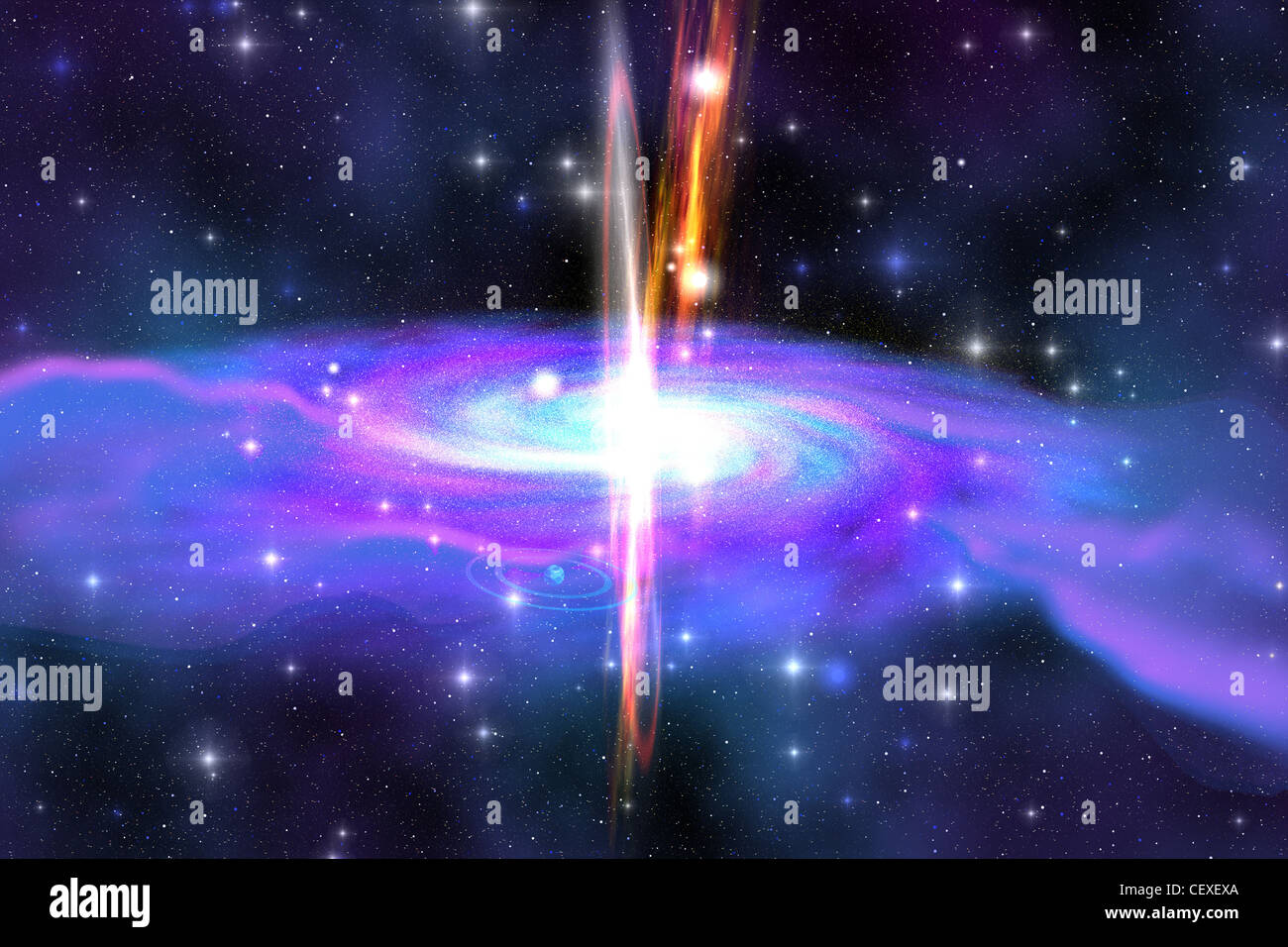 A Stellar Black Hole is caused by the collapse of a massive star and is also called a Supernova explosion or a Gamma Ray Burst. Stock Photohttps://www.alamy.com/image-license-details/?v=1https://www.alamy.com/stock-photo-a-stellar-black-hole-is-caused-by-the-collapse-of-a-massive-star-and-43608386.html
A Stellar Black Hole is caused by the collapse of a massive star and is also called a Supernova explosion or a Gamma Ray Burst. Stock Photohttps://www.alamy.com/image-license-details/?v=1https://www.alamy.com/stock-photo-a-stellar-black-hole-is-caused-by-the-collapse-of-a-massive-star-and-43608386.htmlRFCEXEXA–A Stellar Black Hole is caused by the collapse of a massive star and is also called a Supernova explosion or a Gamma Ray Burst.
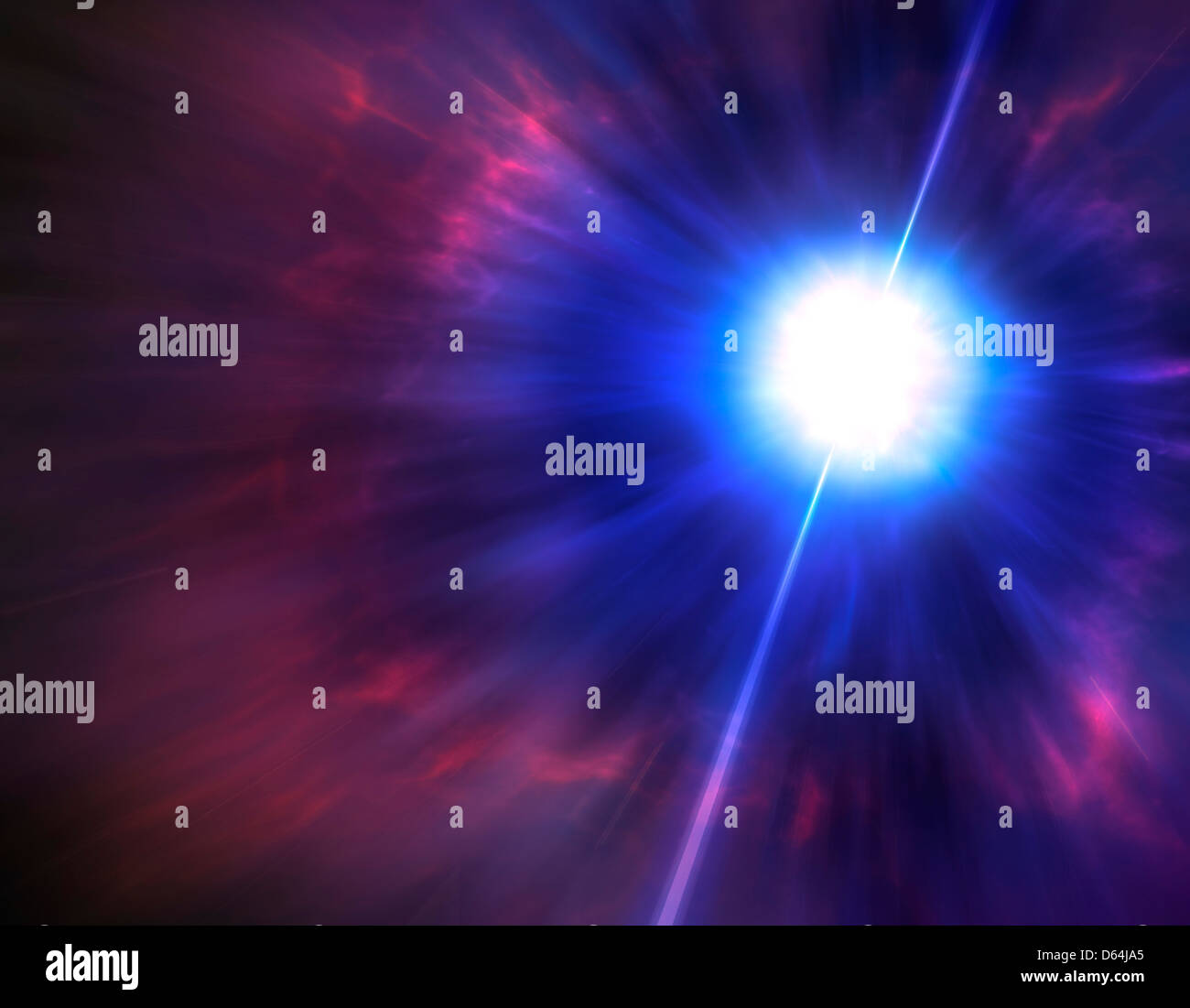 Artwork of a gamma-ray burster Stock Photohttps://www.alamy.com/image-license-details/?v=1https://www.alamy.com/stock-photo-artwork-of-a-gamma-ray-burster-55421245.html
Artwork of a gamma-ray burster Stock Photohttps://www.alamy.com/image-license-details/?v=1https://www.alamy.com/stock-photo-artwork-of-a-gamma-ray-burster-55421245.htmlRFD64JA5–Artwork of a gamma-ray burster
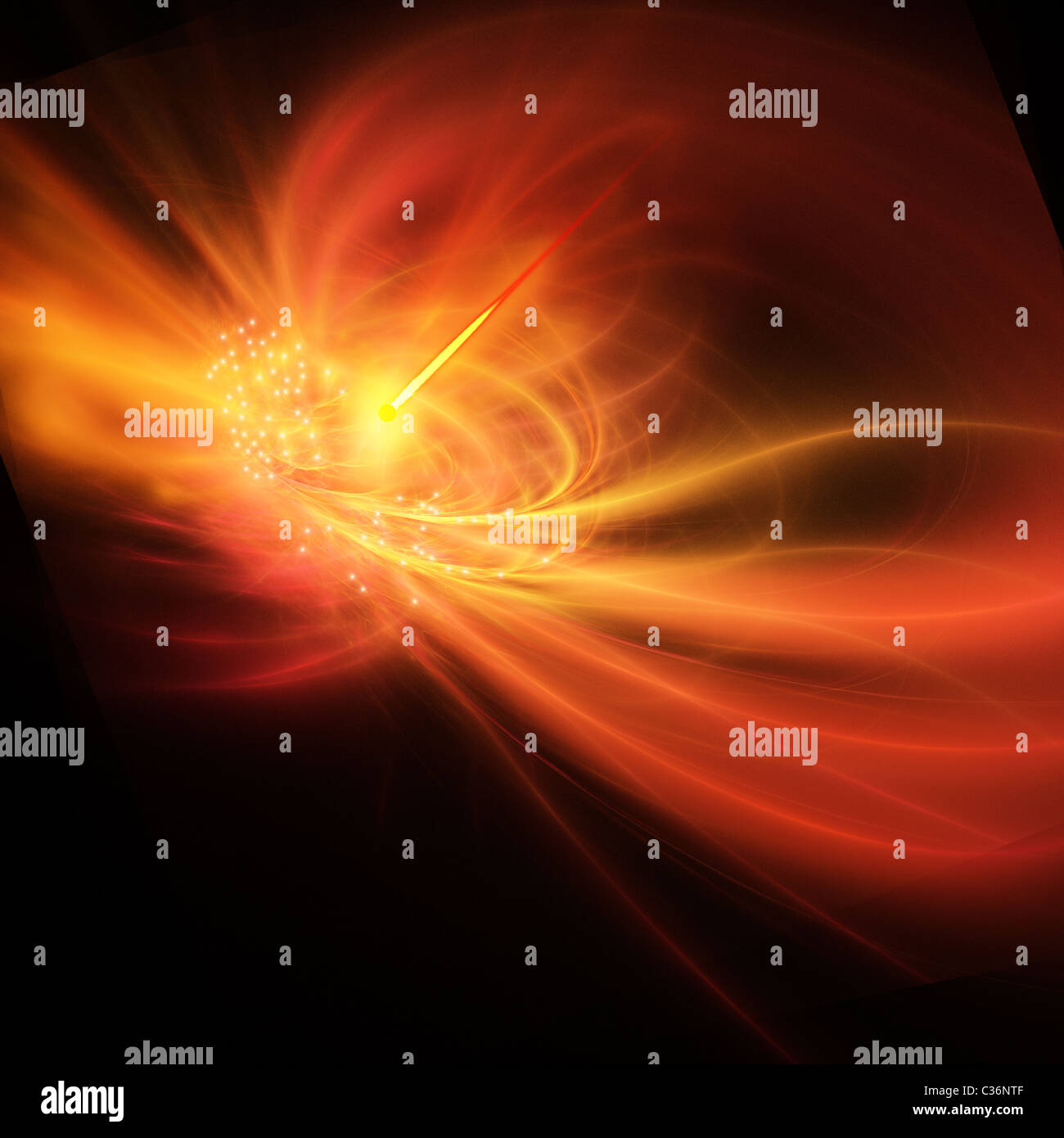 A supernova explosion causes a bright gamma ray burst. Stock Photohttps://www.alamy.com/image-license-details/?v=1https://www.alamy.com/stock-photo-a-supernova-explosion-causes-a-bright-gamma-ray-burst-36413567.html
A supernova explosion causes a bright gamma ray burst. Stock Photohttps://www.alamy.com/image-license-details/?v=1https://www.alamy.com/stock-photo-a-supernova-explosion-causes-a-bright-gamma-ray-burst-36413567.htmlRFC36NTF–A supernova explosion causes a bright gamma ray burst.
 Blue glowing gravitaional wave with gamma ray force field, computer generated abstract background Stock Photohttps://www.alamy.com/image-license-details/?v=1https://www.alamy.com/stock-photo-blue-glowing-gravitaional-wave-with-gamma-ray-force-field-computer-107754259.html
Blue glowing gravitaional wave with gamma ray force field, computer generated abstract background Stock Photohttps://www.alamy.com/image-license-details/?v=1https://www.alamy.com/stock-photo-blue-glowing-gravitaional-wave-with-gamma-ray-force-field-computer-107754259.htmlRFG78HJB–Blue glowing gravitaional wave with gamma ray force field, computer generated abstract background
 Gamma-Ray Burst Stock Photohttps://www.alamy.com/image-license-details/?v=1https://www.alamy.com/stock-photo-gamma-ray-burst-135021925.html
Gamma-Ray Burst Stock Photohttps://www.alamy.com/image-license-details/?v=1https://www.alamy.com/stock-photo-gamma-ray-burst-135021925.htmlRMHRJNRH–Gamma-Ray Burst
 GAMMA RAY BURST Stock Photohttps://www.alamy.com/image-license-details/?v=1https://www.alamy.com/stock-photo-gamma-ray-burst-114464503.html
GAMMA RAY BURST Stock Photohttps://www.alamy.com/image-license-details/?v=1https://www.alamy.com/stock-photo-gamma-ray-burst-114464503.htmlRFGJ68HY–GAMMA RAY BURST
 Rocky Dry Alien Planet Blown Atmosphere Stock Photohttps://www.alamy.com/image-license-details/?v=1https://www.alamy.com/stock-image-rocky-dry-alien-planet-blown-atmosphere-160206040.html
Rocky Dry Alien Planet Blown Atmosphere Stock Photohttps://www.alamy.com/image-license-details/?v=1https://www.alamy.com/stock-image-rocky-dry-alien-planet-blown-atmosphere-160206040.htmlRFK8J0C8–Rocky Dry Alien Planet Blown Atmosphere
 Neutron stars merging, illustration. Neutron stars are the remnants of stars that have run out of fuel and exploded as supernova, eventually collapsing into a superdense core. A typical neutron star has a mass of between 1.3 and 2.1 solar masses but measures only 10km in diameter. Neutron stars can exist as paired, or binary, stars. Seen here is the very final stage, just before full merger. This causes a violent burst of magnetic radiation lasting milliseconds. It is suggested that this is the source of short gamma ray bursts. Stock Photohttps://www.alamy.com/image-license-details/?v=1https://www.alamy.com/stock-image-neutron-stars-merging-illustration-neutron-stars-are-the-remnants-165778011.html
Neutron stars merging, illustration. Neutron stars are the remnants of stars that have run out of fuel and exploded as supernova, eventually collapsing into a superdense core. A typical neutron star has a mass of between 1.3 and 2.1 solar masses but measures only 10km in diameter. Neutron stars can exist as paired, or binary, stars. Seen here is the very final stage, just before full merger. This causes a violent burst of magnetic radiation lasting milliseconds. It is suggested that this is the source of short gamma ray bursts. Stock Photohttps://www.alamy.com/image-license-details/?v=1https://www.alamy.com/stock-image-neutron-stars-merging-illustration-neutron-stars-are-the-remnants-165778011.htmlRFKHKRF7–Neutron stars merging, illustration. Neutron stars are the remnants of stars that have run out of fuel and exploded as supernova, eventually collapsing into a superdense core. A typical neutron star has a mass of between 1.3 and 2.1 solar masses but measures only 10km in diameter. Neutron stars can exist as paired, or binary, stars. Seen here is the very final stage, just before full merger. This causes a violent burst of magnetic radiation lasting milliseconds. It is suggested that this is the source of short gamma ray bursts.
 Civilization Destroyed By A Gamma - Ray Burst. Stock Photohttps://www.alamy.com/image-license-details/?v=1https://www.alamy.com/stock-image-civilization-destroyed-by-a-gamma-ray-burst-164095426.html
Civilization Destroyed By A Gamma - Ray Burst. Stock Photohttps://www.alamy.com/image-license-details/?v=1https://www.alamy.com/stock-image-civilization-destroyed-by-a-gamma-ray-burst-164095426.htmlRMKEY5AX–Civilization Destroyed By A Gamma - Ray Burst.
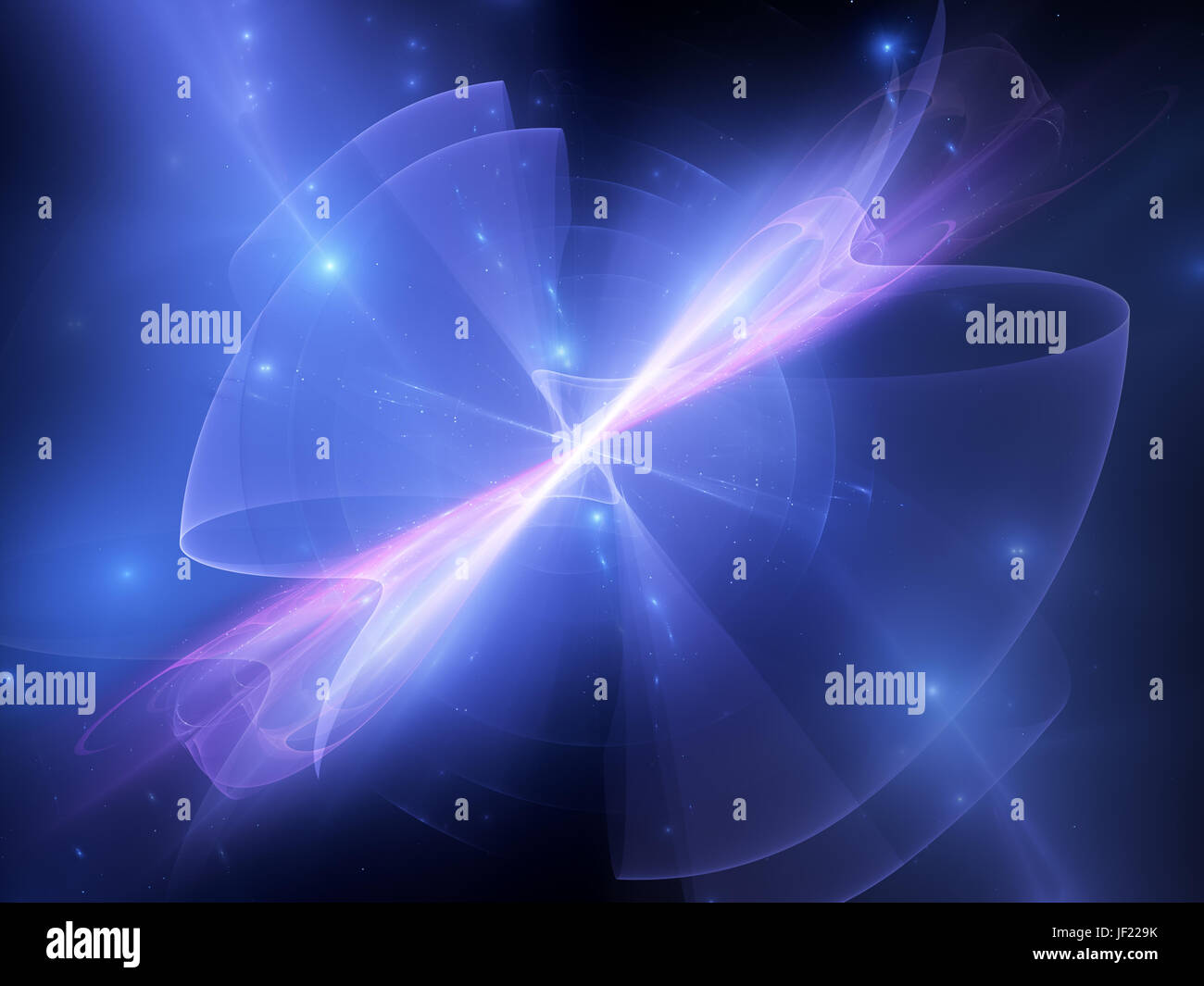 Gamma ray burst with gravitational waves in space, computer generated abstract background, 3D rendering Stock Photohttps://www.alamy.com/image-license-details/?v=1https://www.alamy.com/stock-photo-gamma-ray-burst-with-gravitational-waves-in-space-computer-generated-146948527.html
Gamma ray burst with gravitational waves in space, computer generated abstract background, 3D rendering Stock Photohttps://www.alamy.com/image-license-details/?v=1https://www.alamy.com/stock-photo-gamma-ray-burst-with-gravitational-waves-in-space-computer-generated-146948527.htmlRFJF229K–Gamma ray burst with gravitational waves in space, computer generated abstract background, 3D rendering
 A concentrated gamma ray strikes a planet, increasing the core pressure literally tore it open. Stock Photohttps://www.alamy.com/image-license-details/?v=1https://www.alamy.com/stock-photo-a-concentrated-gamma-ray-strikes-a-planet-increasing-the-core-pressure-37520852.html
A concentrated gamma ray strikes a planet, increasing the core pressure literally tore it open. Stock Photohttps://www.alamy.com/image-license-details/?v=1https://www.alamy.com/stock-photo-a-concentrated-gamma-ray-strikes-a-planet-increasing-the-core-pressure-37520852.htmlRFC5166C–A concentrated gamma ray strikes a planet, increasing the core pressure literally tore it open.
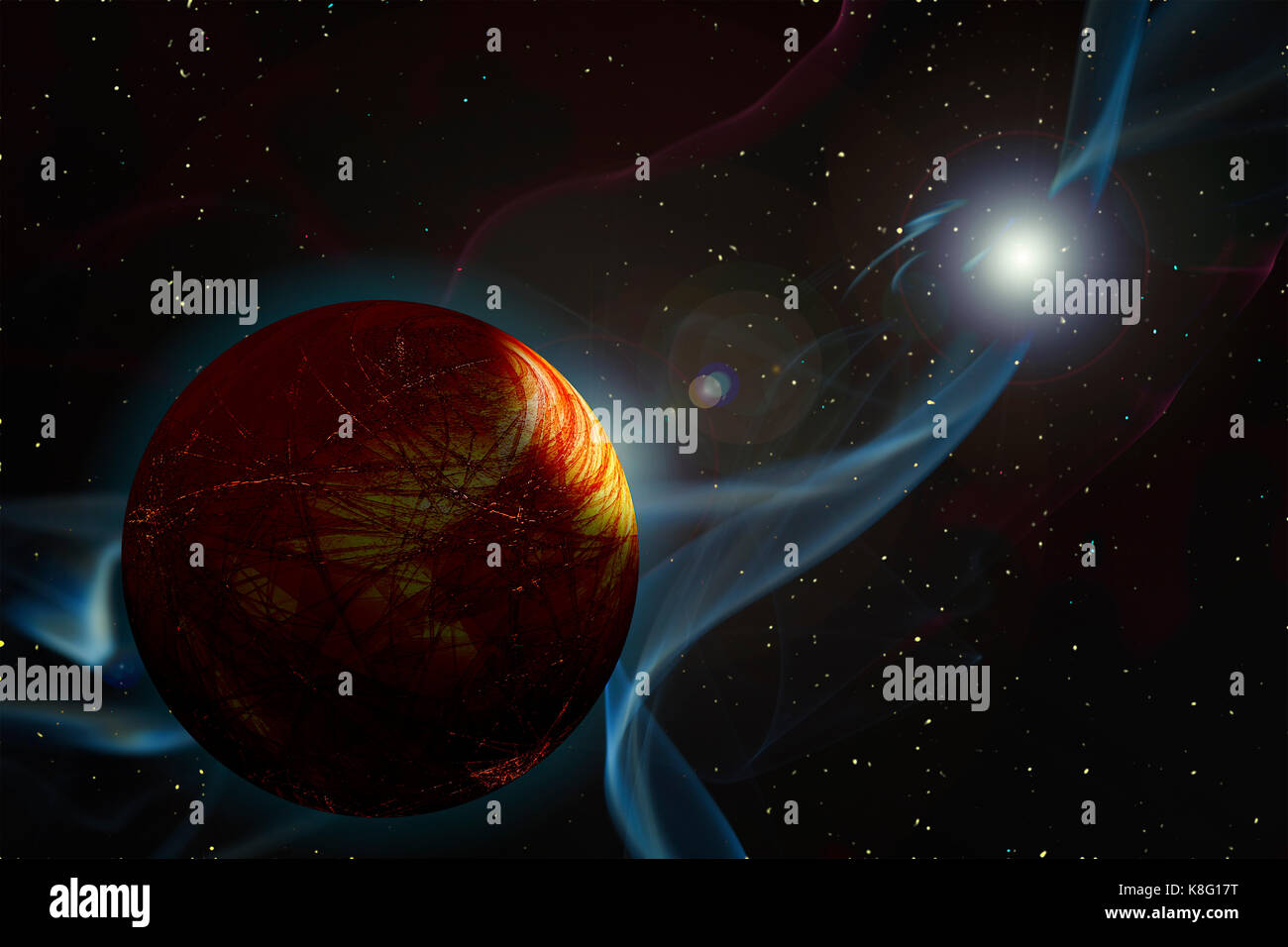 Gamma Ray Burst Doomsday Event Stock Photohttps://www.alamy.com/image-license-details/?v=1https://www.alamy.com/stock-image-gamma-ray-burst-doomsday-event-160162796.html
Gamma Ray Burst Doomsday Event Stock Photohttps://www.alamy.com/image-license-details/?v=1https://www.alamy.com/stock-image-gamma-ray-burst-doomsday-event-160162796.htmlRFK8G17T–Gamma Ray Burst Doomsday Event
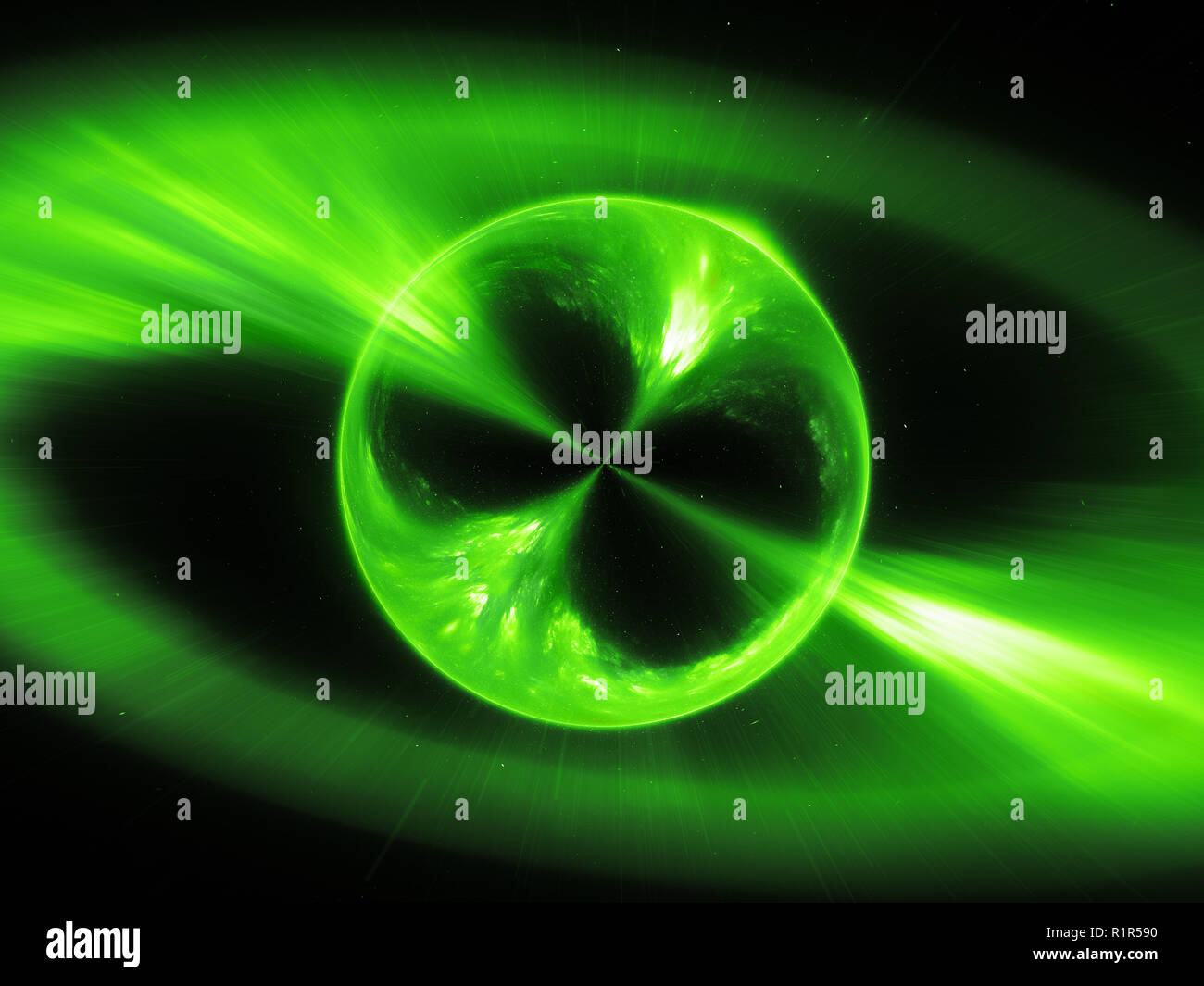 Green glowing supermassive mysterios object in space gamma ray burst, computer generated abstract background, 3D rendering Stock Photohttps://www.alamy.com/image-license-details/?v=1https://www.alamy.com/green-glowing-supermassive-mysterios-object-in-space-gamma-ray-burst-computer-generated-abstract-background-3d-rendering-image224858508.html
Green glowing supermassive mysterios object in space gamma ray burst, computer generated abstract background, 3D rendering Stock Photohttps://www.alamy.com/image-license-details/?v=1https://www.alamy.com/green-glowing-supermassive-mysterios-object-in-space-gamma-ray-burst-computer-generated-abstract-background-3d-rendering-image224858508.htmlRFR1R590–Green glowing supermassive mysterios object in space gamma ray burst, computer generated abstract background, 3D rendering
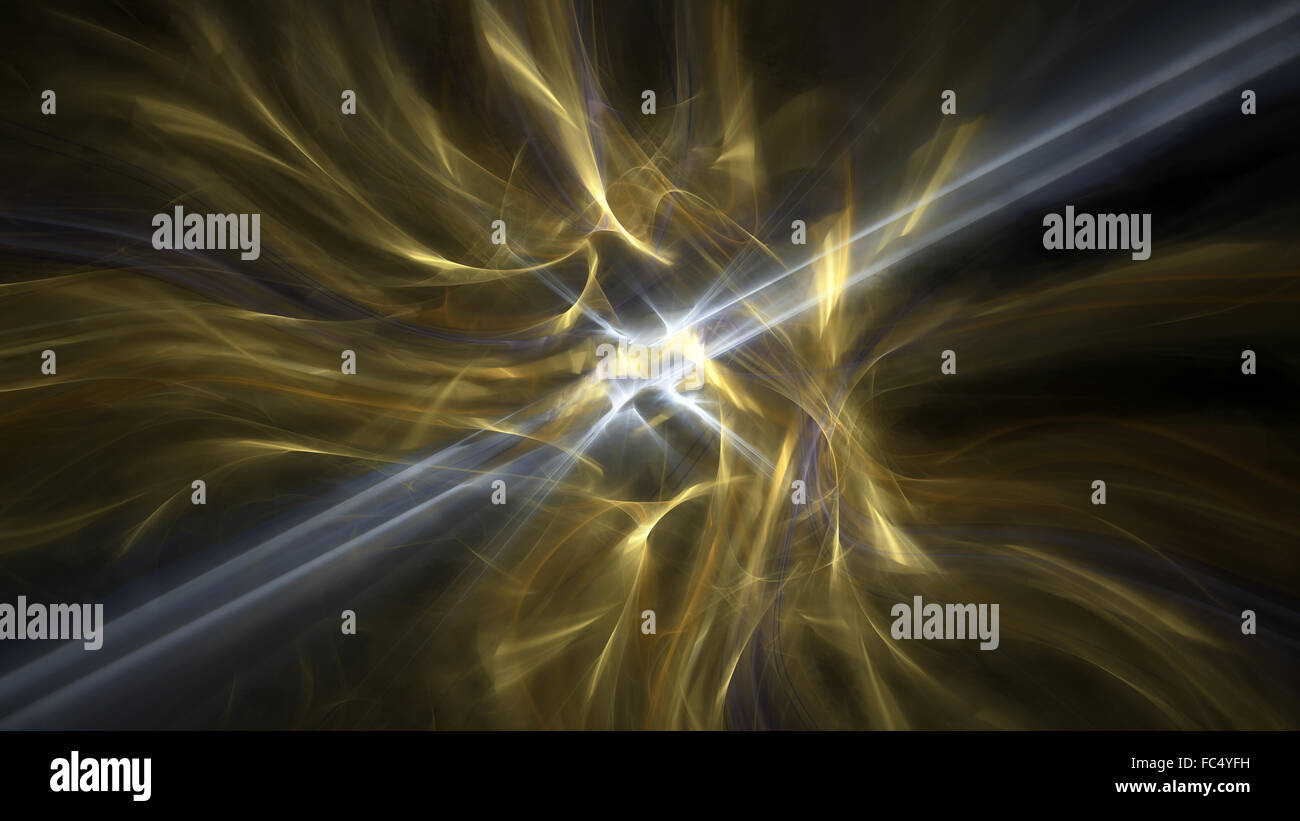 Fractal gamma-ray burst Stock Photohttps://www.alamy.com/image-license-details/?v=1https://www.alamy.com/stock-photo-fractal-gamma-ray-burst-93537125.html
Fractal gamma-ray burst Stock Photohttps://www.alamy.com/image-license-details/?v=1https://www.alamy.com/stock-photo-fractal-gamma-ray-burst-93537125.htmlRFFC4YFH–Fractal gamma-ray burst
 Glowing round energy source in space, gamma ray burst, computer generated abstract background, 3D render Stock Photohttps://www.alamy.com/image-license-details/?v=1https://www.alamy.com/stock-photo-glowing-round-energy-source-in-space-gamma-ray-burst-computer-generated-131046279.html
Glowing round energy source in space, gamma ray burst, computer generated abstract background, 3D render Stock Photohttps://www.alamy.com/image-license-details/?v=1https://www.alamy.com/stock-photo-glowing-round-energy-source-in-space-gamma-ray-burst-computer-generated-131046279.htmlRFHH5JT7–Glowing round energy source in space, gamma ray burst, computer generated abstract background, 3D render
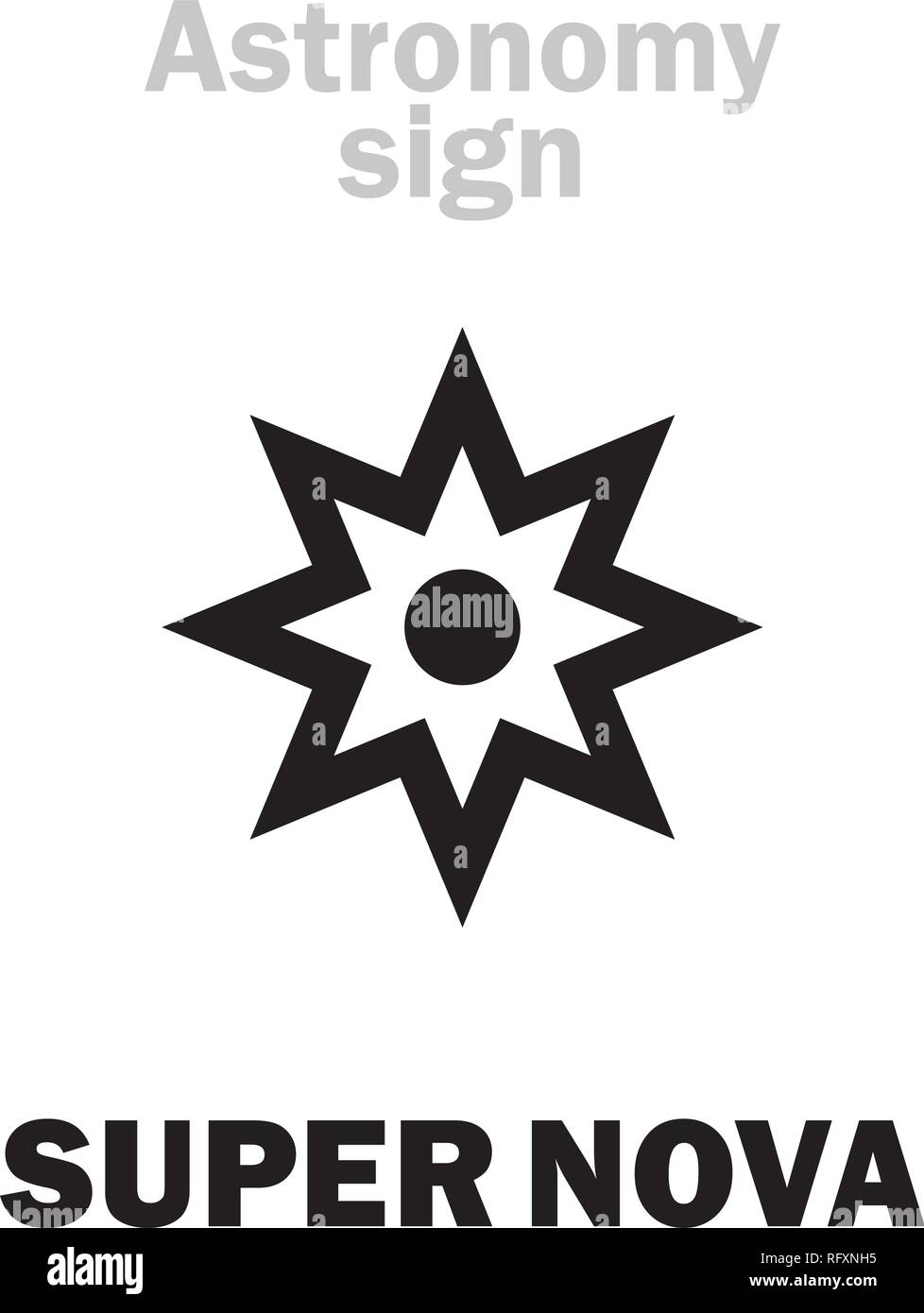 Astrology Alphabet: SUPER NOVA, Amazing brightest burst of star before its extinction, extremely energetic explosion with gamma-ray burst in Universe. Stock Vectorhttps://www.alamy.com/image-license-details/?v=1https://www.alamy.com/astrology-alphabet-super-nova-amazing-brightest-burst-of-star-before-its-extinction-extremely-energetic-explosion-with-gamma-ray-burst-in-universe-image233542321.html
Astrology Alphabet: SUPER NOVA, Amazing brightest burst of star before its extinction, extremely energetic explosion with gamma-ray burst in Universe. Stock Vectorhttps://www.alamy.com/image-license-details/?v=1https://www.alamy.com/astrology-alphabet-super-nova-amazing-brightest-burst-of-star-before-its-extinction-extremely-energetic-explosion-with-gamma-ray-burst-in-universe-image233542321.htmlRFRFXNH5–Astrology Alphabet: SUPER NOVA, Amazing brightest burst of star before its extinction, extremely energetic explosion with gamma-ray burst in Universe.
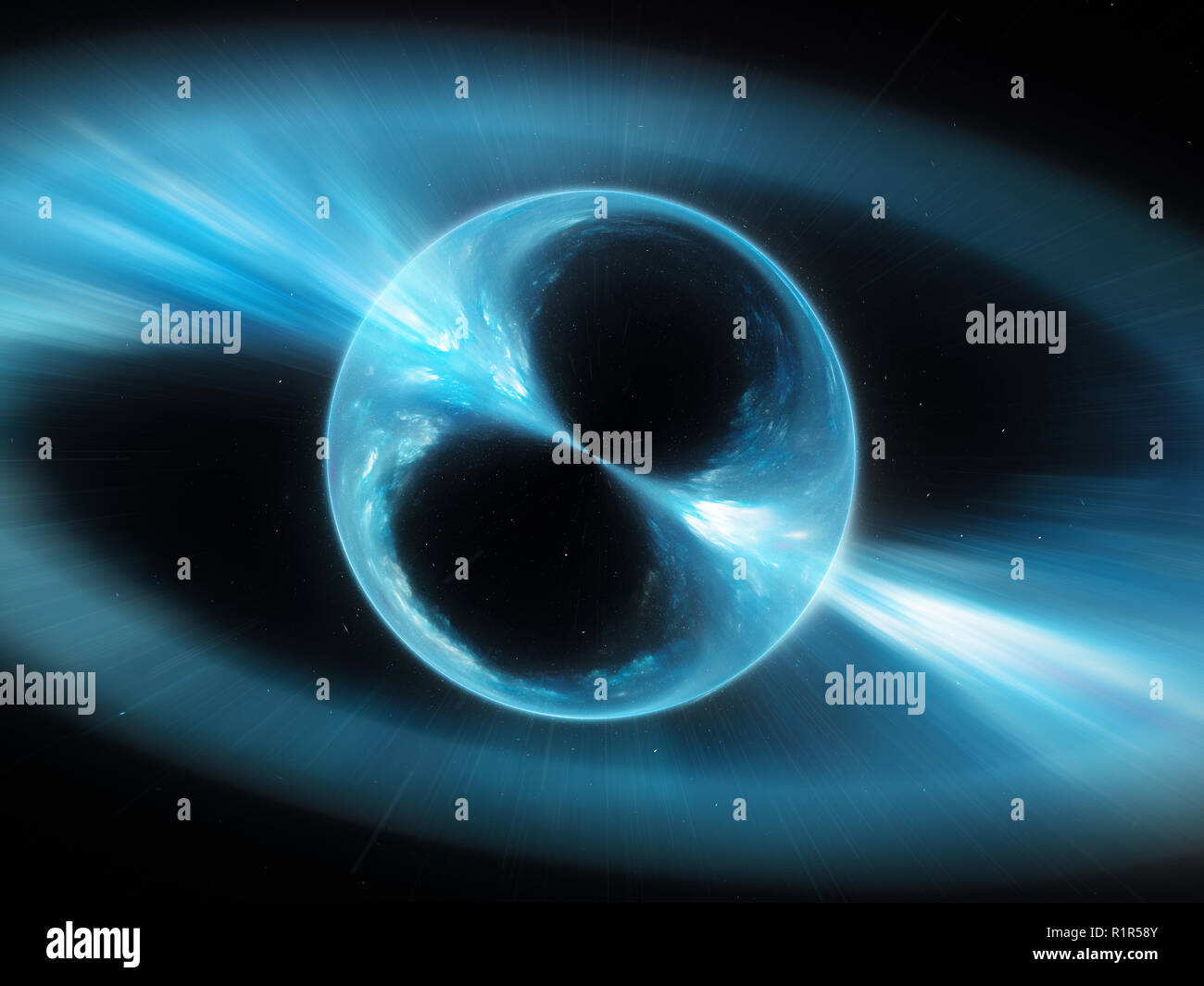 Blue glowing supermassive mysterios object in space gamma ray burst, computer generated abstract background, 3D rendering Stock Photohttps://www.alamy.com/image-license-details/?v=1https://www.alamy.com/blue-glowing-supermassive-mysterios-object-in-space-gamma-ray-burst-computer-generated-abstract-background-3d-rendering-image224858507.html
Blue glowing supermassive mysterios object in space gamma ray burst, computer generated abstract background, 3D rendering Stock Photohttps://www.alamy.com/image-license-details/?v=1https://www.alamy.com/blue-glowing-supermassive-mysterios-object-in-space-gamma-ray-burst-computer-generated-abstract-background-3d-rendering-image224858507.htmlRFR1R58Y–Blue glowing supermassive mysterios object in space gamma ray burst, computer generated abstract background, 3D rendering
 Illustration of the powerful gamma-ray burst GRB 190114C. Stock Photohttps://www.alamy.com/image-license-details/?v=1https://www.alamy.com/illustration-of-the-powerful-gamma-ray-burst-grb-190114c-image560709128.html
Illustration of the powerful gamma-ray burst GRB 190114C. Stock Photohttps://www.alamy.com/image-license-details/?v=1https://www.alamy.com/illustration-of-the-powerful-gamma-ray-burst-grb-190114c-image560709128.htmlRF2RG6E60–Illustration of the powerful gamma-ray burst GRB 190114C.
 Gamma-ray burst by a blackhole Stock Photohttps://www.alamy.com/image-license-details/?v=1https://www.alamy.com/stock-image-gamma-ray-burst-by-a-blackhole-169394154.html
Gamma-ray burst by a blackhole Stock Photohttps://www.alamy.com/image-license-details/?v=1https://www.alamy.com/stock-image-gamma-ray-burst-by-a-blackhole-169394154.htmlRMKRGFY6–Gamma-ray burst by a blackhole
 (240726) -- BEIJING, July 26, 2024 (Xinhua) -- This schematic diagram provided by the Institute of High Energy Physics (IHEP) under the Chinese Academy of Sciences shows the brightest gamma-ray burst (GRB) ever observed, coded GRB 221009A. TO GO WITH 'China Focus: Chinese scientists discover highest-energy gamma-ray spectral line' (IHEP/Handout via Xinhua) Stock Photohttps://www.alamy.com/image-license-details/?v=1https://www.alamy.com/240726-beijing-july-26-2024-xinhua-this-schematic-diagram-provided-by-the-institute-of-high-energy-physics-ihep-under-the-chinese-academy-of-sciences-shows-the-brightest-gamma-ray-burst-grb-ever-observed-coded-grb-221009a-to-go-with-china-focus-chinese-scientists-discover-highest-energy-gamma-ray-spectral-line-ihephandout-via-xinhua-image614822935.html
(240726) -- BEIJING, July 26, 2024 (Xinhua) -- This schematic diagram provided by the Institute of High Energy Physics (IHEP) under the Chinese Academy of Sciences shows the brightest gamma-ray burst (GRB) ever observed, coded GRB 221009A. TO GO WITH 'China Focus: Chinese scientists discover highest-energy gamma-ray spectral line' (IHEP/Handout via Xinhua) Stock Photohttps://www.alamy.com/image-license-details/?v=1https://www.alamy.com/240726-beijing-july-26-2024-xinhua-this-schematic-diagram-provided-by-the-institute-of-high-energy-physics-ihep-under-the-chinese-academy-of-sciences-shows-the-brightest-gamma-ray-burst-grb-ever-observed-coded-grb-221009a-to-go-with-china-focus-chinese-scientists-discover-highest-energy-gamma-ray-spectral-line-ihephandout-via-xinhua-image614822935.htmlRM2XM7GWY–(240726) -- BEIJING, July 26, 2024 (Xinhua) -- This schematic diagram provided by the Institute of High Energy Physics (IHEP) under the Chinese Academy of Sciences shows the brightest gamma-ray burst (GRB) ever observed, coded GRB 221009A. TO GO WITH 'China Focus: Chinese scientists discover highest-energy gamma-ray spectral line' (IHEP/Handout via Xinhua)
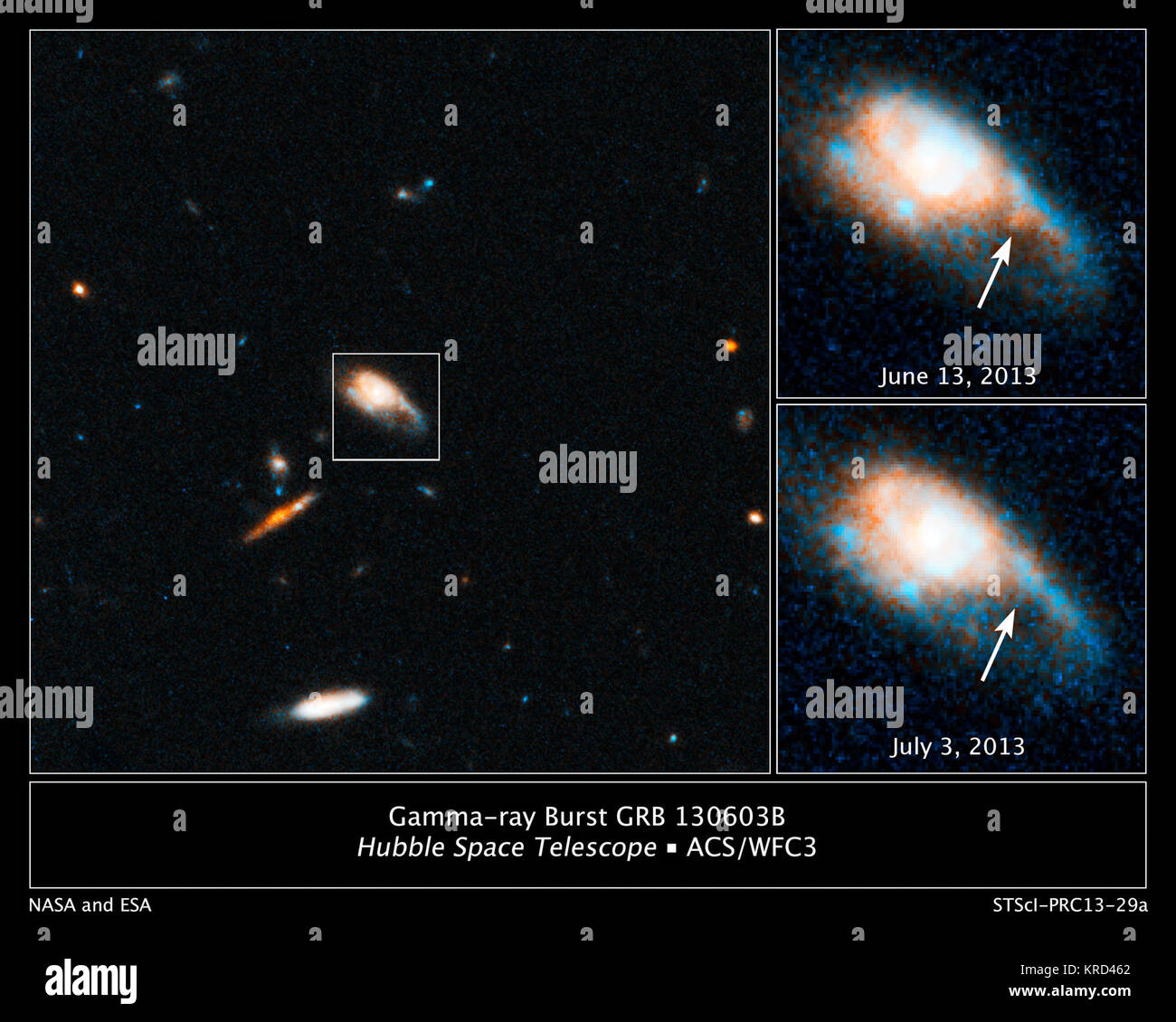 These images taken by the NASA/ESA Hubble Space Telescope reveal a new type of stellar explosion produced from the merger of two compact objects. Hubble spotted the outburst while looking at the aftermath of a short-duration gamma-ray burst, a mysterious flash of intense high-energy radiation that appears from random directions in space. Short-duration blasts last at most a few seconds. They sometimes, however, produce faint afterglows in visible and near-infrared light that continue for several hours or days and help astronomers to pinpoint the exact location of the burst. In the image on the Stock Photohttps://www.alamy.com/image-license-details/?v=1https://www.alamy.com/stock-image-these-images-taken-by-the-nasaesa-hubble-space-telescope-reveal-a-169319082.html
These images taken by the NASA/ESA Hubble Space Telescope reveal a new type of stellar explosion produced from the merger of two compact objects. Hubble spotted the outburst while looking at the aftermath of a short-duration gamma-ray burst, a mysterious flash of intense high-energy radiation that appears from random directions in space. Short-duration blasts last at most a few seconds. They sometimes, however, produce faint afterglows in visible and near-infrared light that continue for several hours or days and help astronomers to pinpoint the exact location of the burst. In the image on the Stock Photohttps://www.alamy.com/image-license-details/?v=1https://www.alamy.com/stock-image-these-images-taken-by-the-nasaesa-hubble-space-telescope-reveal-a-169319082.htmlRMKRD462–These images taken by the NASA/ESA Hubble Space Telescope reveal a new type of stellar explosion produced from the merger of two compact objects. Hubble spotted the outburst while looking at the aftermath of a short-duration gamma-ray burst, a mysterious flash of intense high-energy radiation that appears from random directions in space. Short-duration blasts last at most a few seconds. They sometimes, however, produce faint afterglows in visible and near-infrared light that continue for several hours or days and help astronomers to pinpoint the exact location of the burst. In the image on the
 Beijing, China. 21st Apr, 2023. This composite photo taken on April 21, 2023 shows the Large High Altitude Air Shower Observatory (LHAASO) in southwest China's Sichuan Province. China's LHAASO, a high-altitude cosmic ray observatory, has released the precise energy spectrum for the highest-energy gamma-ray radiation from the brightest gamma-ray burst (GRB) observed to date. Credit: Jin Liwang/Xinhua/Alamy Live News Stock Photohttps://www.alamy.com/image-license-details/?v=1https://www.alamy.com/beijing-china-21st-apr-2023-this-composite-photo-taken-on-april-21-2023-shows-the-large-high-altitude-air-shower-observatory-lhaaso-in-southwest-chinas-sichuan-province-chinas-lhaaso-a-high-altitude-cosmic-ray-observatory-has-released-the-precise-energy-spectrum-for-the-highest-energy-gamma-ray-radiation-from-the-brightest-gamma-ray-burst-grb-observed-to-date-credit-jin-liwangxinhuaalamy-live-news-image591717703.html
Beijing, China. 21st Apr, 2023. This composite photo taken on April 21, 2023 shows the Large High Altitude Air Shower Observatory (LHAASO) in southwest China's Sichuan Province. China's LHAASO, a high-altitude cosmic ray observatory, has released the precise energy spectrum for the highest-energy gamma-ray radiation from the brightest gamma-ray burst (GRB) observed to date. Credit: Jin Liwang/Xinhua/Alamy Live News Stock Photohttps://www.alamy.com/image-license-details/?v=1https://www.alamy.com/beijing-china-21st-apr-2023-this-composite-photo-taken-on-april-21-2023-shows-the-large-high-altitude-air-shower-observatory-lhaaso-in-southwest-chinas-sichuan-province-chinas-lhaaso-a-high-altitude-cosmic-ray-observatory-has-released-the-precise-energy-spectrum-for-the-highest-energy-gamma-ray-radiation-from-the-brightest-gamma-ray-burst-grb-observed-to-date-credit-jin-liwangxinhuaalamy-live-news-image591717703.htmlRM2WAK1Y3–Beijing, China. 21st Apr, 2023. This composite photo taken on April 21, 2023 shows the Large High Altitude Air Shower Observatory (LHAASO) in southwest China's Sichuan Province. China's LHAASO, a high-altitude cosmic ray observatory, has released the precise energy spectrum for the highest-energy gamma-ray radiation from the brightest gamma-ray burst (GRB) observed to date. Credit: Jin Liwang/Xinhua/Alamy Live News
 Gamma Ray Burst Stock Photohttps://www.alamy.com/image-license-details/?v=1https://www.alamy.com/gamma-ray-burst-image227245232.html
Gamma Ray Burst Stock Photohttps://www.alamy.com/image-license-details/?v=1https://www.alamy.com/gamma-ray-burst-image227245232.htmlRFR5KWH4–Gamma Ray Burst
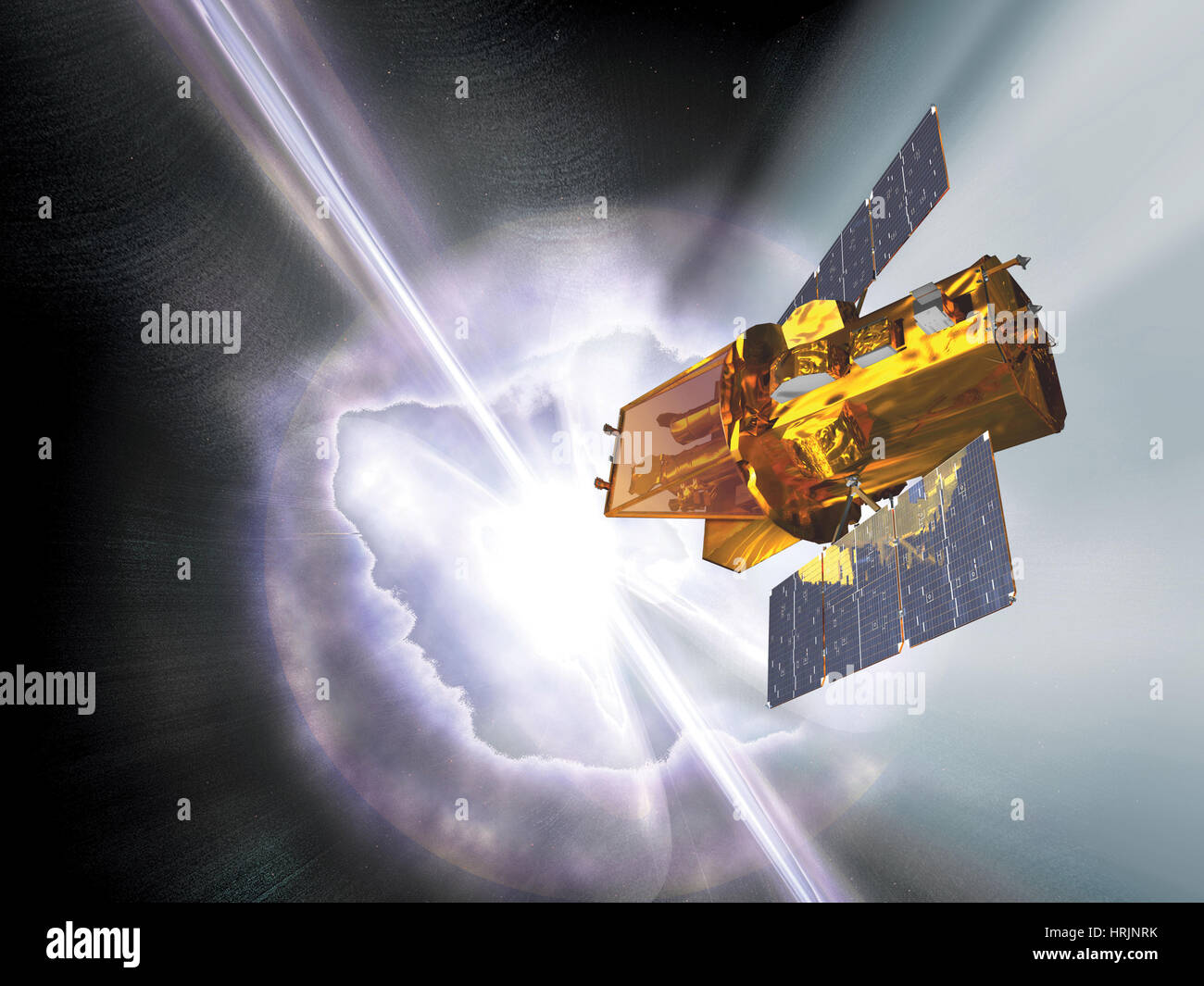 Swift Spacecraft with Gamma-Ray Burst Stock Photohttps://www.alamy.com/image-license-details/?v=1https://www.alamy.com/stock-photo-swift-spacecraft-with-gamma-ray-burst-135021927.html
Swift Spacecraft with Gamma-Ray Burst Stock Photohttps://www.alamy.com/image-license-details/?v=1https://www.alamy.com/stock-photo-swift-spacecraft-with-gamma-ray-burst-135021927.htmlRMHRJNRK–Swift Spacecraft with Gamma-Ray Burst
 (171016) -- WASHINGTON, Oct. 16, 2017 (Xinhua) -- Illustration Image shows two merging neutron stars. The narrow beams represent the gamma-ray burst while the rippling spacetime grid indicates the isotropic gravitational waves that characterize the merger. Swirling clouds of material ejected from the merging stars are a possible source of the light that was seen at lower energies. Scientists announced Monday that they have for the first time detected the ripples in space and time known as gravitational waves as well as light from a spectacular collision of two neutron stars. (Xinhua/National Stock Photohttps://www.alamy.com/image-license-details/?v=1https://www.alamy.com/stock-image-171016-washington-oct-16-2017-xinhua-illustration-image-shows-two-163435340.html
(171016) -- WASHINGTON, Oct. 16, 2017 (Xinhua) -- Illustration Image shows two merging neutron stars. The narrow beams represent the gamma-ray burst while the rippling spacetime grid indicates the isotropic gravitational waves that characterize the merger. Swirling clouds of material ejected from the merging stars are a possible source of the light that was seen at lower energies. Scientists announced Monday that they have for the first time detected the ripples in space and time known as gravitational waves as well as light from a spectacular collision of two neutron stars. (Xinhua/National Stock Photohttps://www.alamy.com/image-license-details/?v=1https://www.alamy.com/stock-image-171016-washington-oct-16-2017-xinhua-illustration-image-shows-two-163435340.htmlRMKDW3CC–(171016) -- WASHINGTON, Oct. 16, 2017 (Xinhua) -- Illustration Image shows two merging neutron stars. The narrow beams represent the gamma-ray burst while the rippling spacetime grid indicates the isotropic gravitational waves that characterize the merger. Swirling clouds of material ejected from the merging stars are a possible source of the light that was seen at lower energies. Scientists announced Monday that they have for the first time detected the ripples in space and time known as gravitational waves as well as light from a spectacular collision of two neutron stars. (Xinhua/National
 Chandra Gamma Ray Burst 01 Stock Photohttps://www.alamy.com/image-license-details/?v=1https://www.alamy.com/stock-image-chandra-gamma-ray-burst-01-169273374.html
Chandra Gamma Ray Burst 01 Stock Photohttps://www.alamy.com/image-license-details/?v=1https://www.alamy.com/stock-image-chandra-gamma-ray-burst-01-169273374.htmlRMKRB1WJ–Chandra Gamma Ray Burst 01
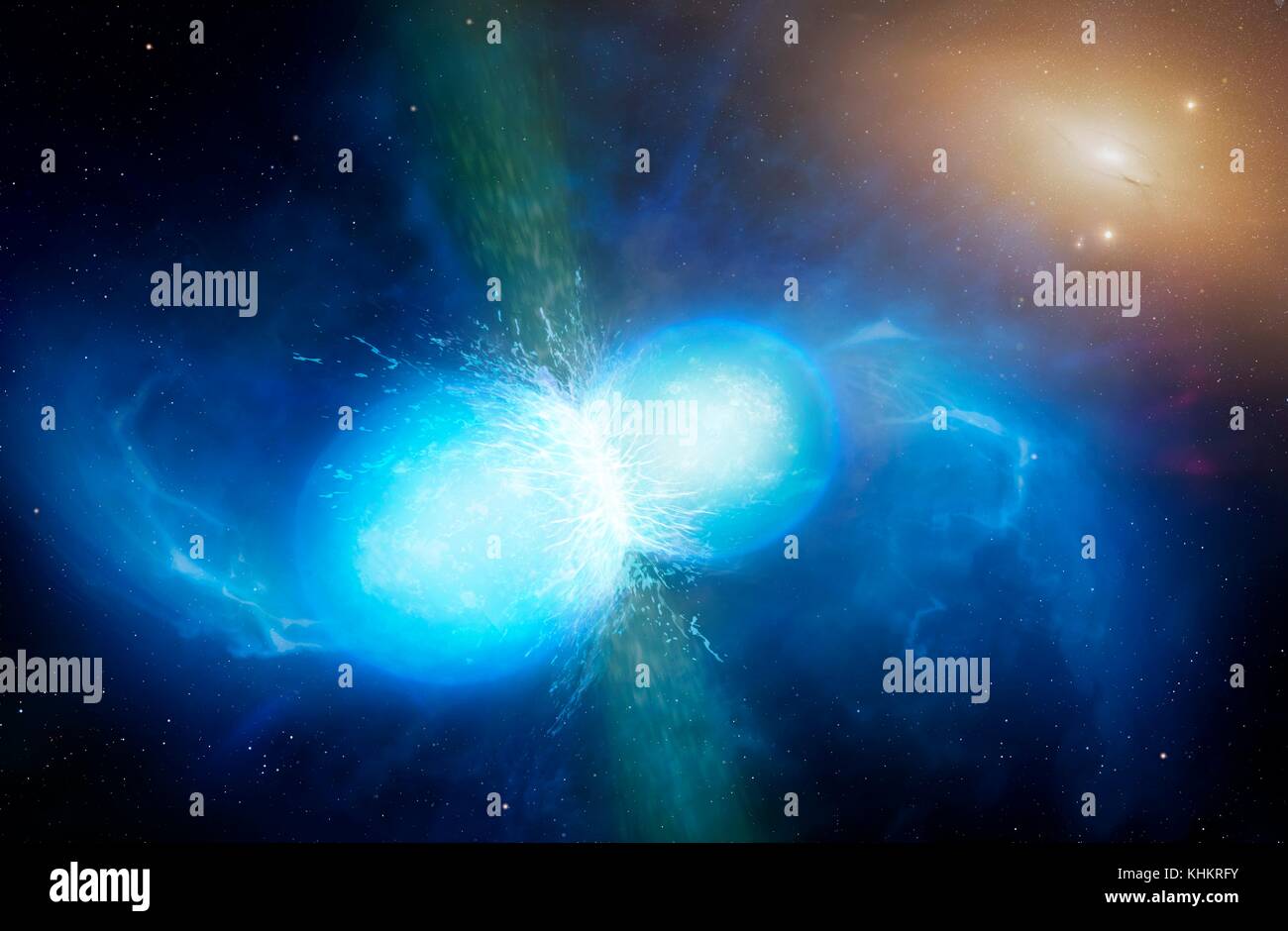 Neutron stars merging, illustration. Neutron stars are the remnants of stars that have run out of fuel and exploded as supernova, eventually collapsing into a superdense core. A typical neutron star has a mass of between 1.3 and 2.1 solar masses but measures only 10km in diameter. Neutron stars can exist as paired, or binary, stars. Seen here is the very final stage, just before full merger. This causes a violent burst of magnetic radiation lasting milliseconds. It is suggested that this is the source of short gamma ray bursts. Stock Photohttps://www.alamy.com/image-license-details/?v=1https://www.alamy.com/stock-image-neutron-stars-merging-illustration-neutron-stars-are-the-remnants-165778031.html
Neutron stars merging, illustration. Neutron stars are the remnants of stars that have run out of fuel and exploded as supernova, eventually collapsing into a superdense core. A typical neutron star has a mass of between 1.3 and 2.1 solar masses but measures only 10km in diameter. Neutron stars can exist as paired, or binary, stars. Seen here is the very final stage, just before full merger. This causes a violent burst of magnetic radiation lasting milliseconds. It is suggested that this is the source of short gamma ray bursts. Stock Photohttps://www.alamy.com/image-license-details/?v=1https://www.alamy.com/stock-image-neutron-stars-merging-illustration-neutron-stars-are-the-remnants-165778031.htmlRFKHKRFY–Neutron stars merging, illustration. Neutron stars are the remnants of stars that have run out of fuel and exploded as supernova, eventually collapsing into a superdense core. A typical neutron star has a mass of between 1.3 and 2.1 solar masses but measures only 10km in diameter. Neutron stars can exist as paired, or binary, stars. Seen here is the very final stage, just before full merger. This causes a violent burst of magnetic radiation lasting milliseconds. It is suggested that this is the source of short gamma ray bursts.
 Civilization Destroyed By A Gamma - Ray Burst. Stock Photohttps://www.alamy.com/image-license-details/?v=1https://www.alamy.com/stock-image-civilization-destroyed-by-a-gamma-ray-burst-164129511.html
Civilization Destroyed By A Gamma - Ray Burst. Stock Photohttps://www.alamy.com/image-license-details/?v=1https://www.alamy.com/stock-image-civilization-destroyed-by-a-gamma-ray-burst-164129511.htmlRMKF0MT7–Civilization Destroyed By A Gamma - Ray Burst.
 Artwork of a binary GRB Stock Photohttps://www.alamy.com/image-license-details/?v=1https://www.alamy.com/artwork-of-a-binary-grb-image341079304.html
Artwork of a binary GRB Stock Photohttps://www.alamy.com/image-license-details/?v=1https://www.alamy.com/artwork-of-a-binary-grb-image341079304.htmlRF2APWE3M–Artwork of a binary GRB
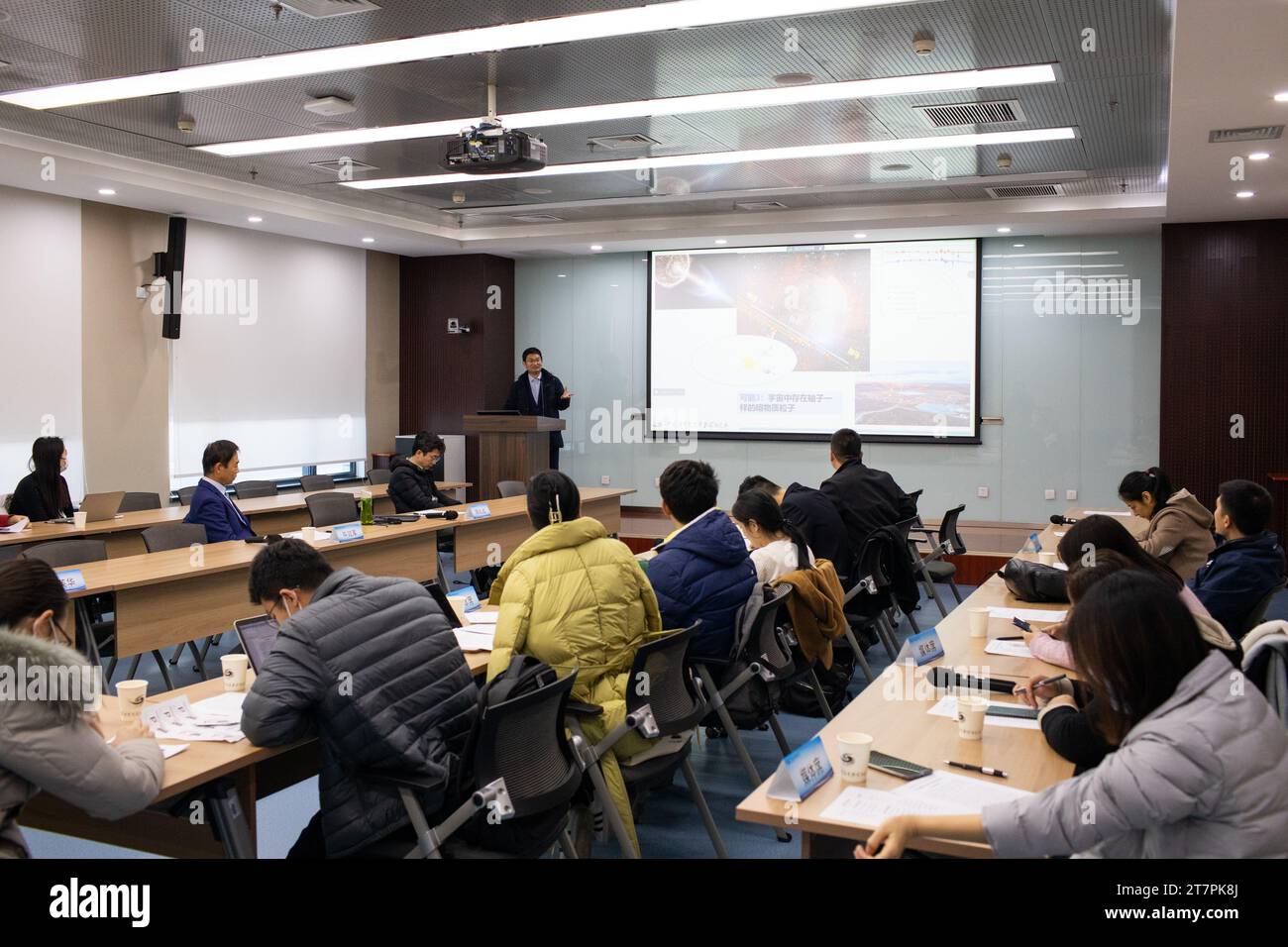 (231117) -- BEIJING, Nov. 17, 2023 (Xinhua) -- Chen Songzhan, the corresponding author of the study and a researcher at the Institute of High Energy Physics (IHEP) of the Chinese Academy of Sciences, introduces research findings at the IHEP of the Chinese Academy of Sciences in Beijing, capital of China, on Nov. 14, 2023. China's Large High Altitude Air Shower Observatory (LHAASO), a high-altitude cosmic ray observatory, has released the precise energy spectrum for the highest-energy gamma-ray radiation from the brightest gamma-ray burst (GRB) observed to date. The study, conducted by the LH Stock Photohttps://www.alamy.com/image-license-details/?v=1https://www.alamy.com/231117-beijing-nov-17-2023-xinhua-chen-songzhan-the-corresponding-author-of-the-study-and-a-researcher-at-the-institute-of-high-energy-physics-ihep-of-the-chinese-academy-of-sciences-introduces-research-findings-at-the-ihep-of-the-chinese-academy-of-sciences-in-beijing-capital-of-china-on-nov-14-2023-chinas-large-high-altitude-air-shower-observatory-lhaaso-a-high-altitude-cosmic-ray-observatory-has-released-the-precise-energy-spectrum-for-the-highest-energy-gamma-ray-radiation-from-the-brightest-gamma-ray-burst-grb-observed-to-date-the-study-conducted-by-the-lh-image572742818.html
(231117) -- BEIJING, Nov. 17, 2023 (Xinhua) -- Chen Songzhan, the corresponding author of the study and a researcher at the Institute of High Energy Physics (IHEP) of the Chinese Academy of Sciences, introduces research findings at the IHEP of the Chinese Academy of Sciences in Beijing, capital of China, on Nov. 14, 2023. China's Large High Altitude Air Shower Observatory (LHAASO), a high-altitude cosmic ray observatory, has released the precise energy spectrum for the highest-energy gamma-ray radiation from the brightest gamma-ray burst (GRB) observed to date. The study, conducted by the LH Stock Photohttps://www.alamy.com/image-license-details/?v=1https://www.alamy.com/231117-beijing-nov-17-2023-xinhua-chen-songzhan-the-corresponding-author-of-the-study-and-a-researcher-at-the-institute-of-high-energy-physics-ihep-of-the-chinese-academy-of-sciences-introduces-research-findings-at-the-ihep-of-the-chinese-academy-of-sciences-in-beijing-capital-of-china-on-nov-14-2023-chinas-large-high-altitude-air-shower-observatory-lhaaso-a-high-altitude-cosmic-ray-observatory-has-released-the-precise-energy-spectrum-for-the-highest-energy-gamma-ray-radiation-from-the-brightest-gamma-ray-burst-grb-observed-to-date-the-study-conducted-by-the-lh-image572742818.htmlRM2T7PK8J–(231117) -- BEIJING, Nov. 17, 2023 (Xinhua) -- Chen Songzhan, the corresponding author of the study and a researcher at the Institute of High Energy Physics (IHEP) of the Chinese Academy of Sciences, introduces research findings at the IHEP of the Chinese Academy of Sciences in Beijing, capital of China, on Nov. 14, 2023. China's Large High Altitude Air Shower Observatory (LHAASO), a high-altitude cosmic ray observatory, has released the precise energy spectrum for the highest-energy gamma-ray radiation from the brightest gamma-ray burst (GRB) observed to date. The study, conducted by the LH
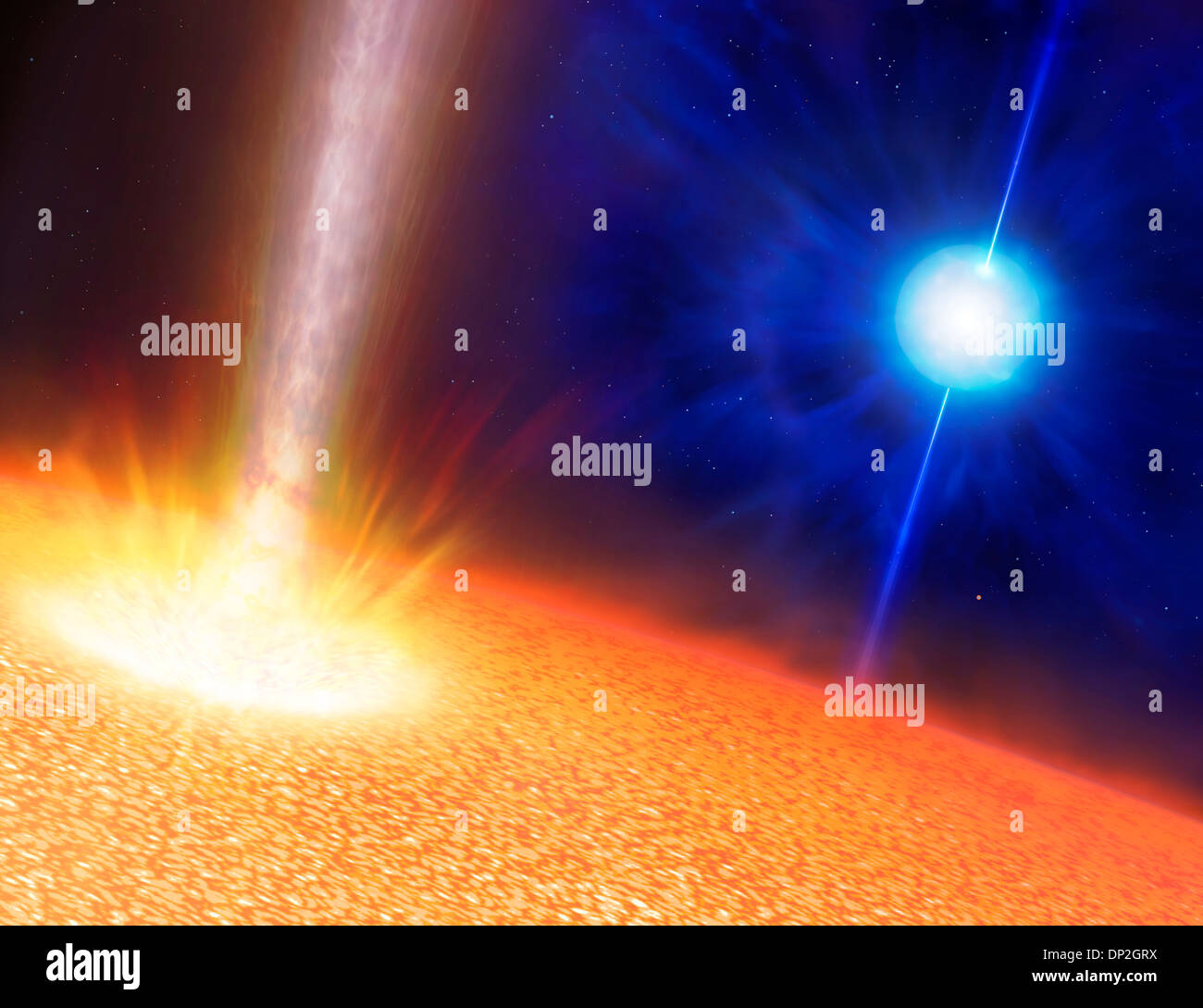 Artwork of a gamma-ray burster Stock Photohttps://www.alamy.com/image-license-details/?v=1https://www.alamy.com/artwork-of-a-gamma-ray-burster-image65210654.html
Artwork of a gamma-ray burster Stock Photohttps://www.alamy.com/image-license-details/?v=1https://www.alamy.com/artwork-of-a-gamma-ray-burster-image65210654.htmlRFDP2GRX–Artwork of a gamma-ray burster
 Long Gamma-Ray Burst Of A Neutron Star. Singularity, Gravitational Waves And Spacetime Concept Stock Photohttps://www.alamy.com/image-license-details/?v=1https://www.alamy.com/long-gamma-ray-burst-of-a-neutron-star-singularity-gravitational-waves-and-spacetime-concept-image213026174.html
Long Gamma-Ray Burst Of A Neutron Star. Singularity, Gravitational Waves And Spacetime Concept Stock Photohttps://www.alamy.com/image-license-details/?v=1https://www.alamy.com/long-gamma-ray-burst-of-a-neutron-star-singularity-gravitational-waves-and-spacetime-concept-image213026174.htmlRFPAG51J–Long Gamma-Ray Burst Of A Neutron Star. Singularity, Gravitational Waves And Spacetime Concept
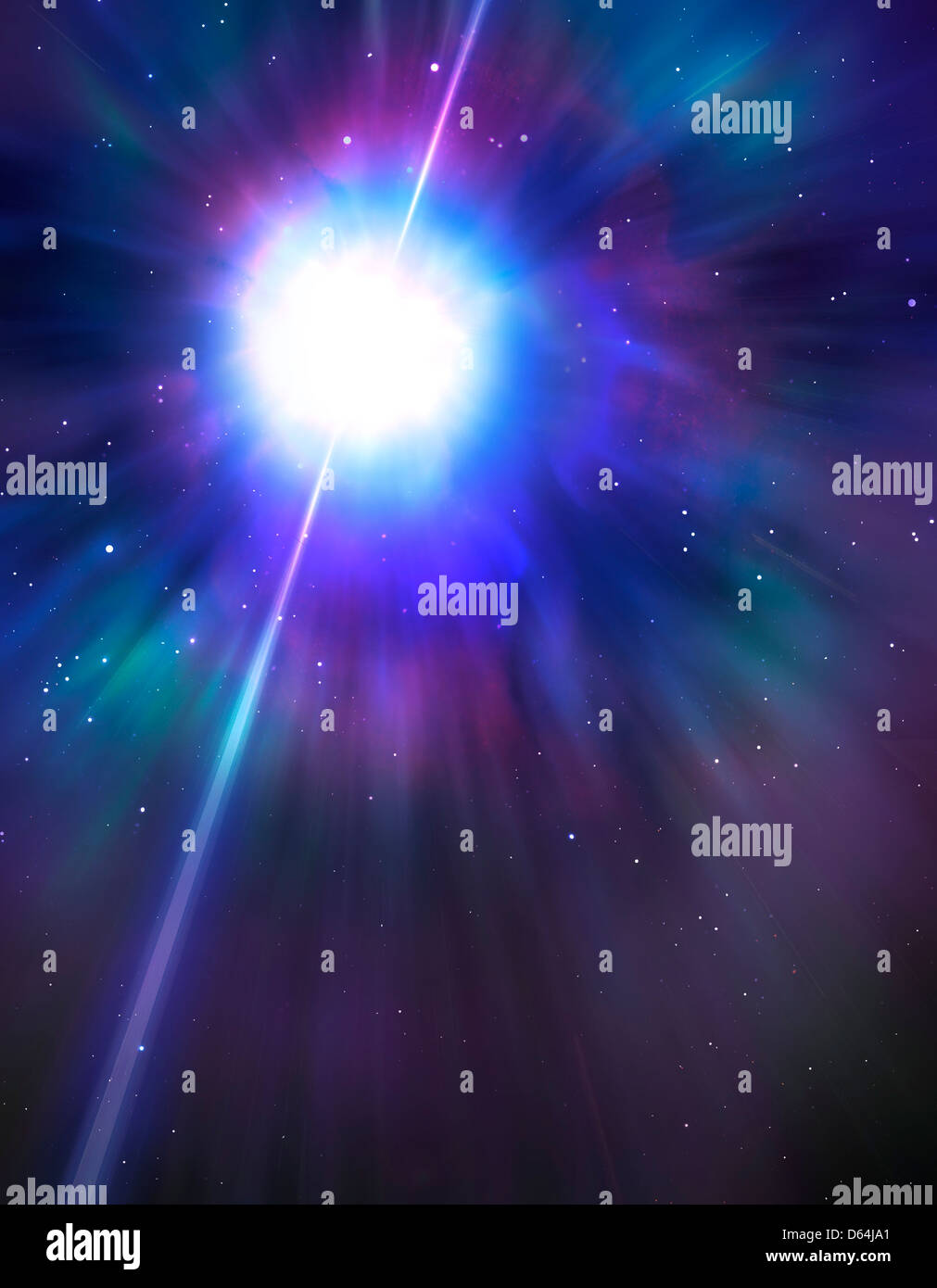 Artwork of a gamma-ray burster Stock Photohttps://www.alamy.com/image-license-details/?v=1https://www.alamy.com/stock-photo-artwork-of-a-gamma-ray-burster-55421241.html
Artwork of a gamma-ray burster Stock Photohttps://www.alamy.com/image-license-details/?v=1https://www.alamy.com/stock-photo-artwork-of-a-gamma-ray-burster-55421241.htmlRFD64JA1–Artwork of a gamma-ray burster
 This artist's impression shows two tiny but very dense neutron stars at the point at which they merge and explode as a kilonova. Such a very rare event is expected to produce both gravitational waves and a short gamma-ray burst, both of which were observed on August 17, 2017, by the Laser Interferometer Gravitational-Wave Observatory (LIGO) and the Virgo Interferometer, and ESA's INTEGRAL telescope and NASA's Fermi Gamma-ray Space Telescope respectively. Subsequent detailed observations with telescopes all over the world, including the NASA/ESA Hubble Space Telescope, confirmed that this objec Stock Photohttps://www.alamy.com/image-license-details/?v=1https://www.alamy.com/this-artists-impression-shows-two-tiny-but-very-dense-neutron-stars-at-the-point-at-which-they-merge-and-explode-as-a-kilonova-such-a-very-rare-event-is-expected-to-produce-both-gravitational-waves-and-a-short-gamma-ray-burst-both-of-which-were-observed-on-august-17-2017-by-the-laser-interferometer-gravitational-wave-observatory-ligo-and-the-virgo-interferometer-and-esas-integral-telescope-and-nasas-fermi-gamma-ray-space-telescope-respectively-subsequent-detailed-observations-with-telescopes-all-over-the-world-including-the-nasaesa-hubble-space-telescope-confirmed-that-this-objec-image258597864.html
This artist's impression shows two tiny but very dense neutron stars at the point at which they merge and explode as a kilonova. Such a very rare event is expected to produce both gravitational waves and a short gamma-ray burst, both of which were observed on August 17, 2017, by the Laser Interferometer Gravitational-Wave Observatory (LIGO) and the Virgo Interferometer, and ESA's INTEGRAL telescope and NASA's Fermi Gamma-ray Space Telescope respectively. Subsequent detailed observations with telescopes all over the world, including the NASA/ESA Hubble Space Telescope, confirmed that this objec Stock Photohttps://www.alamy.com/image-license-details/?v=1https://www.alamy.com/this-artists-impression-shows-two-tiny-but-very-dense-neutron-stars-at-the-point-at-which-they-merge-and-explode-as-a-kilonova-such-a-very-rare-event-is-expected-to-produce-both-gravitational-waves-and-a-short-gamma-ray-burst-both-of-which-were-observed-on-august-17-2017-by-the-laser-interferometer-gravitational-wave-observatory-ligo-and-the-virgo-interferometer-and-esas-integral-telescope-and-nasas-fermi-gamma-ray-space-telescope-respectively-subsequent-detailed-observations-with-telescopes-all-over-the-world-including-the-nasaesa-hubble-space-telescope-confirmed-that-this-objec-image258597864.htmlRMW0M460–This artist's impression shows two tiny but very dense neutron stars at the point at which they merge and explode as a kilonova. Such a very rare event is expected to produce both gravitational waves and a short gamma-ray burst, both of which were observed on August 17, 2017, by the Laser Interferometer Gravitational-Wave Observatory (LIGO) and the Virgo Interferometer, and ESA's INTEGRAL telescope and NASA's Fermi Gamma-ray Space Telescope respectively. Subsequent detailed observations with telescopes all over the world, including the NASA/ESA Hubble Space Telescope, confirmed that this objec
 Neutron stars colliding, illustration. Such a collision is known as a kilonova and produces gravitational waves and a gamma ray burst. Kilonovae are thought to be the origin for all elements heavier than iron in the universe. Stock Photohttps://www.alamy.com/image-license-details/?v=1https://www.alamy.com/neutron-stars-colliding-illustration-such-a-collision-is-known-as-a-kilonova-and-produces-gravitational-waves-and-a-gamma-ray-burst-kilonovae-are-thought-to-be-the-origin-for-all-elements-heavier-than-iron-in-the-universe-image604574122.html
Neutron stars colliding, illustration. Such a collision is known as a kilonova and produces gravitational waves and a gamma ray burst. Kilonovae are thought to be the origin for all elements heavier than iron in the universe. Stock Photohttps://www.alamy.com/image-license-details/?v=1https://www.alamy.com/neutron-stars-colliding-illustration-such-a-collision-is-known-as-a-kilonova-and-produces-gravitational-waves-and-a-gamma-ray-burst-kilonovae-are-thought-to-be-the-origin-for-all-elements-heavier-than-iron-in-the-universe-image604574122.htmlRF2X3GMCX–Neutron stars colliding, illustration. Such a collision is known as a kilonova and produces gravitational waves and a gamma ray burst. Kilonovae are thought to be the origin for all elements heavier than iron in the universe.
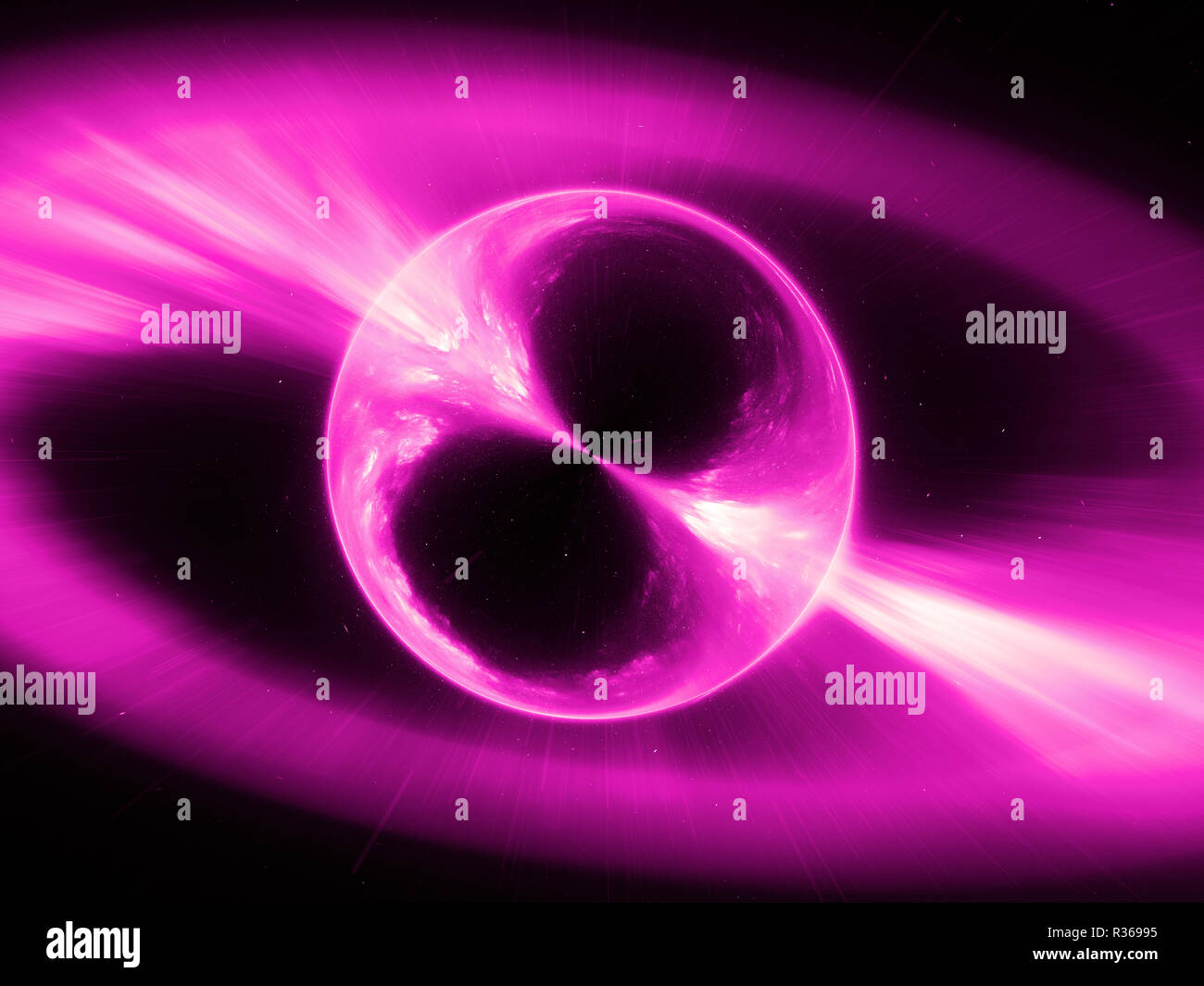 Pink glowing supermassive mysterios object in space gamma ray burst, computer generated abstract background, 3D rendering Stock Photohttps://www.alamy.com/image-license-details/?v=1https://www.alamy.com/pink-glowing-supermassive-mysterios-object-in-space-gamma-ray-burst-computer-generated-abstract-background-3d-rendering-image225717777.html
Pink glowing supermassive mysterios object in space gamma ray burst, computer generated abstract background, 3D rendering Stock Photohttps://www.alamy.com/image-license-details/?v=1https://www.alamy.com/pink-glowing-supermassive-mysterios-object-in-space-gamma-ray-burst-computer-generated-abstract-background-3d-rendering-image225717777.htmlRFR36995–Pink glowing supermassive mysterios object in space gamma ray burst, computer generated abstract background, 3D rendering
 (171022) -- BEIJING, Oct. 22, 2017 () -- Illustration Image shows two merging neutron stars. The narrow beams represent the gamma-ray burst while the rippling spacetime grid indicates the isotropic gravitational waves that characterize the merger. Swirling clouds of material ejected from the merging stars are a possible source of the light that was seen at lower energies. Scientists announced Monday that they have for the first time detected the ripples in space and time known as gravitational waves as well as light from a spectacular collision of two neutron stars. (/National Science Foundati Stock Photohttps://www.alamy.com/image-license-details/?v=1https://www.alamy.com/171022-beijing-oct-22-2017-illustration-image-shows-two-merging-neutron-stars-the-narrow-beams-represent-the-gamma-ray-burst-while-the-rippling-spacetime-grid-indicates-the-isotropic-gravitational-waves-that-characterize-the-merger-swirling-clouds-of-material-ejected-from-the-merging-stars-are-a-possible-source-of-the-light-that-was-seen-at-lower-energies-scientists-announced-monday-that-they-have-for-the-first-time-detected-the-ripples-in-space-and-time-known-as-gravitational-waves-as-well-as-light-from-a-spectacular-collision-of-two-neutron-stars-national-science-foundati-image564166219.html
(171022) -- BEIJING, Oct. 22, 2017 () -- Illustration Image shows two merging neutron stars. The narrow beams represent the gamma-ray burst while the rippling spacetime grid indicates the isotropic gravitational waves that characterize the merger. Swirling clouds of material ejected from the merging stars are a possible source of the light that was seen at lower energies. Scientists announced Monday that they have for the first time detected the ripples in space and time known as gravitational waves as well as light from a spectacular collision of two neutron stars. (/National Science Foundati Stock Photohttps://www.alamy.com/image-license-details/?v=1https://www.alamy.com/171022-beijing-oct-22-2017-illustration-image-shows-two-merging-neutron-stars-the-narrow-beams-represent-the-gamma-ray-burst-while-the-rippling-spacetime-grid-indicates-the-isotropic-gravitational-waves-that-characterize-the-merger-swirling-clouds-of-material-ejected-from-the-merging-stars-are-a-possible-source-of-the-light-that-was-seen-at-lower-energies-scientists-announced-monday-that-they-have-for-the-first-time-detected-the-ripples-in-space-and-time-known-as-gravitational-waves-as-well-as-light-from-a-spectacular-collision-of-two-neutron-stars-national-science-foundati-image564166219.htmlRM2RNRYNF–(171022) -- BEIJING, Oct. 22, 2017 () -- Illustration Image shows two merging neutron stars. The narrow beams represent the gamma-ray burst while the rippling spacetime grid indicates the isotropic gravitational waves that characterize the merger. Swirling clouds of material ejected from the merging stars are a possible source of the light that was seen at lower energies. Scientists announced Monday that they have for the first time detected the ripples in space and time known as gravitational waves as well as light from a spectacular collision of two neutron stars. (/National Science Foundati
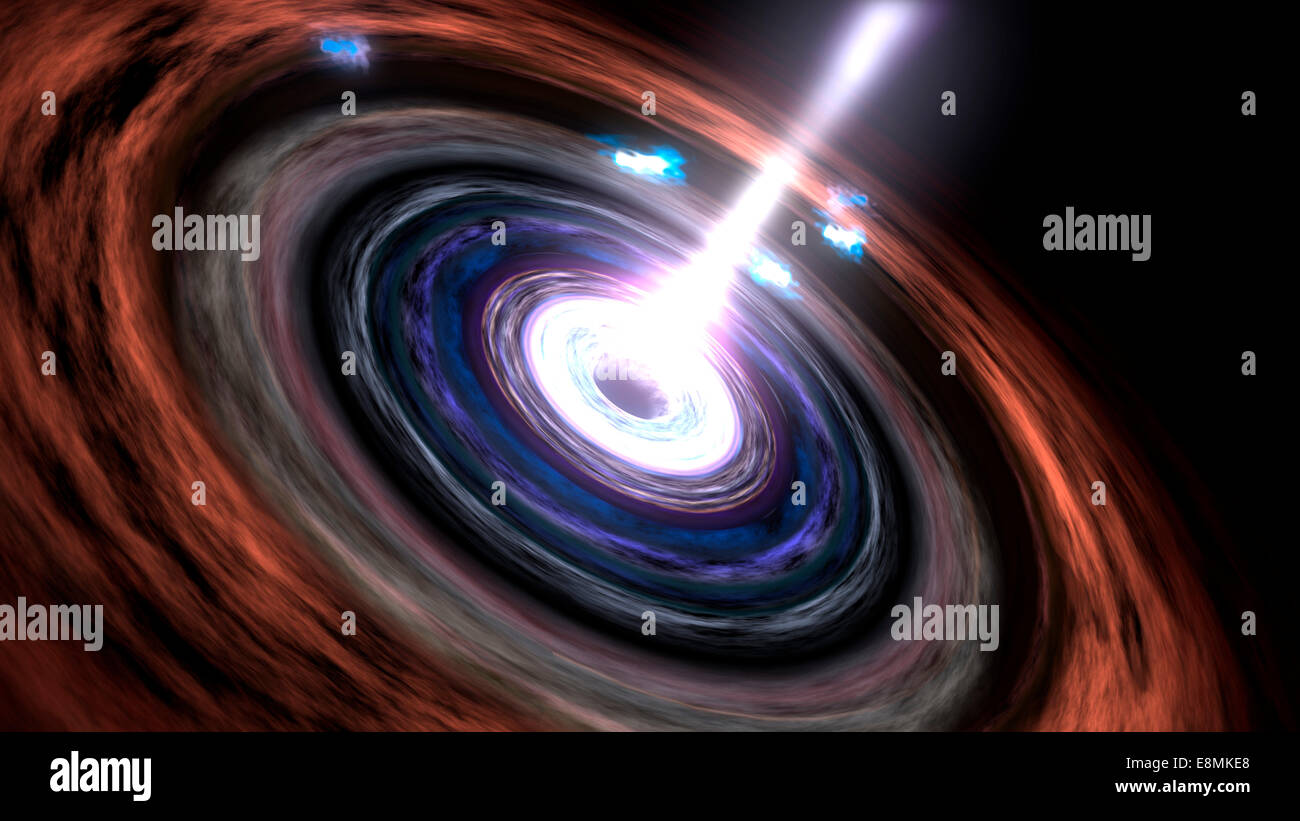 Gamma Rays in Active Galactic Nuclei Stock Photohttps://www.alamy.com/image-license-details/?v=1https://www.alamy.com/stock-photo-gamma-rays-in-active-galactic-nuclei-74213056.html
Gamma Rays in Active Galactic Nuclei Stock Photohttps://www.alamy.com/image-license-details/?v=1https://www.alamy.com/stock-photo-gamma-rays-in-active-galactic-nuclei-74213056.htmlRFE8MKE8–Gamma Rays in Active Galactic Nuclei
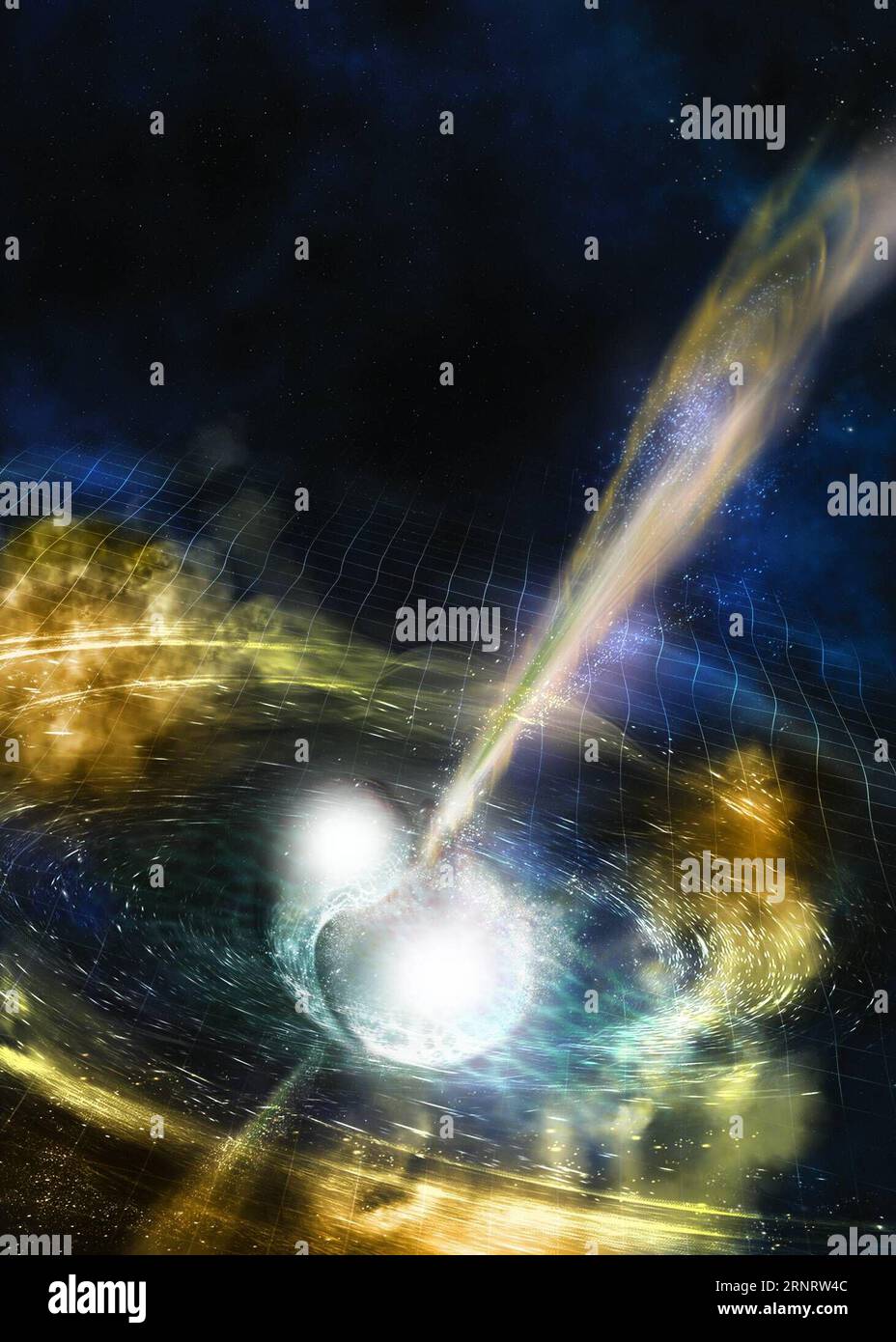 (171016) -- WASHINGTON, Oct. 16, 2017 () -- Illustration Image shows two merging neutron stars. The narrow beams represent the gamma-ray burst while the rippling spacetime grid indicates the isotropic gravitational waves that characterize the merger. Swirling clouds of material ejected from the merging stars are a possible source of the light that was seen at lower energies. Scientists announced Monday that they have for the first time detected the ripples in space and time known as gravitational waves as well as light from a spectacular collision of two neutron stars. (/National Science Found Stock Photohttps://www.alamy.com/image-license-details/?v=1https://www.alamy.com/171016-washington-oct-16-2017-illustration-image-shows-two-merging-neutron-stars-the-narrow-beams-represent-the-gamma-ray-burst-while-the-rippling-spacetime-grid-indicates-the-isotropic-gravitational-waves-that-characterize-the-merger-swirling-clouds-of-material-ejected-from-the-merging-stars-are-a-possible-source-of-the-light-that-was-seen-at-lower-energies-scientists-announced-monday-that-they-have-for-the-first-time-detected-the-ripples-in-space-and-time-known-as-gravitational-waves-as-well-as-light-from-a-spectacular-collision-of-two-neutron-stars-national-science-found-image564164172.html
(171016) -- WASHINGTON, Oct. 16, 2017 () -- Illustration Image shows two merging neutron stars. The narrow beams represent the gamma-ray burst while the rippling spacetime grid indicates the isotropic gravitational waves that characterize the merger. Swirling clouds of material ejected from the merging stars are a possible source of the light that was seen at lower energies. Scientists announced Monday that they have for the first time detected the ripples in space and time known as gravitational waves as well as light from a spectacular collision of two neutron stars. (/National Science Found Stock Photohttps://www.alamy.com/image-license-details/?v=1https://www.alamy.com/171016-washington-oct-16-2017-illustration-image-shows-two-merging-neutron-stars-the-narrow-beams-represent-the-gamma-ray-burst-while-the-rippling-spacetime-grid-indicates-the-isotropic-gravitational-waves-that-characterize-the-merger-swirling-clouds-of-material-ejected-from-the-merging-stars-are-a-possible-source-of-the-light-that-was-seen-at-lower-energies-scientists-announced-monday-that-they-have-for-the-first-time-detected-the-ripples-in-space-and-time-known-as-gravitational-waves-as-well-as-light-from-a-spectacular-collision-of-two-neutron-stars-national-science-found-image564164172.htmlRM2RNRW4C–(171016) -- WASHINGTON, Oct. 16, 2017 () -- Illustration Image shows two merging neutron stars. The narrow beams represent the gamma-ray burst while the rippling spacetime grid indicates the isotropic gravitational waves that characterize the merger. Swirling clouds of material ejected from the merging stars are a possible source of the light that was seen at lower energies. Scientists announced Monday that they have for the first time detected the ripples in space and time known as gravitational waves as well as light from a spectacular collision of two neutron stars. (/National Science Found
 NASA's Fermi Gamma-Ray Space Telescope Launched in a Delta II Rocket on June 11, 2008 Stock Photohttps://www.alamy.com/image-license-details/?v=1https://www.alamy.com/stock-photo-nasas-fermi-gamma-ray-space-telescope-launched-in-a-delta-ii-rocket-19151618.html
NASA's Fermi Gamma-Ray Space Telescope Launched in a Delta II Rocket on June 11, 2008 Stock Photohttps://www.alamy.com/image-license-details/?v=1https://www.alamy.com/stock-photo-nasas-fermi-gamma-ray-space-telescope-launched-in-a-delta-ii-rocket-19151618.htmlRFB34C2A–NASA's Fermi Gamma-Ray Space Telescope Launched in a Delta II Rocket on June 11, 2008
 An artist's depiction of a black hole in interstellar space pulling in gas and dust that start to heat. Gamma ray bursts exit at Stock Photohttps://www.alamy.com/image-license-details/?v=1https://www.alamy.com/stock-photo-an-artists-depiction-of-a-black-hole-in-interstellar-space-pulling-79707539.html
An artist's depiction of a black hole in interstellar space pulling in gas and dust that start to heat. Gamma ray bursts exit at Stock Photohttps://www.alamy.com/image-license-details/?v=1https://www.alamy.com/stock-photo-an-artists-depiction-of-a-black-hole-in-interstellar-space-pulling-79707539.htmlRFEHJYNR–An artist's depiction of a black hole in interstellar space pulling in gas and dust that start to heat. Gamma ray bursts exit at
 Blue quasar storm in space. Concept of blue sun star with energy clouds and jets. Stock Photohttps://www.alamy.com/image-license-details/?v=1https://www.alamy.com/stock-photo-blue-quasar-storm-in-space-concept-of-blue-sun-star-with-energy-clouds-176052771.html
Blue quasar storm in space. Concept of blue sun star with energy clouds and jets. Stock Photohttps://www.alamy.com/image-license-details/?v=1https://www.alamy.com/stock-photo-blue-quasar-storm-in-space-concept-of-blue-sun-star-with-energy-clouds-176052771.htmlRFM6BW2Y–Blue quasar storm in space. Concept of blue sun star with energy clouds and jets.
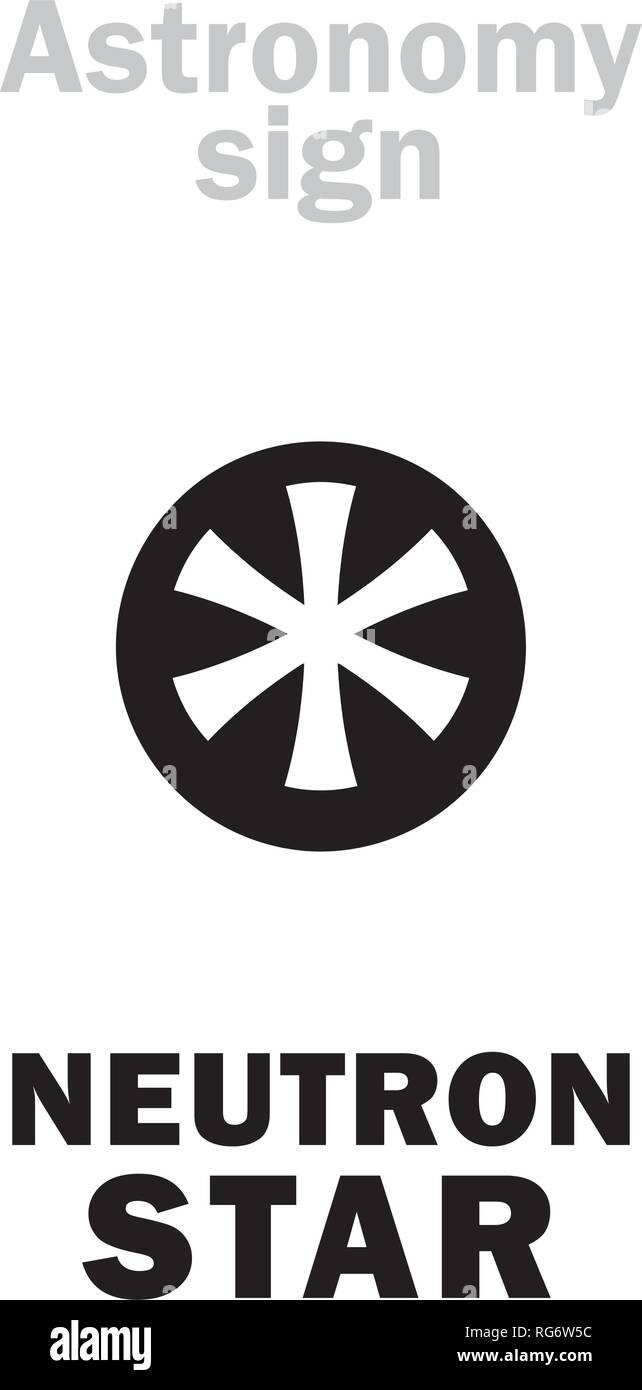 Astrology Alphabet: NEUTRON STAR, small cold but superdense Collapsed Dead Star emitting faint glow and Lethal Rays. Enigmatic phenomenon in Universe. Stock Vectorhttps://www.alamy.com/image-license-details/?v=1https://www.alamy.com/astrology-alphabet-neutron-star-small-cold-but-superdense-collapsed-dead-star-emitting-faint-glow-and-lethal-rays-enigmatic-phenomenon-in-universe-image233720744.html
Astrology Alphabet: NEUTRON STAR, small cold but superdense Collapsed Dead Star emitting faint glow and Lethal Rays. Enigmatic phenomenon in Universe. Stock Vectorhttps://www.alamy.com/image-license-details/?v=1https://www.alamy.com/astrology-alphabet-neutron-star-small-cold-but-superdense-collapsed-dead-star-emitting-faint-glow-and-lethal-rays-enigmatic-phenomenon-in-universe-image233720744.htmlRFRG6W5C–Astrology Alphabet: NEUTRON STAR, small cold but superdense Collapsed Dead Star emitting faint glow and Lethal Rays. Enigmatic phenomenon in Universe.
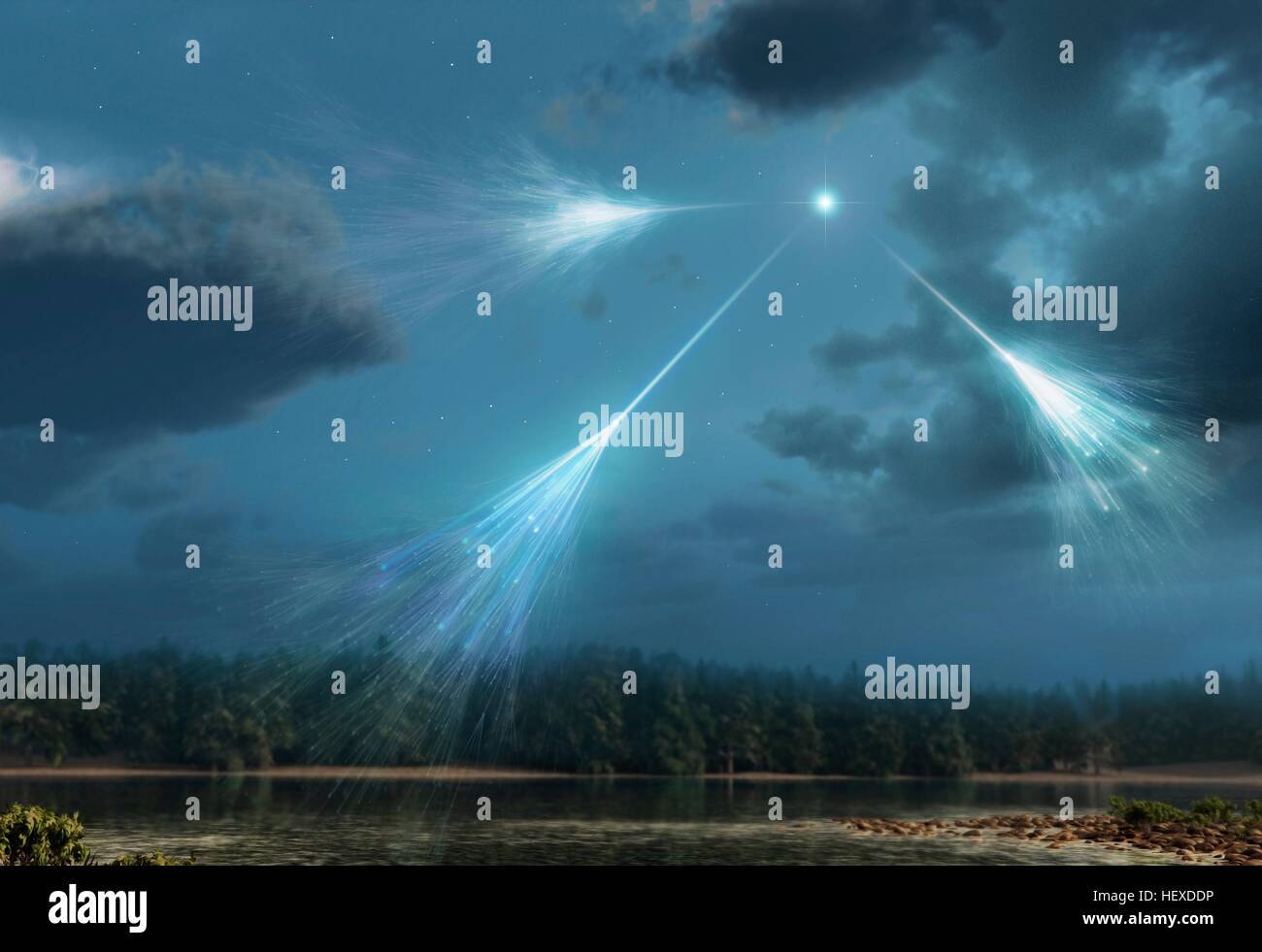 Cosmic rays.Artwork of high-energy particles radiation from star in deep space (cosmic rays) impacting molecules atoms in Earth's atmosphere.These primary impacts cause secondary cascade of subatomic particles.Detection analysis of these particles,which include protons,neutrons,light nuclei,neutrinos,pions,and muons,can reveal source of cosmic rays.These sources may include gamma ray bursts (GRBs),active galactic nuclei,supernovae quasars.Such research is carried out atmospheric balloons,or advanced detectors built underground or underwater,to shield them from other radiation. Stock Photohttps://www.alamy.com/image-license-details/?v=1https://www.alamy.com/stock-photo-cosmic-raysartwork-of-high-energy-particles-radiation-from-star-in-129659090.html
Cosmic rays.Artwork of high-energy particles radiation from star in deep space (cosmic rays) impacting molecules atoms in Earth's atmosphere.These primary impacts cause secondary cascade of subatomic particles.Detection analysis of these particles,which include protons,neutrons,light nuclei,neutrinos,pions,and muons,can reveal source of cosmic rays.These sources may include gamma ray bursts (GRBs),active galactic nuclei,supernovae quasars.Such research is carried out atmospheric balloons,or advanced detectors built underground or underwater,to shield them from other radiation. Stock Photohttps://www.alamy.com/image-license-details/?v=1https://www.alamy.com/stock-photo-cosmic-raysartwork-of-high-energy-particles-radiation-from-star-in-129659090.htmlRFHEXDDP–Cosmic rays.Artwork of high-energy particles radiation from star in deep space (cosmic rays) impacting molecules atoms in Earth's atmosphere.These primary impacts cause secondary cascade of subatomic particles.Detection analysis of these particles,which include protons,neutrons,light nuclei,neutrinos,pions,and muons,can reveal source of cosmic rays.These sources may include gamma ray bursts (GRBs),active galactic nuclei,supernovae quasars.Such research is carried out atmospheric balloons,or advanced detectors built underground or underwater,to shield them from other radiation.
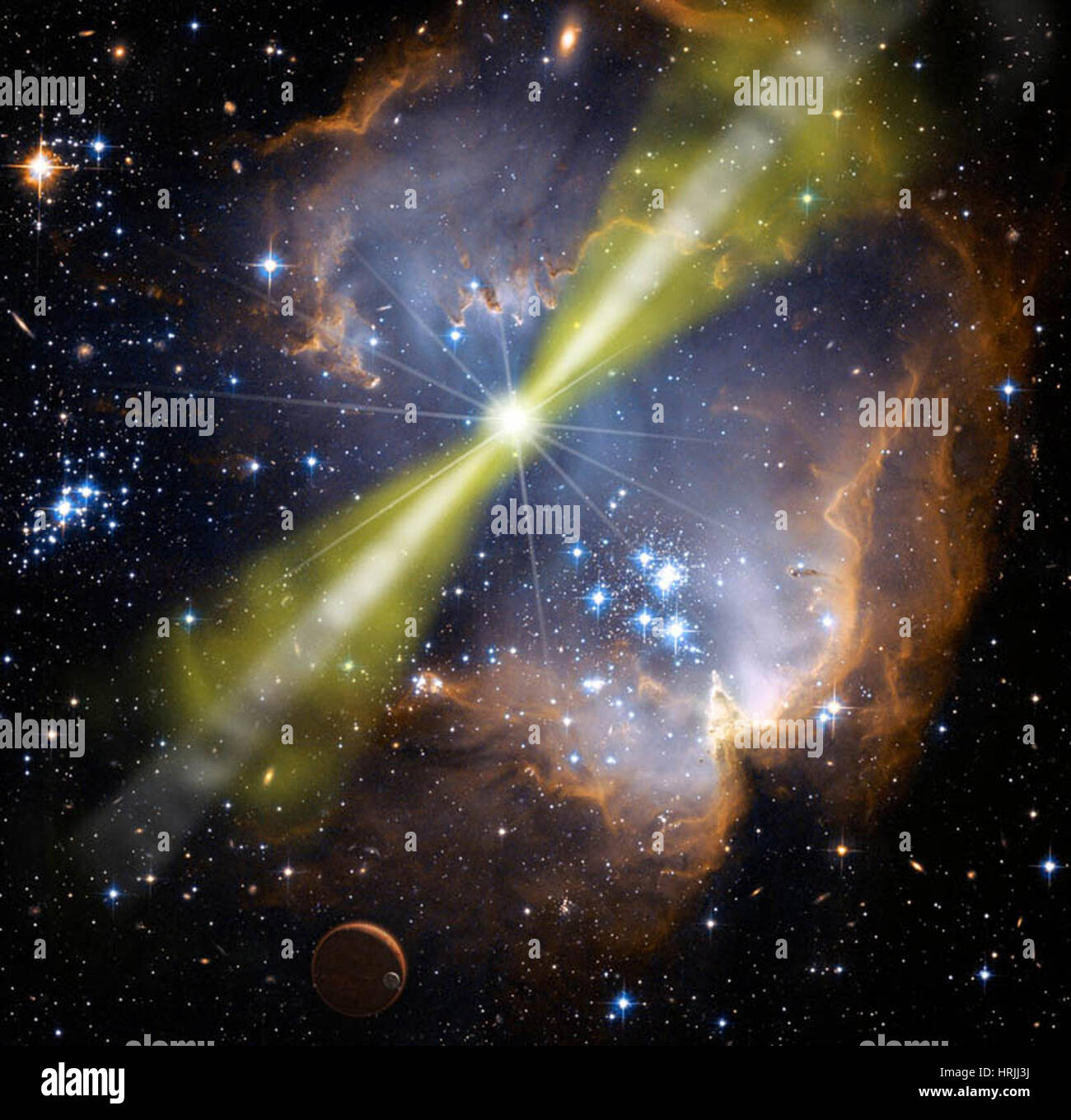 Gamma Ray Burst Stock Photohttps://www.alamy.com/image-license-details/?v=1https://www.alamy.com/stock-photo-gamma-ray-burst-135019014.html
Gamma Ray Burst Stock Photohttps://www.alamy.com/image-license-details/?v=1https://www.alamy.com/stock-photo-gamma-ray-burst-135019014.htmlRMHRJJ3J–Gamma Ray Burst
 Astrology: PULSAR (Impulse Rays) Stock Photohttps://www.alamy.com/image-license-details/?v=1https://www.alamy.com/astrology-pulsar-impulse-rays-image274240436.html
Astrology: PULSAR (Impulse Rays) Stock Photohttps://www.alamy.com/image-license-details/?v=1https://www.alamy.com/astrology-pulsar-impulse-rays-image274240436.htmlRMWX4MD8–Astrology: PULSAR (Impulse Rays)
 Civilization Destroyed By A Gamma - Ray Burst. Stock Photohttps://www.alamy.com/image-license-details/?v=1https://www.alamy.com/stock-image-civilization-destroyed-by-a-gamma-ray-burst-164114677.html
Civilization Destroyed By A Gamma - Ray Burst. Stock Photohttps://www.alamy.com/image-license-details/?v=1https://www.alamy.com/stock-image-civilization-destroyed-by-a-gamma-ray-burst-164114677.htmlRMKF01XD–Civilization Destroyed By A Gamma - Ray Burst.
 Rainbow Sunburst Background.Colorful smooth banner template. Stock Photohttps://www.alamy.com/image-license-details/?v=1https://www.alamy.com/stock-image-rainbow-sunburst-backgroundcolorful-smooth-banner-template-164424498.html
Rainbow Sunburst Background.Colorful smooth banner template. Stock Photohttps://www.alamy.com/image-license-details/?v=1https://www.alamy.com/stock-image-rainbow-sunburst-backgroundcolorful-smooth-banner-template-164424498.htmlRFKFE53E–Rainbow Sunburst Background.Colorful smooth banner template.
 (231117) -- BEIJING, Nov. 17, 2023 (Xinhua) -- Chen Songzhan, the corresponding author of the study and a researcher at the Institute of High Energy Physics (IHEP) of the Chinese Academy of Sciences, introduces research findings at the IHEP of the Chinese Academy of Sciences in Beijing, capital of China, on Nov. 14, 2023. China's Large High Altitude Air Shower Observatory (LHAASO), a high-altitude cosmic ray observatory, has released the precise energy spectrum for the highest-energy gamma-ray radiation from the brightest gamma-ray burst (GRB) observed to date. The study, conducted by the LH Stock Photohttps://www.alamy.com/image-license-details/?v=1https://www.alamy.com/231117-beijing-nov-17-2023-xinhua-chen-songzhan-the-corresponding-author-of-the-study-and-a-researcher-at-the-institute-of-high-energy-physics-ihep-of-the-chinese-academy-of-sciences-introduces-research-findings-at-the-ihep-of-the-chinese-academy-of-sciences-in-beijing-capital-of-china-on-nov-14-2023-chinas-large-high-altitude-air-shower-observatory-lhaaso-a-high-altitude-cosmic-ray-observatory-has-released-the-precise-energy-spectrum-for-the-highest-energy-gamma-ray-radiation-from-the-brightest-gamma-ray-burst-grb-observed-to-date-the-study-conducted-by-the-lh-image572742816.html
(231117) -- BEIJING, Nov. 17, 2023 (Xinhua) -- Chen Songzhan, the corresponding author of the study and a researcher at the Institute of High Energy Physics (IHEP) of the Chinese Academy of Sciences, introduces research findings at the IHEP of the Chinese Academy of Sciences in Beijing, capital of China, on Nov. 14, 2023. China's Large High Altitude Air Shower Observatory (LHAASO), a high-altitude cosmic ray observatory, has released the precise energy spectrum for the highest-energy gamma-ray radiation from the brightest gamma-ray burst (GRB) observed to date. The study, conducted by the LH Stock Photohttps://www.alamy.com/image-license-details/?v=1https://www.alamy.com/231117-beijing-nov-17-2023-xinhua-chen-songzhan-the-corresponding-author-of-the-study-and-a-researcher-at-the-institute-of-high-energy-physics-ihep-of-the-chinese-academy-of-sciences-introduces-research-findings-at-the-ihep-of-the-chinese-academy-of-sciences-in-beijing-capital-of-china-on-nov-14-2023-chinas-large-high-altitude-air-shower-observatory-lhaaso-a-high-altitude-cosmic-ray-observatory-has-released-the-precise-energy-spectrum-for-the-highest-energy-gamma-ray-radiation-from-the-brightest-gamma-ray-burst-grb-observed-to-date-the-study-conducted-by-the-lh-image572742816.htmlRM2T7PK8G–(231117) -- BEIJING, Nov. 17, 2023 (Xinhua) -- Chen Songzhan, the corresponding author of the study and a researcher at the Institute of High Energy Physics (IHEP) of the Chinese Academy of Sciences, introduces research findings at the IHEP of the Chinese Academy of Sciences in Beijing, capital of China, on Nov. 14, 2023. China's Large High Altitude Air Shower Observatory (LHAASO), a high-altitude cosmic ray observatory, has released the precise energy spectrum for the highest-energy gamma-ray radiation from the brightest gamma-ray burst (GRB) observed to date. The study, conducted by the LH
 May 2, 2023 - USA - Two neutron stars begin to merge in this illustration, blasting a jet of high-speed particles and producing a cloud of debris. These gamma-ray bursts (GRBs) are the most powerful events in the universe. Scientists think these kinds of events are factories for a significant portion of the universe's heavy elements, including gold. They based their estimates on the rate of short burst GRBs thought to occur across the cosmos, but a Dec. 11, 2021, discovery showed they'll need to factor long bursts into their calculations as well. (Credit Image: © Sonoma State Univ./NASA/ZUMA P Stock Photohttps://www.alamy.com/image-license-details/?v=1https://www.alamy.com/may-2-2023-usa-two-neutron-stars-begin-to-merge-in-this-illustration-blasting-a-jet-of-high-speed-particles-and-producing-a-cloud-of-debris-these-gamma-ray-bursts-grbs-are-the-most-powerful-events-in-the-universe-scientists-think-these-kinds-of-events-are-factories-for-a-significant-portion-of-the-universes-heavy-elements-including-gold-they-based-their-estimates-on-the-rate-of-short-burst-grbs-thought-to-occur-across-the-cosmos-but-a-dec-11-2021-discovery-showed-theyll-need-to-factor-long-bursts-into-their-calculations-as-well-credit-image-sonoma-state-univnasazuma-p-image550461217.html
May 2, 2023 - USA - Two neutron stars begin to merge in this illustration, blasting a jet of high-speed particles and producing a cloud of debris. These gamma-ray bursts (GRBs) are the most powerful events in the universe. Scientists think these kinds of events are factories for a significant portion of the universe's heavy elements, including gold. They based their estimates on the rate of short burst GRBs thought to occur across the cosmos, but a Dec. 11, 2021, discovery showed they'll need to factor long bursts into their calculations as well. (Credit Image: © Sonoma State Univ./NASA/ZUMA P Stock Photohttps://www.alamy.com/image-license-details/?v=1https://www.alamy.com/may-2-2023-usa-two-neutron-stars-begin-to-merge-in-this-illustration-blasting-a-jet-of-high-speed-particles-and-producing-a-cloud-of-debris-these-gamma-ray-bursts-grbs-are-the-most-powerful-events-in-the-universe-scientists-think-these-kinds-of-events-are-factories-for-a-significant-portion-of-the-universes-heavy-elements-including-gold-they-based-their-estimates-on-the-rate-of-short-burst-grbs-thought-to-occur-across-the-cosmos-but-a-dec-11-2021-discovery-showed-theyll-need-to-factor-long-bursts-into-their-calculations-as-well-credit-image-sonoma-state-univnasazuma-p-image550461217.htmlRM2PYFJW5–May 2, 2023 - USA - Two neutron stars begin to merge in this illustration, blasting a jet of high-speed particles and producing a cloud of debris. These gamma-ray bursts (GRBs) are the most powerful events in the universe. Scientists think these kinds of events are factories for a significant portion of the universe's heavy elements, including gold. They based their estimates on the rate of short burst GRBs thought to occur across the cosmos, but a Dec. 11, 2021, discovery showed they'll need to factor long bursts into their calculations as well. (Credit Image: © Sonoma State Univ./NASA/ZUMA P
 (231117) -- BEIJING, Nov. 17, 2023 (Xinhua) -- This aerial photo taken on April 21, 2023 shows the Large High Altitude Air Shower Observatory (LHAASO) about 4,410 meters above sea level in southwest China's Sichuan Province. China's Large High Altitude Air Shower Observatory (LHAASO), a high-altitude cosmic ray observatory, has released the precise energy spectrum for the highest-energy gamma-ray radiation from the brightest gamma-ray burst (GRB) observed to date. The study, conducted by the LHAASO collaboration team, was led by the Institute of High Energy Physics of the Chinese Academy of Stock Photohttps://www.alamy.com/image-license-details/?v=1https://www.alamy.com/231117-beijing-nov-17-2023-xinhua-this-aerial-photo-taken-on-april-21-2023-shows-the-large-high-altitude-air-shower-observatory-lhaaso-about-4410-meters-above-sea-level-in-southwest-chinas-sichuan-province-chinas-large-high-altitude-air-shower-observatory-lhaaso-a-high-altitude-cosmic-ray-observatory-has-released-the-precise-energy-spectrum-for-the-highest-energy-gamma-ray-radiation-from-the-brightest-gamma-ray-burst-grb-observed-to-date-the-study-conducted-by-the-lhaaso-collaboration-team-was-led-by-the-institute-of-high-energy-physics-of-the-chinese-academy-of-image572742815.html
(231117) -- BEIJING, Nov. 17, 2023 (Xinhua) -- This aerial photo taken on April 21, 2023 shows the Large High Altitude Air Shower Observatory (LHAASO) about 4,410 meters above sea level in southwest China's Sichuan Province. China's Large High Altitude Air Shower Observatory (LHAASO), a high-altitude cosmic ray observatory, has released the precise energy spectrum for the highest-energy gamma-ray radiation from the brightest gamma-ray burst (GRB) observed to date. The study, conducted by the LHAASO collaboration team, was led by the Institute of High Energy Physics of the Chinese Academy of Stock Photohttps://www.alamy.com/image-license-details/?v=1https://www.alamy.com/231117-beijing-nov-17-2023-xinhua-this-aerial-photo-taken-on-april-21-2023-shows-the-large-high-altitude-air-shower-observatory-lhaaso-about-4410-meters-above-sea-level-in-southwest-chinas-sichuan-province-chinas-large-high-altitude-air-shower-observatory-lhaaso-a-high-altitude-cosmic-ray-observatory-has-released-the-precise-energy-spectrum-for-the-highest-energy-gamma-ray-radiation-from-the-brightest-gamma-ray-burst-grb-observed-to-date-the-study-conducted-by-the-lhaaso-collaboration-team-was-led-by-the-institute-of-high-energy-physics-of-the-chinese-academy-of-image572742815.htmlRM2T7PK8F–(231117) -- BEIJING, Nov. 17, 2023 (Xinhua) -- This aerial photo taken on April 21, 2023 shows the Large High Altitude Air Shower Observatory (LHAASO) about 4,410 meters above sea level in southwest China's Sichuan Province. China's Large High Altitude Air Shower Observatory (LHAASO), a high-altitude cosmic ray observatory, has released the precise energy spectrum for the highest-energy gamma-ray radiation from the brightest gamma-ray burst (GRB) observed to date. The study, conducted by the LHAASO collaboration team, was led by the Institute of High Energy Physics of the Chinese Academy of
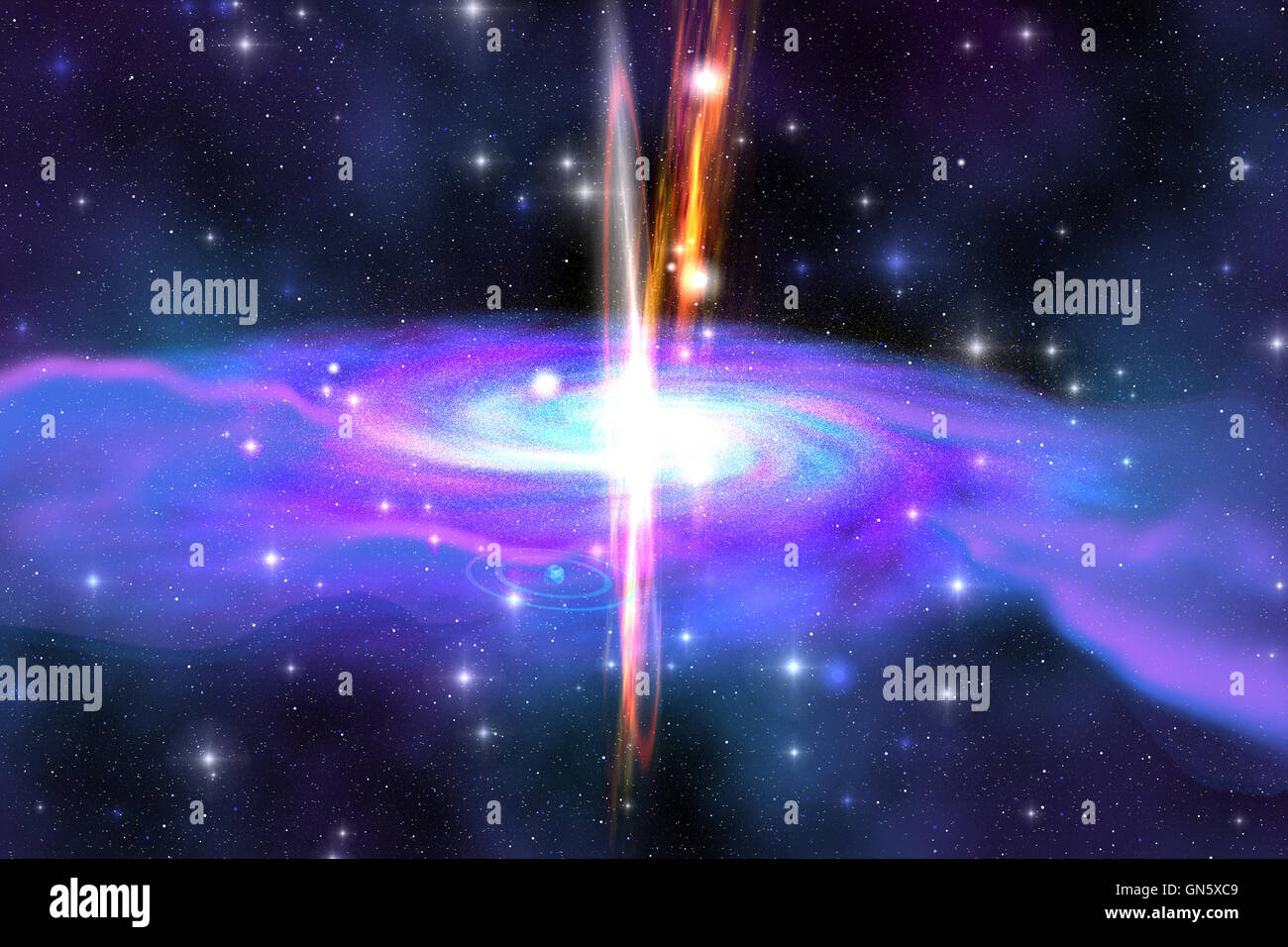 Stellar Black Hole Stock Photohttps://www.alamy.com/image-license-details/?v=1https://www.alamy.com/stock-photo-stellar-black-hole-116300473.html
Stellar Black Hole Stock Photohttps://www.alamy.com/image-license-details/?v=1https://www.alamy.com/stock-photo-stellar-black-hole-116300473.htmlRFGN5XC9–Stellar Black Hole
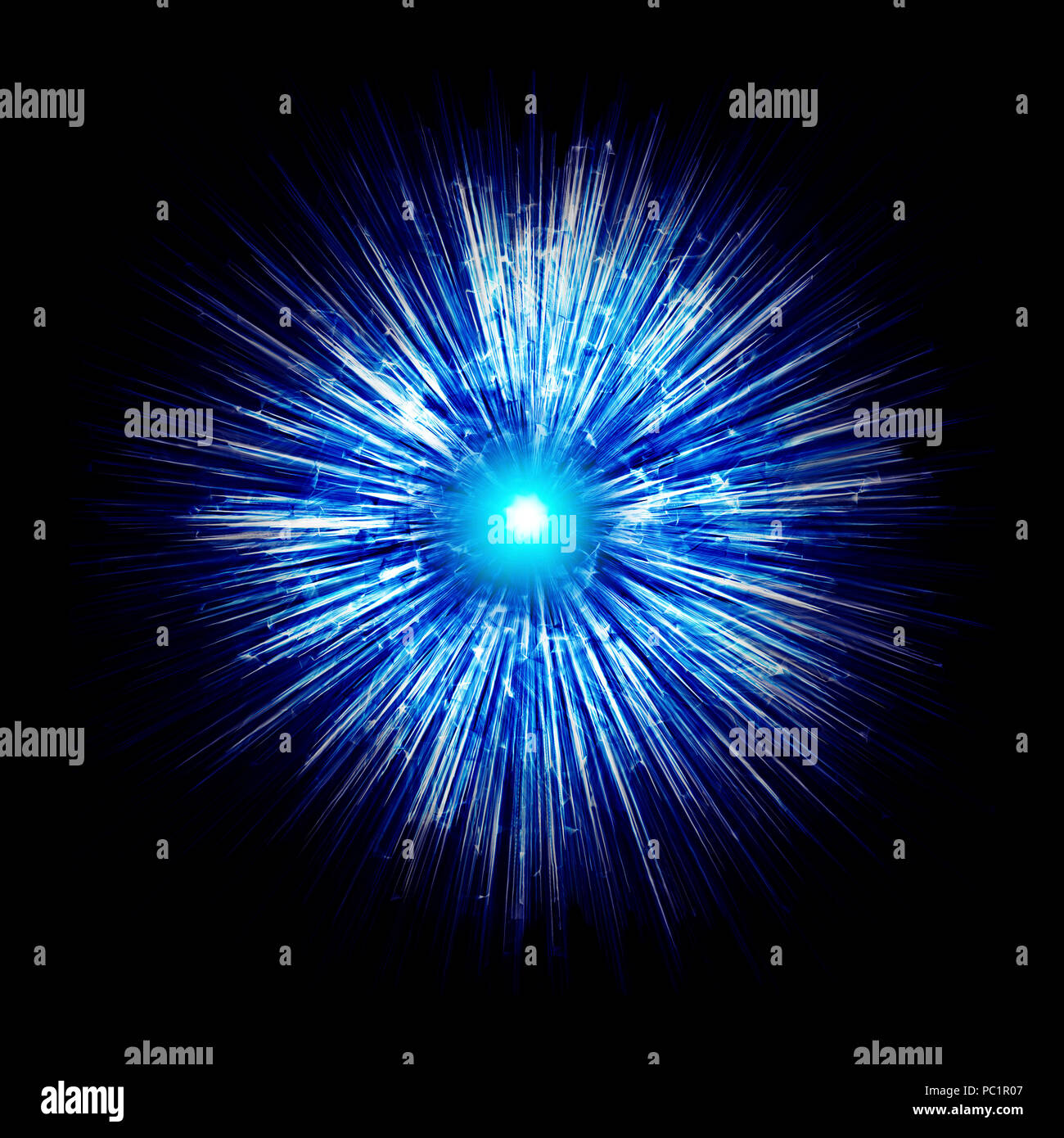 Exploding Neutron Star. Singularity, Gravitational Waves And Spacetime Concept Stock Photohttps://www.alamy.com/image-license-details/?v=1https://www.alamy.com/exploding-neutron-star-singularity-gravitational-waves-and-spacetime-concept-image213940279.html
Exploding Neutron Star. Singularity, Gravitational Waves And Spacetime Concept Stock Photohttps://www.alamy.com/image-license-details/?v=1https://www.alamy.com/exploding-neutron-star-singularity-gravitational-waves-and-spacetime-concept-image213940279.htmlRFPC1R07–Exploding Neutron Star. Singularity, Gravitational Waves And Spacetime Concept
 /block/WORK/ROSETTAGRB/.IMAGESRC/OLIVEPIT/H OLIVEPIT00236.tif Type 1c Gamma Ray Burst 01 Stock Photohttps://www.alamy.com/image-license-details/?v=1https://www.alamy.com/stock-image-blockworkrosettagrbimagesrcolivepith-olivepit00236tif-type-1c-gamma-169345261.html
/block/WORK/ROSETTAGRB/.IMAGESRC/OLIVEPIT/H OLIVEPIT00236.tif Type 1c Gamma Ray Burst 01 Stock Photohttps://www.alamy.com/image-license-details/?v=1https://www.alamy.com/stock-image-blockworkrosettagrbimagesrcolivepith-olivepit00236tif-type-1c-gamma-169345261.htmlRMKRE9H1–/block/WORK/ROSETTAGRB/.IMAGESRC/OLIVEPIT/H OLIVEPIT00236.tif Type 1c Gamma Ray Burst 01
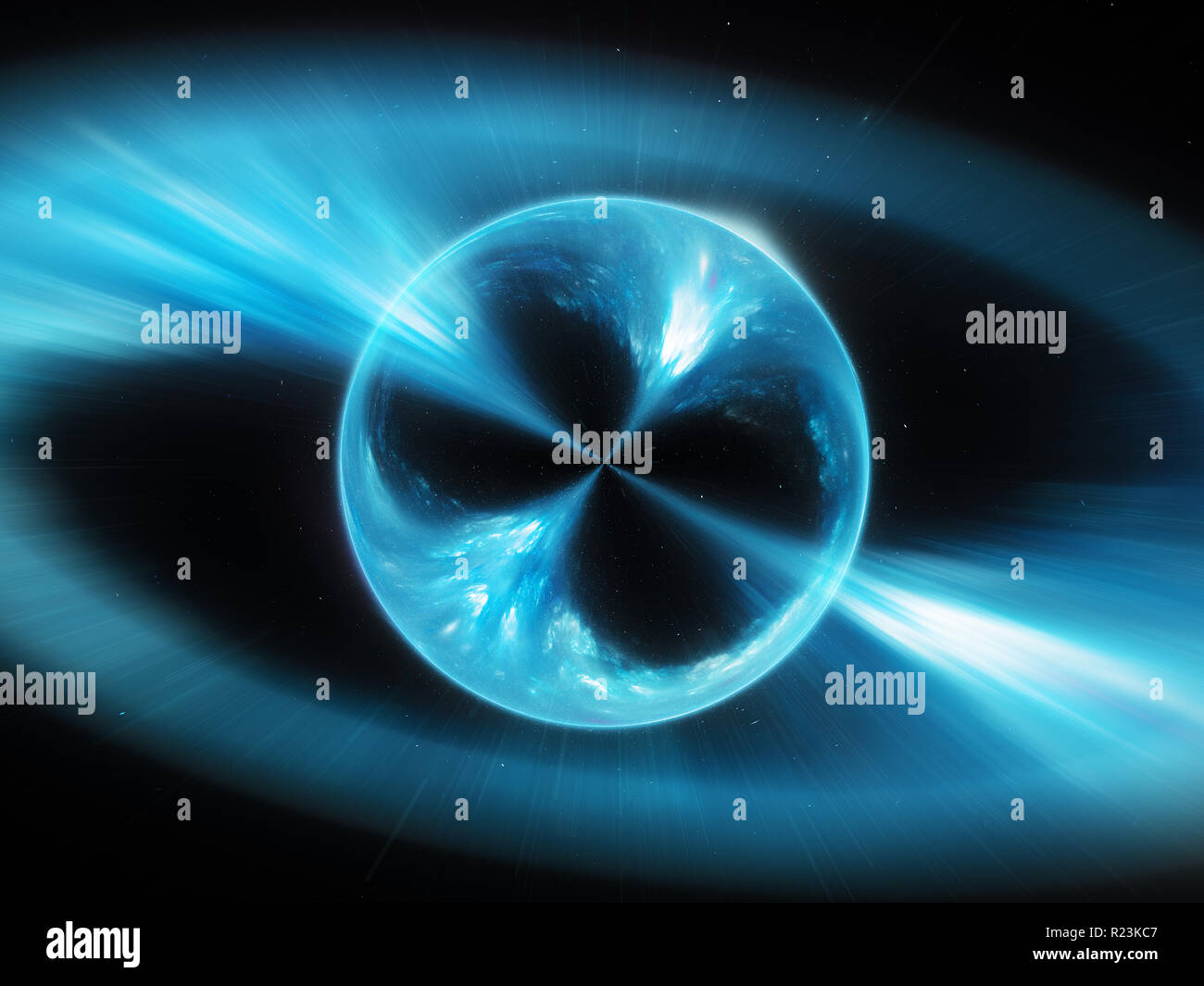 Blue glowing supermassive mysterios object in space gamma ray burst, computer generated abstract background, 3D rendering Stock Photohttps://www.alamy.com/image-license-details/?v=1https://www.alamy.com/blue-glowing-supermassive-mysterios-object-in-space-gamma-ray-burst-computer-generated-abstract-background-3d-rendering-image225045191.html
Blue glowing supermassive mysterios object in space gamma ray burst, computer generated abstract background, 3D rendering Stock Photohttps://www.alamy.com/image-license-details/?v=1https://www.alamy.com/blue-glowing-supermassive-mysterios-object-in-space-gamma-ray-burst-computer-generated-abstract-background-3d-rendering-image225045191.htmlRFR23KC7–Blue glowing supermassive mysterios object in space gamma ray burst, computer generated abstract background, 3D rendering
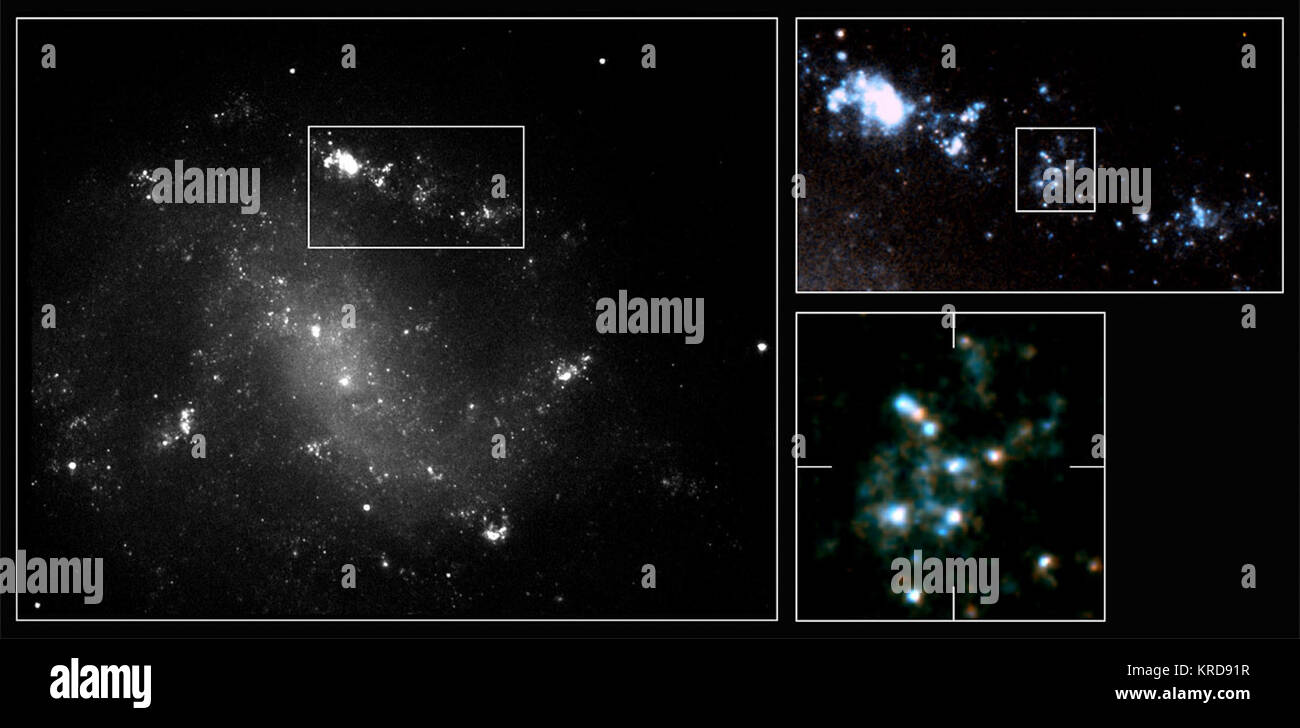 These images of the galaxy ESO 184-G82 are the most detailed images of a gamma-ray burst galaxy ever obtained. They were taken with the Space Telescope Imaging Spectrograph (STIS) onboard the NASA/ESA Hubble Space Telescope. The image on the left was taken with the STIS broad-band 'clear' filter. A composite image created using the same broad-band image (in blue) and an image obtained with the STIS red filter (in red) is shown on the right and details from this image are shown in the upper right and in higher detail below right. These new Hubble observations reveal that the host galaxy is acti Stock Photohttps://www.alamy.com/image-license-details/?v=1https://www.alamy.com/stock-image-these-images-of-the-galaxy-eso-184-g82-are-the-most-detailed-images-169322883.html
These images of the galaxy ESO 184-G82 are the most detailed images of a gamma-ray burst galaxy ever obtained. They were taken with the Space Telescope Imaging Spectrograph (STIS) onboard the NASA/ESA Hubble Space Telescope. The image on the left was taken with the STIS broad-band 'clear' filter. A composite image created using the same broad-band image (in blue) and an image obtained with the STIS red filter (in red) is shown on the right and details from this image are shown in the upper right and in higher detail below right. These new Hubble observations reveal that the host galaxy is acti Stock Photohttps://www.alamy.com/image-license-details/?v=1https://www.alamy.com/stock-image-these-images-of-the-galaxy-eso-184-g82-are-the-most-detailed-images-169322883.htmlRMKRD91R–These images of the galaxy ESO 184-G82 are the most detailed images of a gamma-ray burst galaxy ever obtained. They were taken with the Space Telescope Imaging Spectrograph (STIS) onboard the NASA/ESA Hubble Space Telescope. The image on the left was taken with the STIS broad-band 'clear' filter. A composite image created using the same broad-band image (in blue) and an image obtained with the STIS red filter (in red) is shown on the right and details from this image are shown in the upper right and in higher detail below right. These new Hubble observations reveal that the host galaxy is acti
 Neutron Star - Visualization Stock Photohttps://www.alamy.com/image-license-details/?v=1https://www.alamy.com/stock-photo-neutron-star-visualization-91880590.html
Neutron Star - Visualization Stock Photohttps://www.alamy.com/image-license-details/?v=1https://www.alamy.com/stock-photo-neutron-star-visualization-91880590.htmlRMF9DEHJ–Neutron Star - Visualization
 Heat generated from a gamma-ray burst has been detected for the first time by a team of astronomers led by University of Notre Dame physicist Peter Garnavich. NASA's Spitzer Space Telescope looked at 'GRB 050525a' (named by the date it was discovered, May 25, 2005) with all three of its detectors May 27, just two days after the burst was identified by Swift, another NASA satellite designed to study GRB from gamma-ray wavelengths to visible light. The light from gamma-ray burst afterglows fades quickly, so Spitzer had to move fast to catch the burst before it disappeared from view. Gamma-ray Stock Photohttps://www.alamy.com/image-license-details/?v=1https://www.alamy.com/stock-image-heat-generated-from-a-gamma-ray-burst-has-been-detected-for-the-first-169431318.html
Heat generated from a gamma-ray burst has been detected for the first time by a team of astronomers led by University of Notre Dame physicist Peter Garnavich. NASA's Spitzer Space Telescope looked at 'GRB 050525a' (named by the date it was discovered, May 25, 2005) with all three of its detectors May 27, just two days after the burst was identified by Swift, another NASA satellite designed to study GRB from gamma-ray wavelengths to visible light. The light from gamma-ray burst afterglows fades quickly, so Spitzer had to move fast to catch the burst before it disappeared from view. Gamma-ray Stock Photohttps://www.alamy.com/image-license-details/?v=1https://www.alamy.com/stock-image-heat-generated-from-a-gamma-ray-burst-has-been-detected-for-the-first-169431318.htmlRMKRJ7AE–Heat generated from a gamma-ray burst has been detected for the first time by a team of astronomers led by University of Notre Dame physicist Peter Garnavich. NASA's Spitzer Space Telescope looked at 'GRB 050525a' (named by the date it was discovered, May 25, 2005) with all three of its detectors May 27, just two days after the burst was identified by Swift, another NASA satellite designed to study GRB from gamma-ray wavelengths to visible light. The light from gamma-ray burst afterglows fades quickly, so Spitzer had to move fast to catch the burst before it disappeared from view. Gamma-ray
 Dust storm after detonator blast in the Arabian desert Stock Photohttps://www.alamy.com/image-license-details/?v=1https://www.alamy.com/dust-storm-after-detonator-blast-in-the-arabian-desert-image463723148.html
Dust storm after detonator blast in the Arabian desert Stock Photohttps://www.alamy.com/image-license-details/?v=1https://www.alamy.com/dust-storm-after-detonator-blast-in-the-arabian-desert-image463723148.htmlRF2HXCBH0–Dust storm after detonator blast in the Arabian desert
 An artist's depiction of a black hole in interstellar space pulling in gas and dust that start to heat. Gamma ray bursts exit at Stock Photohttps://www.alamy.com/image-license-details/?v=1https://www.alamy.com/stock-photo-an-artists-depiction-of-a-black-hole-in-interstellar-space-pulling-79707554.html
An artist's depiction of a black hole in interstellar space pulling in gas and dust that start to heat. Gamma ray bursts exit at Stock Photohttps://www.alamy.com/image-license-details/?v=1https://www.alamy.com/stock-photo-an-artists-depiction-of-a-black-hole-in-interstellar-space-pulling-79707554.htmlRFEHJYPA–An artist's depiction of a black hole in interstellar space pulling in gas and dust that start to heat. Gamma ray bursts exit at
![NASA's Swift Catches 500th Gamma-ray Burst [HD Video] Stock Photo NASA's Swift Catches 500th Gamma-ray Burst [HD Video] Stock Photo](https://c8.alamy.com/comp/D4AW33/nasas-swift-catches-500th-gamma-ray-burst-hd-video-D4AW33.jpg) NASA's Swift Catches 500th Gamma-ray Burst [HD Video] Stock Photohttps://www.alamy.com/image-license-details/?v=1https://www.alamy.com/stock-photo-nasas-swift-catches-500th-gamma-ray-burst-hd-video-54328935.html
NASA's Swift Catches 500th Gamma-ray Burst [HD Video] Stock Photohttps://www.alamy.com/image-license-details/?v=1https://www.alamy.com/stock-photo-nasas-swift-catches-500th-gamma-ray-burst-hd-video-54328935.htmlRMD4AW33–NASA's Swift Catches 500th Gamma-ray Burst [HD Video]
 Artist's concept of an astronaut falling towards a black hole in outer space. Gamma Rays erupt from the poles as a nearby nebula Stock Photohttps://www.alamy.com/image-license-details/?v=1https://www.alamy.com/stock-photo-artists-concept-of-an-astronaut-falling-towards-a-black-hole-in-outer-77722789.html
Artist's concept of an astronaut falling towards a black hole in outer space. Gamma Rays erupt from the poles as a nearby nebula Stock Photohttps://www.alamy.com/image-license-details/?v=1https://www.alamy.com/stock-photo-artists-concept-of-an-astronaut-falling-towards-a-black-hole-in-outer-77722789.htmlRFEECG5W–Artist's concept of an astronaut falling towards a black hole in outer space. Gamma Rays erupt from the poles as a nearby nebula
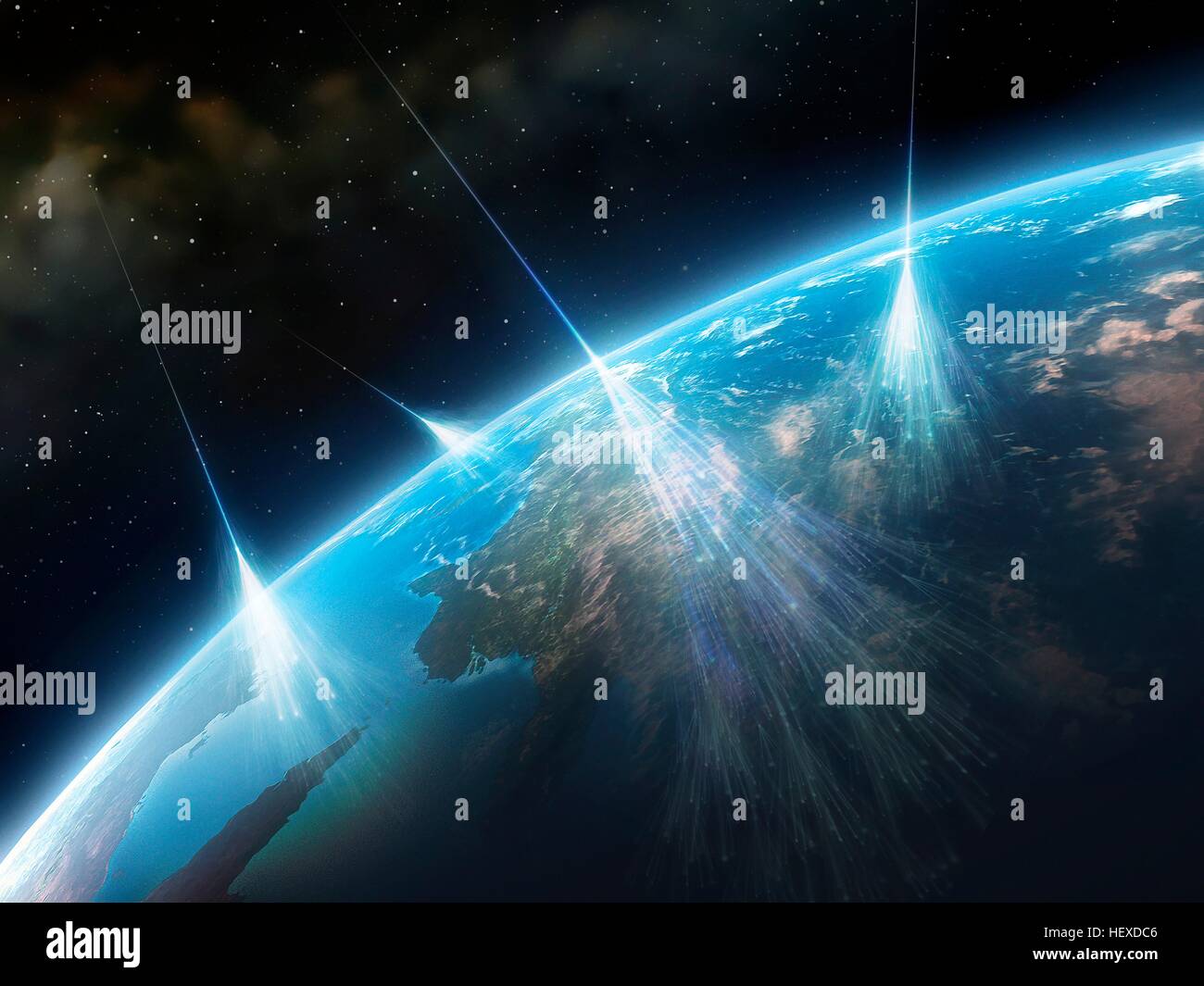 Cosmic rays.Artwork of high-energy particles radiation from star in deep space (cosmic rays) impacting molecules atoms in Earth's atmosphere.These primary impacts cause secondary cascade of subatomic particles.Detection analysis of these particles,which include protons,neutrons,light nuclei,neutrinos,pions,and muons,can reveal source of cosmic rays.These sources may include gamma ray bursts (GRBs),active galactic nuclei,supernovae quasars.Such research is carried out atmospheric balloons,or advanced detectors built underground or underwater,to shield them from other radiation. Stock Photohttps://www.alamy.com/image-license-details/?v=1https://www.alamy.com/stock-photo-cosmic-raysartwork-of-high-energy-particles-radiation-from-star-in-129659046.html
Cosmic rays.Artwork of high-energy particles radiation from star in deep space (cosmic rays) impacting molecules atoms in Earth's atmosphere.These primary impacts cause secondary cascade of subatomic particles.Detection analysis of these particles,which include protons,neutrons,light nuclei,neutrinos,pions,and muons,can reveal source of cosmic rays.These sources may include gamma ray bursts (GRBs),active galactic nuclei,supernovae quasars.Such research is carried out atmospheric balloons,or advanced detectors built underground or underwater,to shield them from other radiation. Stock Photohttps://www.alamy.com/image-license-details/?v=1https://www.alamy.com/stock-photo-cosmic-raysartwork-of-high-energy-particles-radiation-from-star-in-129659046.htmlRFHEXDC6–Cosmic rays.Artwork of high-energy particles radiation from star in deep space (cosmic rays) impacting molecules atoms in Earth's atmosphere.These primary impacts cause secondary cascade of subatomic particles.Detection analysis of these particles,which include protons,neutrons,light nuclei,neutrinos,pions,and muons,can reveal source of cosmic rays.These sources may include gamma ray bursts (GRBs),active galactic nuclei,supernovae quasars.Such research is carried out atmospheric balloons,or advanced detectors built underground or underwater,to shield them from other radiation.
 Gamma Ray Burst Stock Photohttps://www.alamy.com/image-license-details/?v=1https://www.alamy.com/stock-photo-gamma-ray-burst-135019070.html
Gamma Ray Burst Stock Photohttps://www.alamy.com/image-license-details/?v=1https://www.alamy.com/stock-photo-gamma-ray-burst-135019070.htmlRMHRJJ5J–Gamma Ray Burst
 Astrology: Neutron STAR (collapsed dead Star) Stock Photohttps://www.alamy.com/image-license-details/?v=1https://www.alamy.com/astrology-neutron-star-collapsed-dead-star-image274239821.html
Astrology: Neutron STAR (collapsed dead Star) Stock Photohttps://www.alamy.com/image-license-details/?v=1https://www.alamy.com/astrology-neutron-star-collapsed-dead-star-image274239821.htmlRMWX4KK9–Astrology: Neutron STAR (collapsed dead Star)
 Civilization Destroyed By A Gamma - Ray Burst. Stock Photohttps://www.alamy.com/image-license-details/?v=1https://www.alamy.com/stock-image-civilization-destroyed-by-a-gamma-ray-burst-164121213.html
Civilization Destroyed By A Gamma - Ray Burst. Stock Photohttps://www.alamy.com/image-license-details/?v=1https://www.alamy.com/stock-image-civilization-destroyed-by-a-gamma-ray-burst-164121213.htmlRMKF0A7W–Civilization Destroyed By A Gamma - Ray Burst.
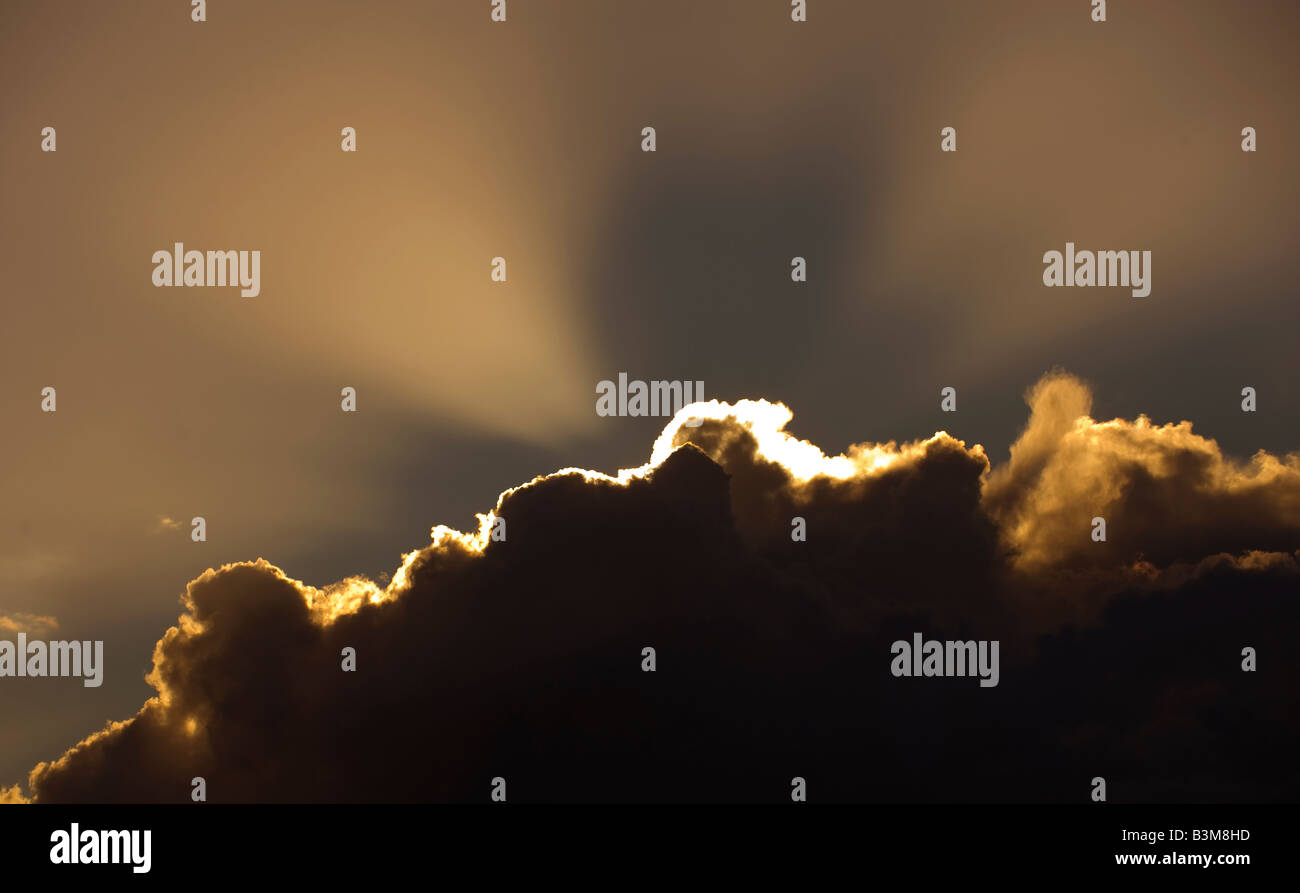 The bright rays of a setting sun burst out from a storm cloud Stock Photohttps://www.alamy.com/image-license-details/?v=1https://www.alamy.com/stock-photo-the-bright-rays-of-a-setting-sun-burst-out-from-a-storm-cloud-19500137.html
The bright rays of a setting sun burst out from a storm cloud Stock Photohttps://www.alamy.com/image-license-details/?v=1https://www.alamy.com/stock-photo-the-bright-rays-of-a-setting-sun-burst-out-from-a-storm-cloud-19500137.htmlRMB3M8HD–The bright rays of a setting sun burst out from a storm cloud
 A Civilization Destroyed By A Gamma-Ray Burst. Stock Photohttps://www.alamy.com/image-license-details/?v=1https://www.alamy.com/stock-image-a-civilization-destroyed-by-a-gamma-ray-burst-164230253.html
A Civilization Destroyed By A Gamma-Ray Burst. Stock Photohttps://www.alamy.com/image-license-details/?v=1https://www.alamy.com/stock-image-a-civilization-destroyed-by-a-gamma-ray-burst-164230253.htmlRMKF59A5–A Civilization Destroyed By A Gamma-Ray Burst.
 Rainbow Sunburst Background.Colorful smooth banner template. Stock Photohttps://www.alamy.com/image-license-details/?v=1https://www.alamy.com/stock-image-rainbow-sunburst-backgroundcolorful-smooth-banner-template-164424494.html
Rainbow Sunburst Background.Colorful smooth banner template. Stock Photohttps://www.alamy.com/image-license-details/?v=1https://www.alamy.com/stock-image-rainbow-sunburst-backgroundcolorful-smooth-banner-template-164424494.htmlRFKFE53A–Rainbow Sunburst Background.Colorful smooth banner template.
 (231117) -- BEIJING, Nov. 17, 2023 (Xinhua) -- This diagram shows the energy spectrum for the highest-energy gamma-ray radiation from the brightest gamma-ray burst (GRB) observed to date released by China's Large High Altitude Air Shower Observatory (LHAASO). China's Large High Altitude Air Shower Observatory (LHAASO), a high-altitude cosmic ray observatory, has released the precise energy spectrum for the highest-energy gamma-ray radiation from the brightest gamma-ray burst (GRB) observed to date. The study, conducted by the LHAASO collaboration team, was led by the Institute of High Energy Stock Photohttps://www.alamy.com/image-license-details/?v=1https://www.alamy.com/231117-beijing-nov-17-2023-xinhua-this-diagram-shows-the-energy-spectrum-for-the-highest-energy-gamma-ray-radiation-from-the-brightest-gamma-ray-burst-grb-observed-to-date-released-by-chinas-large-high-altitude-air-shower-observatory-lhaaso-chinas-large-high-altitude-air-shower-observatory-lhaaso-a-high-altitude-cosmic-ray-observatory-has-released-the-precise-energy-spectrum-for-the-highest-energy-gamma-ray-radiation-from-the-brightest-gamma-ray-burst-grb-observed-to-date-the-study-conducted-by-the-lhaaso-collaboration-team-was-led-by-the-institute-of-high-energy-image572742811.html
(231117) -- BEIJING, Nov. 17, 2023 (Xinhua) -- This diagram shows the energy spectrum for the highest-energy gamma-ray radiation from the brightest gamma-ray burst (GRB) observed to date released by China's Large High Altitude Air Shower Observatory (LHAASO). China's Large High Altitude Air Shower Observatory (LHAASO), a high-altitude cosmic ray observatory, has released the precise energy spectrum for the highest-energy gamma-ray radiation from the brightest gamma-ray burst (GRB) observed to date. The study, conducted by the LHAASO collaboration team, was led by the Institute of High Energy Stock Photohttps://www.alamy.com/image-license-details/?v=1https://www.alamy.com/231117-beijing-nov-17-2023-xinhua-this-diagram-shows-the-energy-spectrum-for-the-highest-energy-gamma-ray-radiation-from-the-brightest-gamma-ray-burst-grb-observed-to-date-released-by-chinas-large-high-altitude-air-shower-observatory-lhaaso-chinas-large-high-altitude-air-shower-observatory-lhaaso-a-high-altitude-cosmic-ray-observatory-has-released-the-precise-energy-spectrum-for-the-highest-energy-gamma-ray-radiation-from-the-brightest-gamma-ray-burst-grb-observed-to-date-the-study-conducted-by-the-lhaaso-collaboration-team-was-led-by-the-institute-of-high-energy-image572742811.htmlRM2T7PK8B–(231117) -- BEIJING, Nov. 17, 2023 (Xinhua) -- This diagram shows the energy spectrum for the highest-energy gamma-ray radiation from the brightest gamma-ray burst (GRB) observed to date released by China's Large High Altitude Air Shower Observatory (LHAASO). China's Large High Altitude Air Shower Observatory (LHAASO), a high-altitude cosmic ray observatory, has released the precise energy spectrum for the highest-energy gamma-ray radiation from the brightest gamma-ray burst (GRB) observed to date. The study, conducted by the LHAASO collaboration team, was led by the Institute of High Energy
 Launched on June 11, 2008, NASA's Fermi Gamma-ray Space Telescope is an astrophysics and particle physics partnership, developed by NASA in collaboration with the U.S. Department of Energy, along with important contributions from academic institutions and partners in France, Germany, Italy, Japan, Sweden and the United States. Working together, the Large Area Telescope (LAT) and the Gamma-Ray Burst Monitor (GBM), serve as powerful tools for studying gamma-ray bursts, particularly for time-resolved spectral studies over a very large energy band. Stock Photohttps://www.alamy.com/image-license-details/?v=1https://www.alamy.com/launched-on-june-11-2008-nasas-fermi-gamma-ray-space-telescope-is-an-astrophysics-and-particle-physics-partnership-developed-by-nasa-in-collaboration-with-the-us-department-of-energy-along-with-important-contributions-from-academic-institutions-and-partners-in-france-germany-italy-japan-sweden-and-the-united-states-working-together-the-large-area-telescope-lat-and-the-gamma-ray-burst-monitor-gbm-serve-as-powerful-tools-for-studying-gamma-ray-bursts-particularly-for-time-resolved-spectral-studies-over-a-very-large-energy-band-image547776646.html
Launched on June 11, 2008, NASA's Fermi Gamma-ray Space Telescope is an astrophysics and particle physics partnership, developed by NASA in collaboration with the U.S. Department of Energy, along with important contributions from academic institutions and partners in France, Germany, Italy, Japan, Sweden and the United States. Working together, the Large Area Telescope (LAT) and the Gamma-Ray Burst Monitor (GBM), serve as powerful tools for studying gamma-ray bursts, particularly for time-resolved spectral studies over a very large energy band. Stock Photohttps://www.alamy.com/image-license-details/?v=1https://www.alamy.com/launched-on-june-11-2008-nasas-fermi-gamma-ray-space-telescope-is-an-astrophysics-and-particle-physics-partnership-developed-by-nasa-in-collaboration-with-the-us-department-of-energy-along-with-important-contributions-from-academic-institutions-and-partners-in-france-germany-italy-japan-sweden-and-the-united-states-working-together-the-large-area-telescope-lat-and-the-gamma-ray-burst-monitor-gbm-serve-as-powerful-tools-for-studying-gamma-ray-bursts-particularly-for-time-resolved-spectral-studies-over-a-very-large-energy-band-image547776646.htmlRM2PR5AKJ–Launched on June 11, 2008, NASA's Fermi Gamma-ray Space Telescope is an astrophysics and particle physics partnership, developed by NASA in collaboration with the U.S. Department of Energy, along with important contributions from academic institutions and partners in France, Germany, Italy, Japan, Sweden and the United States. Working together, the Large Area Telescope (LAT) and the Gamma-Ray Burst Monitor (GBM), serve as powerful tools for studying gamma-ray bursts, particularly for time-resolved spectral studies over a very large energy band.
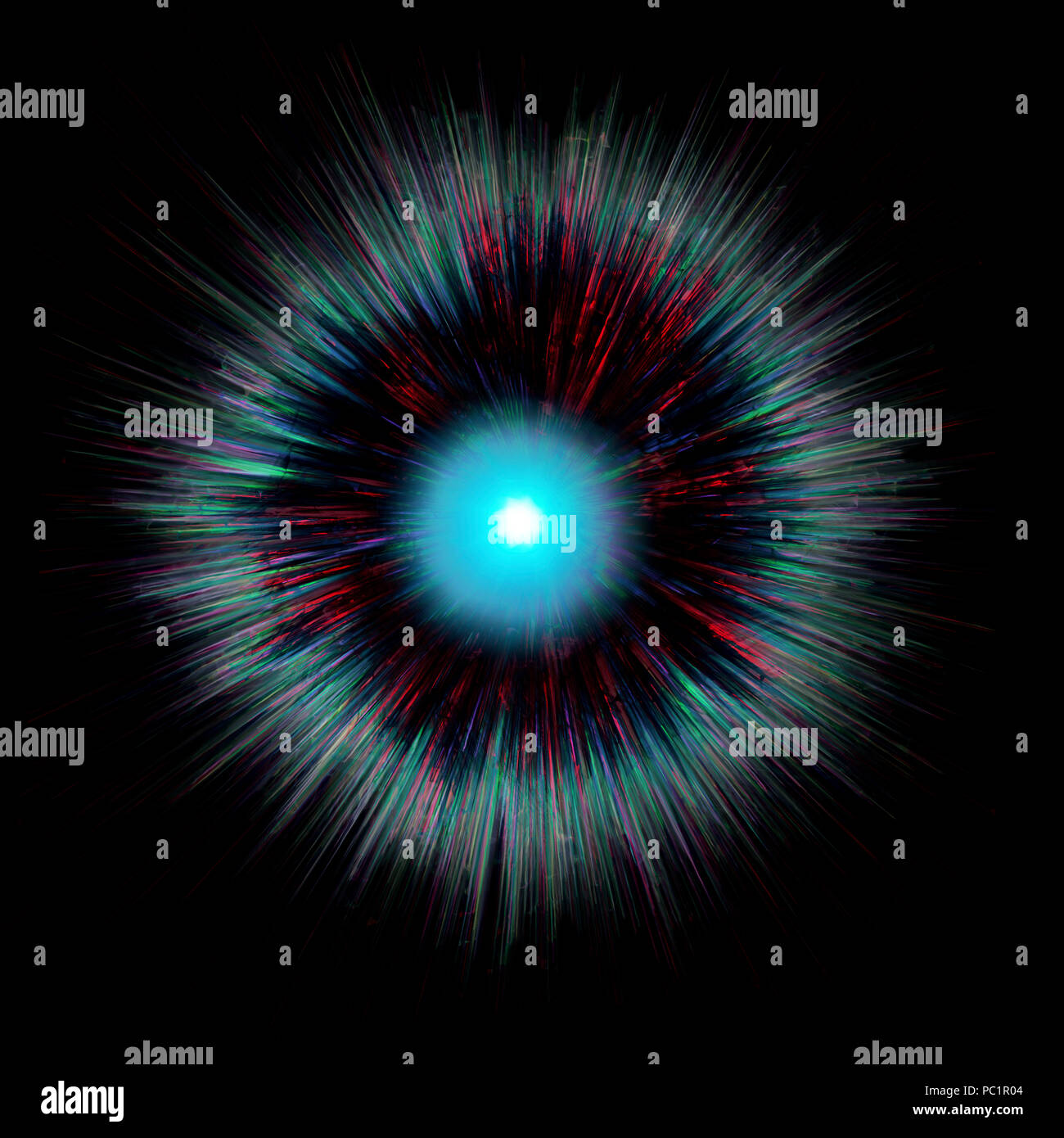 Exploding Neutron Star. Singularity, Gravitational Waves And Spacetime Concept Stock Photohttps://www.alamy.com/image-license-details/?v=1https://www.alamy.com/exploding-neutron-star-singularity-gravitational-waves-and-spacetime-concept-image213940276.html
Exploding Neutron Star. Singularity, Gravitational Waves And Spacetime Concept Stock Photohttps://www.alamy.com/image-license-details/?v=1https://www.alamy.com/exploding-neutron-star-singularity-gravitational-waves-and-spacetime-concept-image213940276.htmlRFPC1R04–Exploding Neutron Star. Singularity, Gravitational Waves And Spacetime Concept
 KENNEDY SPACE CENTER, FLA. - The engines of a Boeing Delta II expendable launch vehicle ignite to blast NASA's Swift spacecraft on its way at Complex 17A, Cape Canaveral Air Force Station, on Nov. 20 at 12 16 00.611 p.m. EST. Swift is a first-of-its-kind multi-wavelength observatory dedicated to the study of gamma-ray burst science. Its three instruments will work together to observe GRBs and afterglows in the gamma ray, X-ray, ultraviolet and optical wavebands. Stock Photohttps://www.alamy.com/image-license-details/?v=1https://www.alamy.com/kennedy-space-center-fla-the-engines-of-a-boeing-delta-ii-expendable-launch-vehicle-ignite-to-blast-nasas-swift-spacecraft-on-its-way-at-complex-17a-cape-canaveral-air-force-station-on-nov-20-at-12-16-00611-pm-est-swift-is-a-first-of-its-kind-multi-wavelength-observatory-dedicated-to-the-study-of-gamma-ray-burst-science-its-three-instruments-will-work-together-to-observe-grbs-and-afterglows-in-the-gamma-ray-x-ray-ultraviolet-and-optical-wavebands-image592365519.html
KENNEDY SPACE CENTER, FLA. - The engines of a Boeing Delta II expendable launch vehicle ignite to blast NASA's Swift spacecraft on its way at Complex 17A, Cape Canaveral Air Force Station, on Nov. 20 at 12 16 00.611 p.m. EST. Swift is a first-of-its-kind multi-wavelength observatory dedicated to the study of gamma-ray burst science. Its three instruments will work together to observe GRBs and afterglows in the gamma ray, X-ray, ultraviolet and optical wavebands. Stock Photohttps://www.alamy.com/image-license-details/?v=1https://www.alamy.com/kennedy-space-center-fla-the-engines-of-a-boeing-delta-ii-expendable-launch-vehicle-ignite-to-blast-nasas-swift-spacecraft-on-its-way-at-complex-17a-cape-canaveral-air-force-station-on-nov-20-at-12-16-00611-pm-est-swift-is-a-first-of-its-kind-multi-wavelength-observatory-dedicated-to-the-study-of-gamma-ray-burst-science-its-three-instruments-will-work-together-to-observe-grbs-and-afterglows-in-the-gamma-ray-x-ray-ultraviolet-and-optical-wavebands-image592365519.htmlRM2WBMG7B–KENNEDY SPACE CENTER, FLA. - The engines of a Boeing Delta II expendable launch vehicle ignite to blast NASA's Swift spacecraft on its way at Complex 17A, Cape Canaveral Air Force Station, on Nov. 20 at 12 16 00.611 p.m. EST. Swift is a first-of-its-kind multi-wavelength observatory dedicated to the study of gamma-ray burst science. Its three instruments will work together to observe GRBs and afterglows in the gamma ray, X-ray, ultraviolet and optical wavebands.
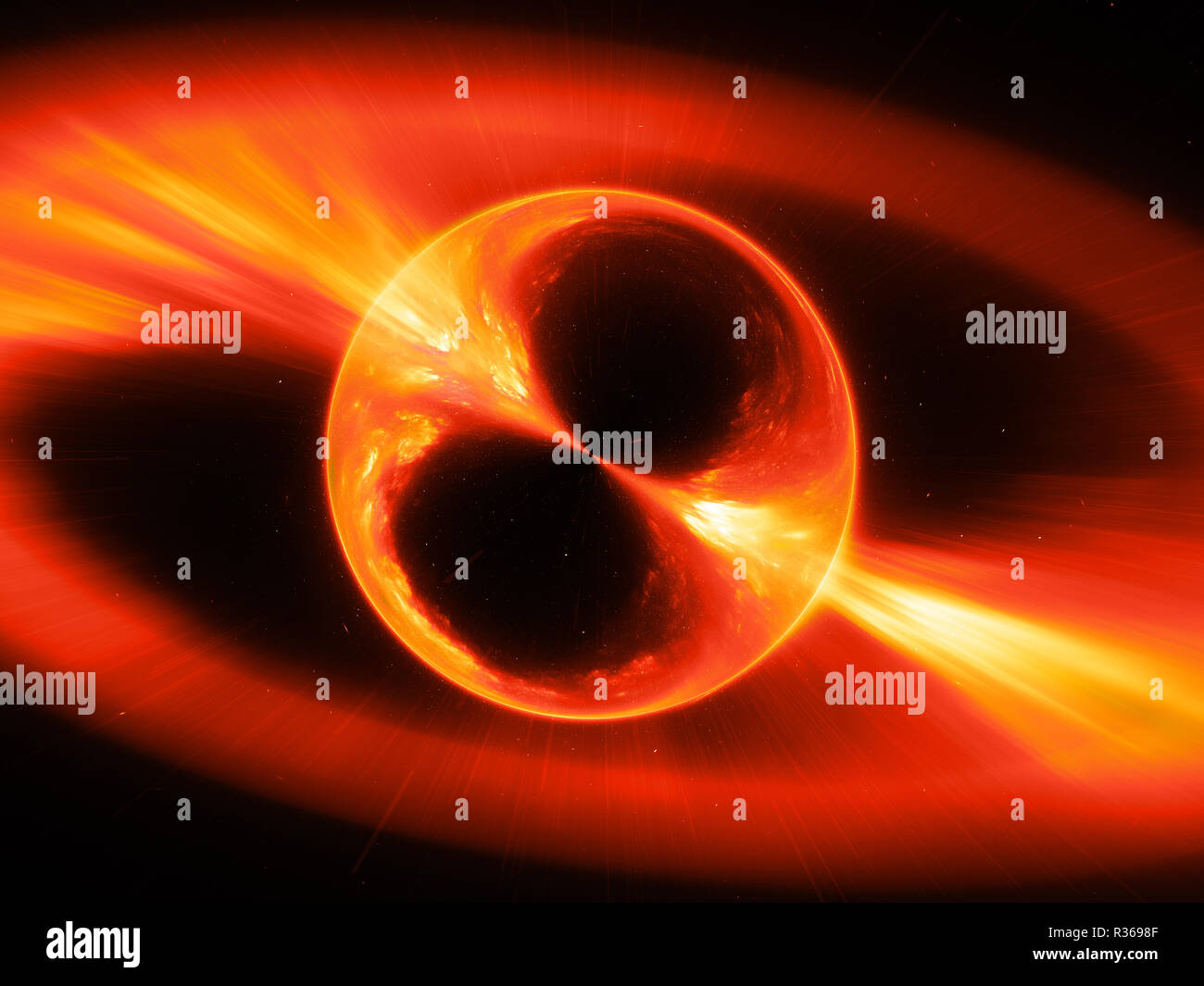 Fiery glowing supermassive mysterios object in space gamma ray burst, computer generated abstract background, 3D rendering Stock Photohttps://www.alamy.com/image-license-details/?v=1https://www.alamy.com/fiery-glowing-supermassive-mysterios-object-in-space-gamma-ray-burst-computer-generated-abstract-background-3d-rendering-image225717759.html
Fiery glowing supermassive mysterios object in space gamma ray burst, computer generated abstract background, 3D rendering Stock Photohttps://www.alamy.com/image-license-details/?v=1https://www.alamy.com/fiery-glowing-supermassive-mysterios-object-in-space-gamma-ray-burst-computer-generated-abstract-background-3d-rendering-image225717759.htmlRFR3698F–Fiery glowing supermassive mysterios object in space gamma ray burst, computer generated abstract background, 3D rendering
 Physicist Stephen Fairhurst, giving a talk on how he searches for signals from merging black holes and neutron stars, on the Cosmos Stage, at New Scientist Live 2018 Stock Photohttps://www.alamy.com/image-license-details/?v=1https://www.alamy.com/physicist-stephen-fairhurst-giving-a-talk-on-how-he-searches-for-signals-from-merging-black-holes-and-neutron-stars-on-the-cosmos-stage-at-new-scientist-live-2018-image219585803.html
Physicist Stephen Fairhurst, giving a talk on how he searches for signals from merging black holes and neutron stars, on the Cosmos Stage, at New Scientist Live 2018 Stock Photohttps://www.alamy.com/image-license-details/?v=1https://www.alamy.com/physicist-stephen-fairhurst-giving-a-talk-on-how-he-searches-for-signals-from-merging-black-holes-and-neutron-stars-on-the-cosmos-stage-at-new-scientist-live-2018-image219585803.htmlRMPN6YX3–Physicist Stephen Fairhurst, giving a talk on how he searches for signals from merging black holes and neutron stars, on the Cosmos Stage, at New Scientist Live 2018
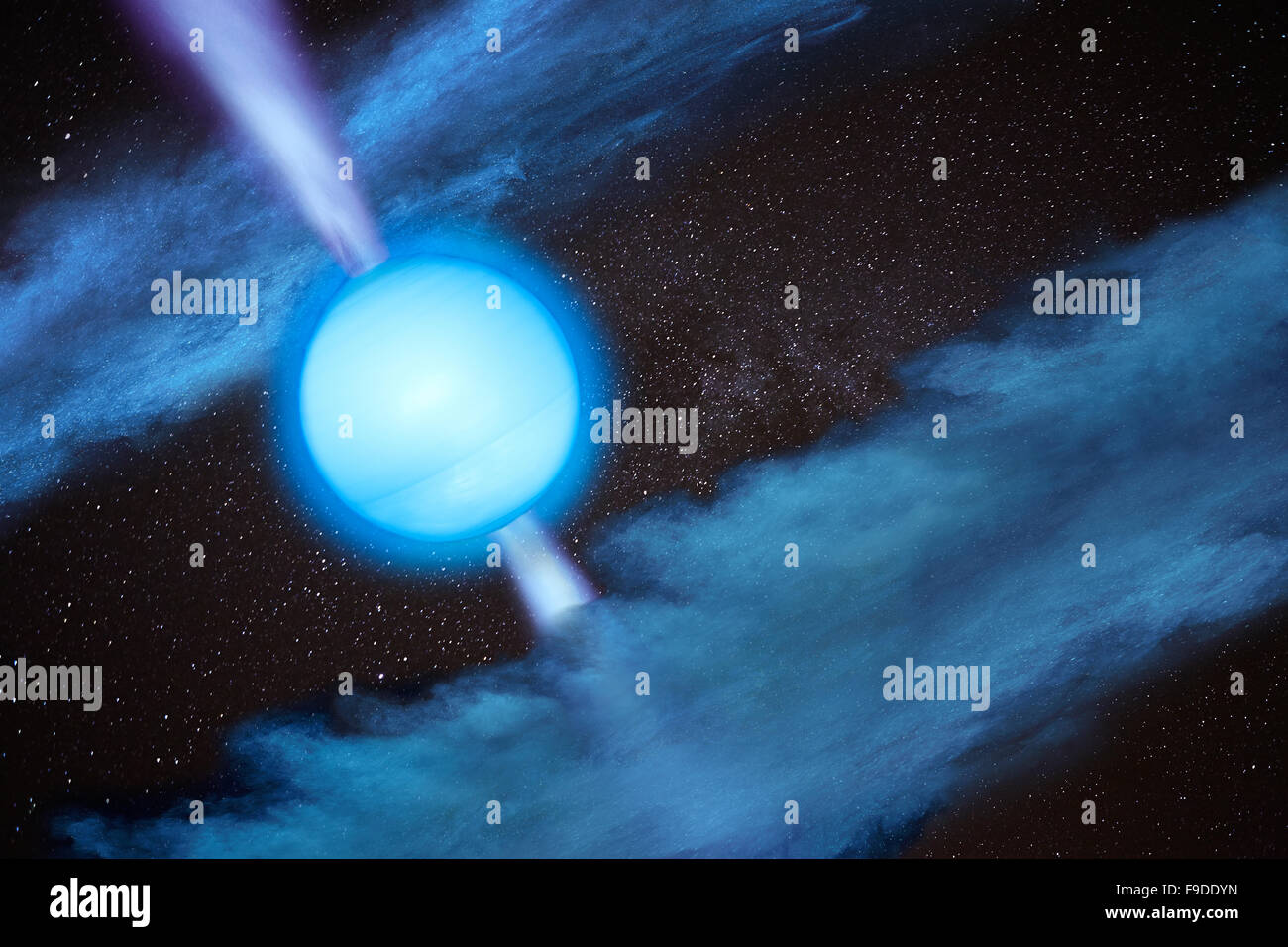 Neutron Star - Visualization Stock Photohttps://www.alamy.com/image-license-details/?v=1https://www.alamy.com/stock-photo-neutron-star-visualization-91880089.html
Neutron Star - Visualization Stock Photohttps://www.alamy.com/image-license-details/?v=1https://www.alamy.com/stock-photo-neutron-star-visualization-91880089.htmlRMF9DDYN–Neutron Star - Visualization
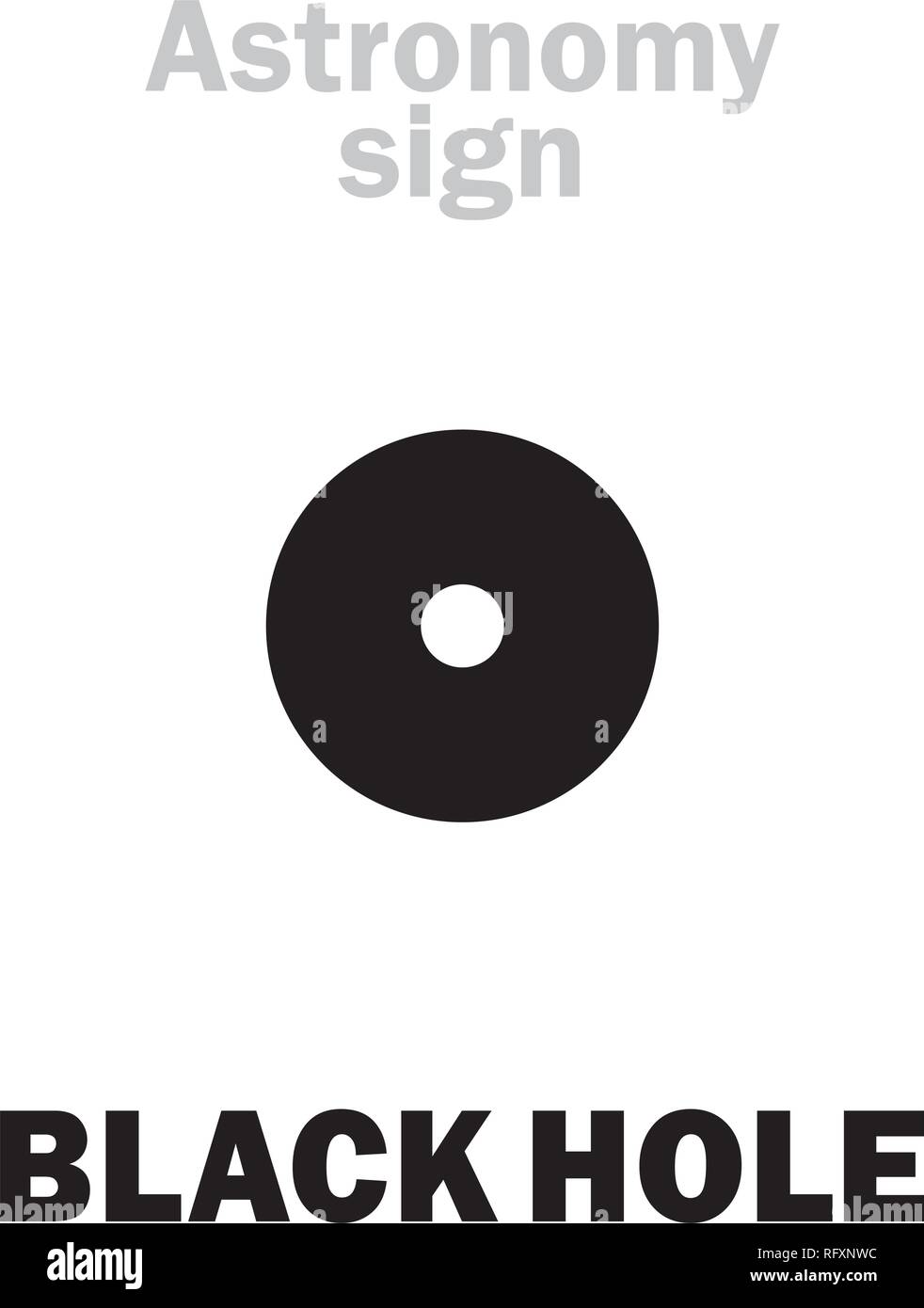 Astrology Alphabet: BLACK HOLE (Event horizon), Enigmatic supermassive hypergravitational object in The Universe, absorptive everything around. Stock Vectorhttps://www.alamy.com/image-license-details/?v=1https://www.alamy.com/astrology-alphabet-black-hole-event-horizon-enigmatic-supermassive-hypergravitational-object-in-the-universe-absorptive-everything-around-image233542552.html
Astrology Alphabet: BLACK HOLE (Event horizon), Enigmatic supermassive hypergravitational object in The Universe, absorptive everything around. Stock Vectorhttps://www.alamy.com/image-license-details/?v=1https://www.alamy.com/astrology-alphabet-black-hole-event-horizon-enigmatic-supermassive-hypergravitational-object-in-the-universe-absorptive-everything-around-image233542552.htmlRFRFXNWC–Astrology Alphabet: BLACK HOLE (Event horizon), Enigmatic supermassive hypergravitational object in The Universe, absorptive everything around.
 Electronic detonator blasting on the construction site Stock Photohttps://www.alamy.com/image-license-details/?v=1https://www.alamy.com/electronic-detonator-blasting-on-the-construction-site-image463723176.html
Electronic detonator blasting on the construction site Stock Photohttps://www.alamy.com/image-license-details/?v=1https://www.alamy.com/electronic-detonator-blasting-on-the-construction-site-image463723176.htmlRF2HXCBJ0–Electronic detonator blasting on the construction site
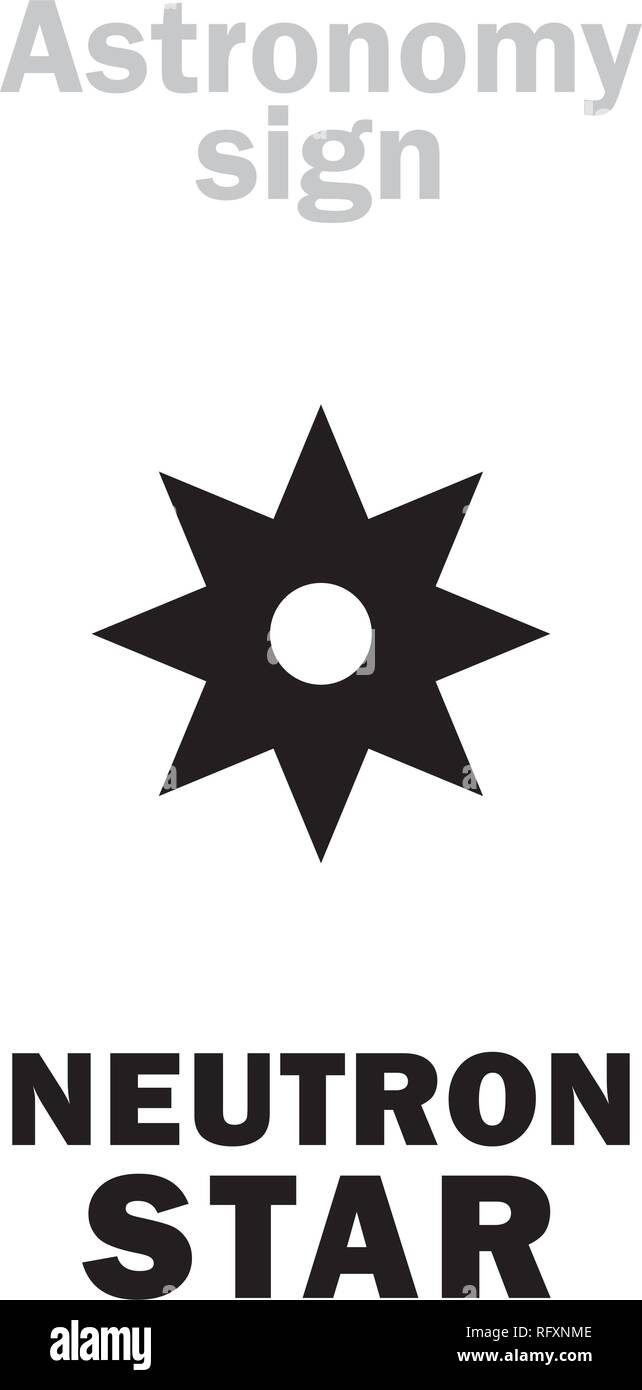 Astrology Alphabet: NEUTRON STAR, small cold but superdense Collapsed Dead Star, emitting faint glow and Lethal Rays. Enigmatic phenomenon in Universe Stock Vectorhttps://www.alamy.com/image-license-details/?v=1https://www.alamy.com/astrology-alphabet-neutron-star-small-cold-but-superdense-collapsed-dead-star-emitting-faint-glow-and-lethal-rays-enigmatic-phenomenon-in-universe-image233542414.html
Astrology Alphabet: NEUTRON STAR, small cold but superdense Collapsed Dead Star, emitting faint glow and Lethal Rays. Enigmatic phenomenon in Universe Stock Vectorhttps://www.alamy.com/image-license-details/?v=1https://www.alamy.com/astrology-alphabet-neutron-star-small-cold-but-superdense-collapsed-dead-star-emitting-faint-glow-and-lethal-rays-enigmatic-phenomenon-in-universe-image233542414.htmlRFRFXNME–Astrology Alphabet: NEUTRON STAR, small cold but superdense Collapsed Dead Star, emitting faint glow and Lethal Rays. Enigmatic phenomenon in Universe
 Dark Gamma Ray Burst Illustration Stock Photohttps://www.alamy.com/image-license-details/?v=1https://www.alamy.com/stock-photo-dark-gamma-ray-burst-illustration-54327591.html
Dark Gamma Ray Burst Illustration Stock Photohttps://www.alamy.com/image-license-details/?v=1https://www.alamy.com/stock-photo-dark-gamma-ray-burst-illustration-54327591.htmlRMD4ARB3–Dark Gamma Ray Burst Illustration
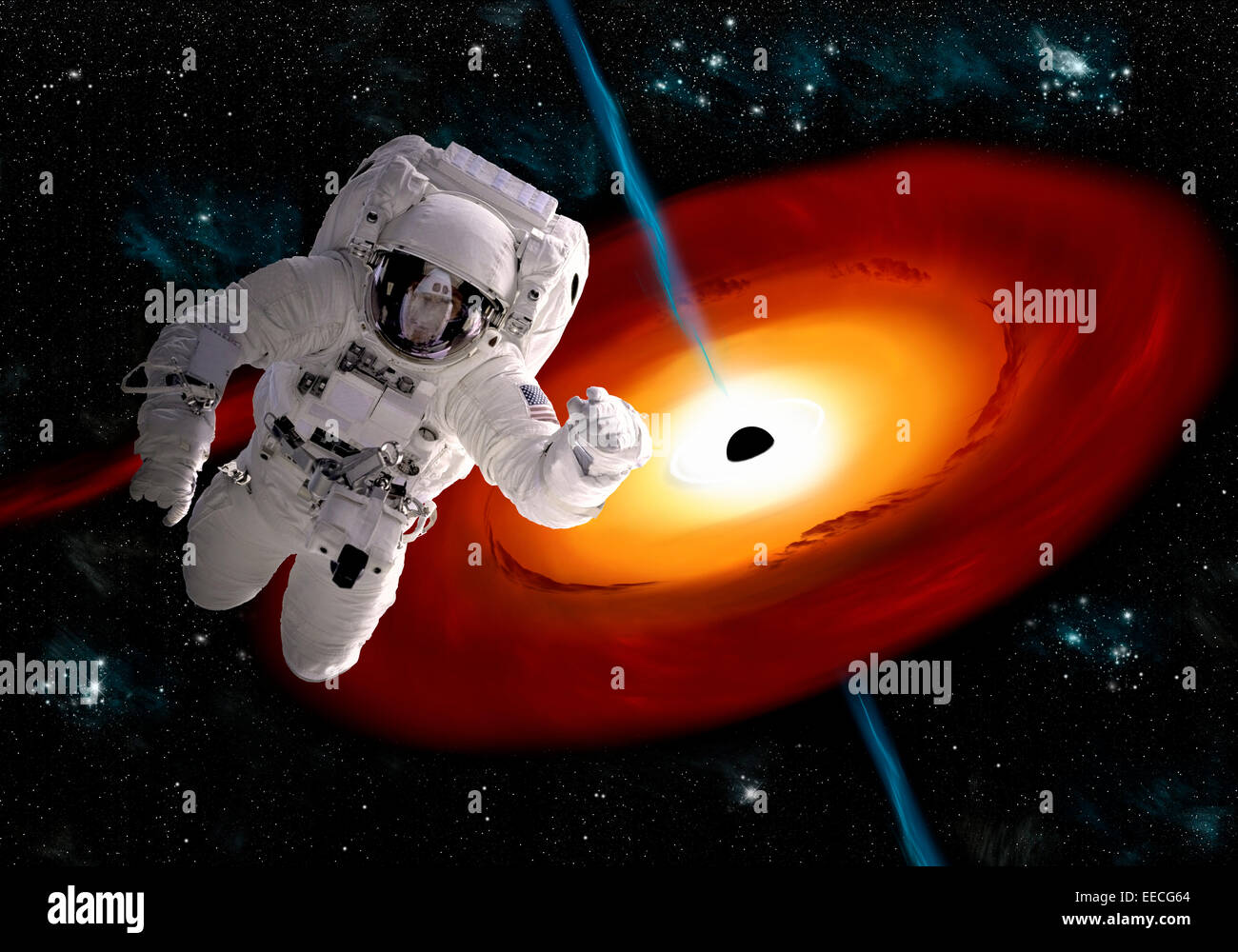 Artist's concept of an astronaut floating in outer space as he is pulled towards a massive black hole. Gamma ray bursts erupt fr Stock Photohttps://www.alamy.com/image-license-details/?v=1https://www.alamy.com/stock-photo-artists-concept-of-an-astronaut-floating-in-outer-space-as-he-is-pulled-77722796.html
Artist's concept of an astronaut floating in outer space as he is pulled towards a massive black hole. Gamma ray bursts erupt fr Stock Photohttps://www.alamy.com/image-license-details/?v=1https://www.alamy.com/stock-photo-artists-concept-of-an-astronaut-floating-in-outer-space-as-he-is-pulled-77722796.htmlRFEECG64–Artist's concept of an astronaut floating in outer space as he is pulled towards a massive black hole. Gamma ray bursts erupt fr
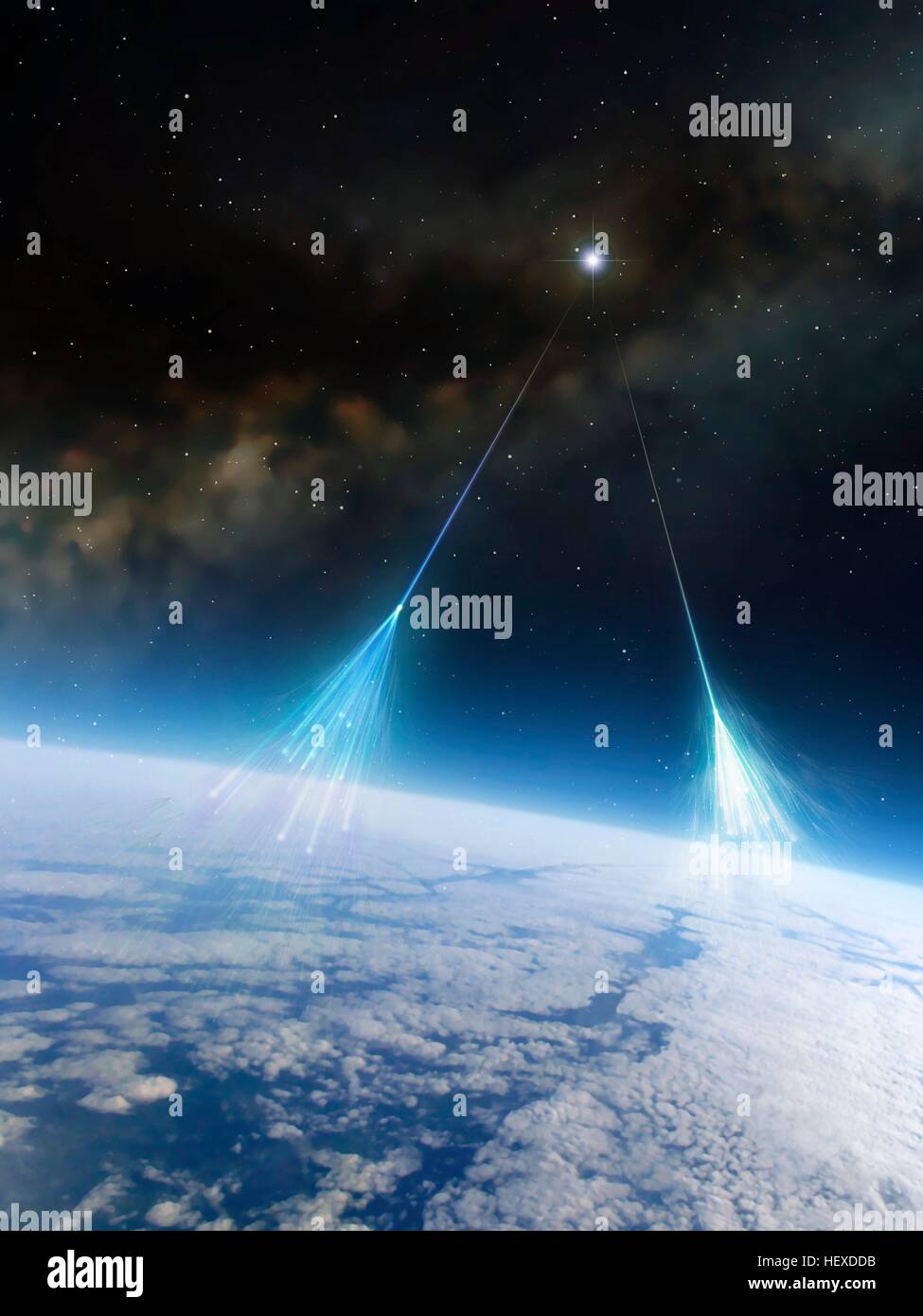 Cosmic rays.Artwork of high-energy particles radiation from star in deep space (cosmic rays) impacting molecules atoms in Earth's atmosphere.These primary impacts cause secondary cascade of subatomic particles.Detection analysis of these particles,which include protons,neutrons,light nuclei,neutrinos,pions,and muons,can reveal source of cosmic rays.These sources may include gamma ray bursts (GRBs),active galactic nuclei,supernovae quasars.Such research is carried out atmospheric balloons,or advanced detectors built underground or underwater,to shield them from other radiation. Stock Photohttps://www.alamy.com/image-license-details/?v=1https://www.alamy.com/stock-photo-cosmic-raysartwork-of-high-energy-particles-radiation-from-star-in-129659079.html
Cosmic rays.Artwork of high-energy particles radiation from star in deep space (cosmic rays) impacting molecules atoms in Earth's atmosphere.These primary impacts cause secondary cascade of subatomic particles.Detection analysis of these particles,which include protons,neutrons,light nuclei,neutrinos,pions,and muons,can reveal source of cosmic rays.These sources may include gamma ray bursts (GRBs),active galactic nuclei,supernovae quasars.Such research is carried out atmospheric balloons,or advanced detectors built underground or underwater,to shield them from other radiation. Stock Photohttps://www.alamy.com/image-license-details/?v=1https://www.alamy.com/stock-photo-cosmic-raysartwork-of-high-energy-particles-radiation-from-star-in-129659079.htmlRFHEXDDB–Cosmic rays.Artwork of high-energy particles radiation from star in deep space (cosmic rays) impacting molecules atoms in Earth's atmosphere.These primary impacts cause secondary cascade of subatomic particles.Detection analysis of these particles,which include protons,neutrons,light nuclei,neutrinos,pions,and muons,can reveal source of cosmic rays.These sources may include gamma ray bursts (GRBs),active galactic nuclei,supernovae quasars.Such research is carried out atmospheric balloons,or advanced detectors built underground or underwater,to shield them from other radiation.
 Gamma-ray Burst in Space Stock Photohttps://www.alamy.com/image-license-details/?v=1https://www.alamy.com/stock-photo-gamma-ray-burst-in-space-135018710.html
Gamma-ray Burst in Space Stock Photohttps://www.alamy.com/image-license-details/?v=1https://www.alamy.com/stock-photo-gamma-ray-burst-in-space-135018710.htmlRMHRJHMP–Gamma-ray Burst in Space
 Astrology: QUASAR (Relict radiation) Stock Photohttps://www.alamy.com/image-license-details/?v=1https://www.alamy.com/astrology-quasar-relict-radiation-image274242069.html
Astrology: QUASAR (Relict radiation) Stock Photohttps://www.alamy.com/image-license-details/?v=1https://www.alamy.com/astrology-quasar-relict-radiation-image274242069.htmlRMWX4PFH–Astrology: QUASAR (Relict radiation)
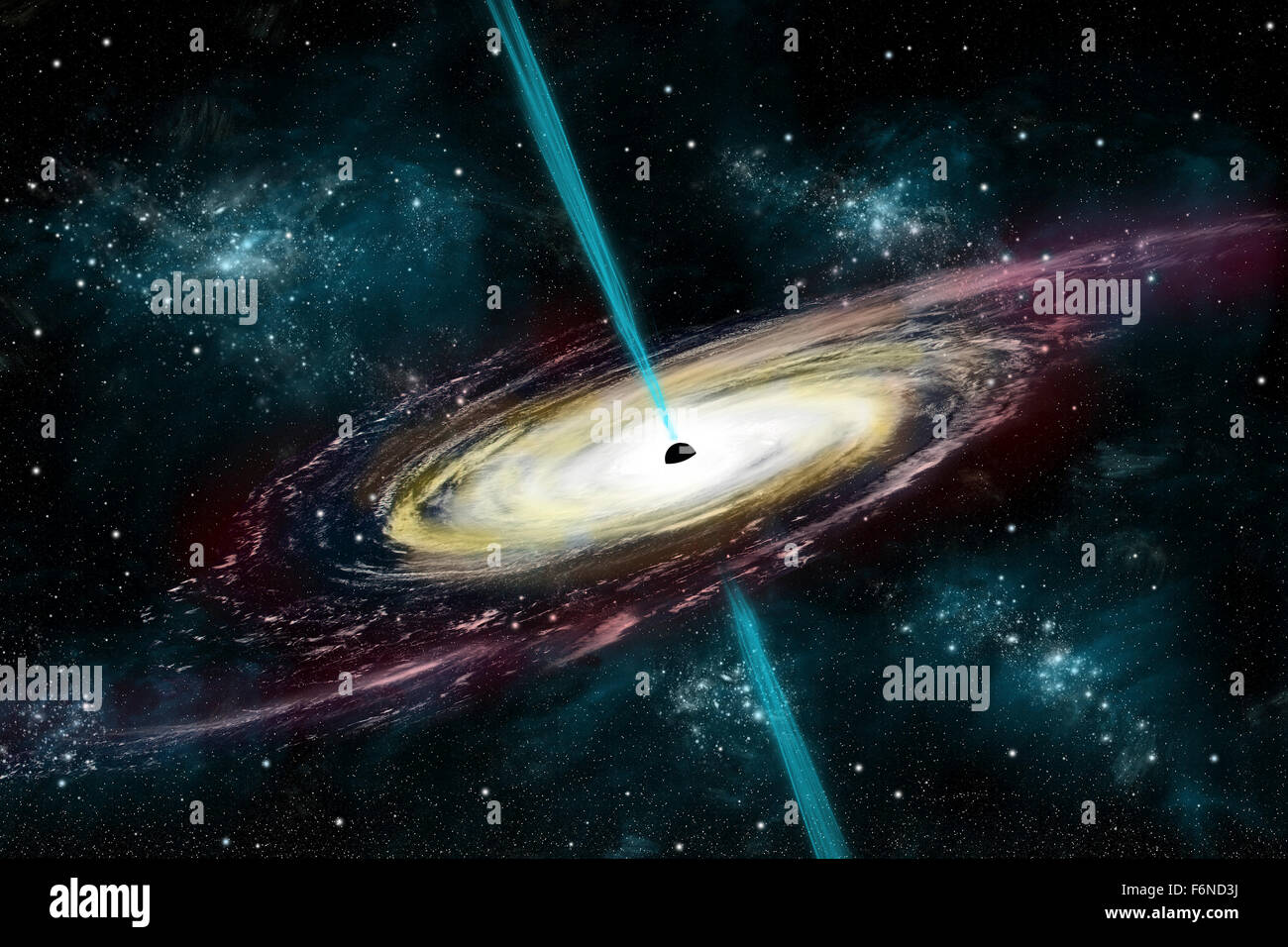 An artist's depiction of a black hole in interstellar space pulling in gas and dust that start to heat. Gamma ray bursts exit at Stock Photohttps://www.alamy.com/image-license-details/?v=1https://www.alamy.com/stock-photo-an-artists-depiction-of-a-black-hole-in-interstellar-space-pulling-90211062.html
An artist's depiction of a black hole in interstellar space pulling in gas and dust that start to heat. Gamma ray bursts exit at Stock Photohttps://www.alamy.com/image-license-details/?v=1https://www.alamy.com/stock-photo-an-artists-depiction-of-a-black-hole-in-interstellar-space-pulling-90211062.htmlRFF6ND3J–An artist's depiction of a black hole in interstellar space pulling in gas and dust that start to heat. Gamma ray bursts exit at
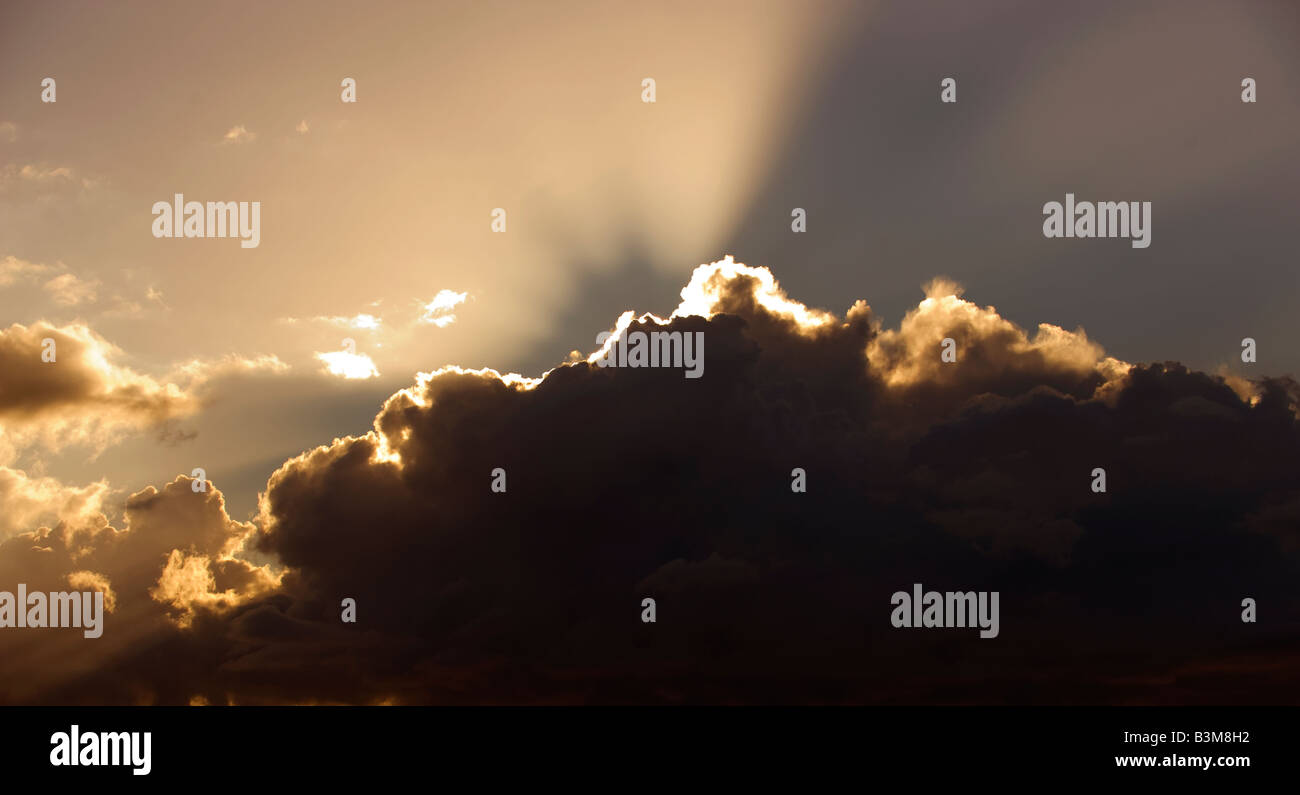 The bright rays of a setting sun burst out from a storm cloud Stock Photohttps://www.alamy.com/image-license-details/?v=1https://www.alamy.com/stock-photo-the-bright-rays-of-a-setting-sun-burst-out-from-a-storm-cloud-19500126.html
The bright rays of a setting sun burst out from a storm cloud Stock Photohttps://www.alamy.com/image-license-details/?v=1https://www.alamy.com/stock-photo-the-bright-rays-of-a-setting-sun-burst-out-from-a-storm-cloud-19500126.htmlRMB3M8H2–The bright rays of a setting sun burst out from a storm cloud
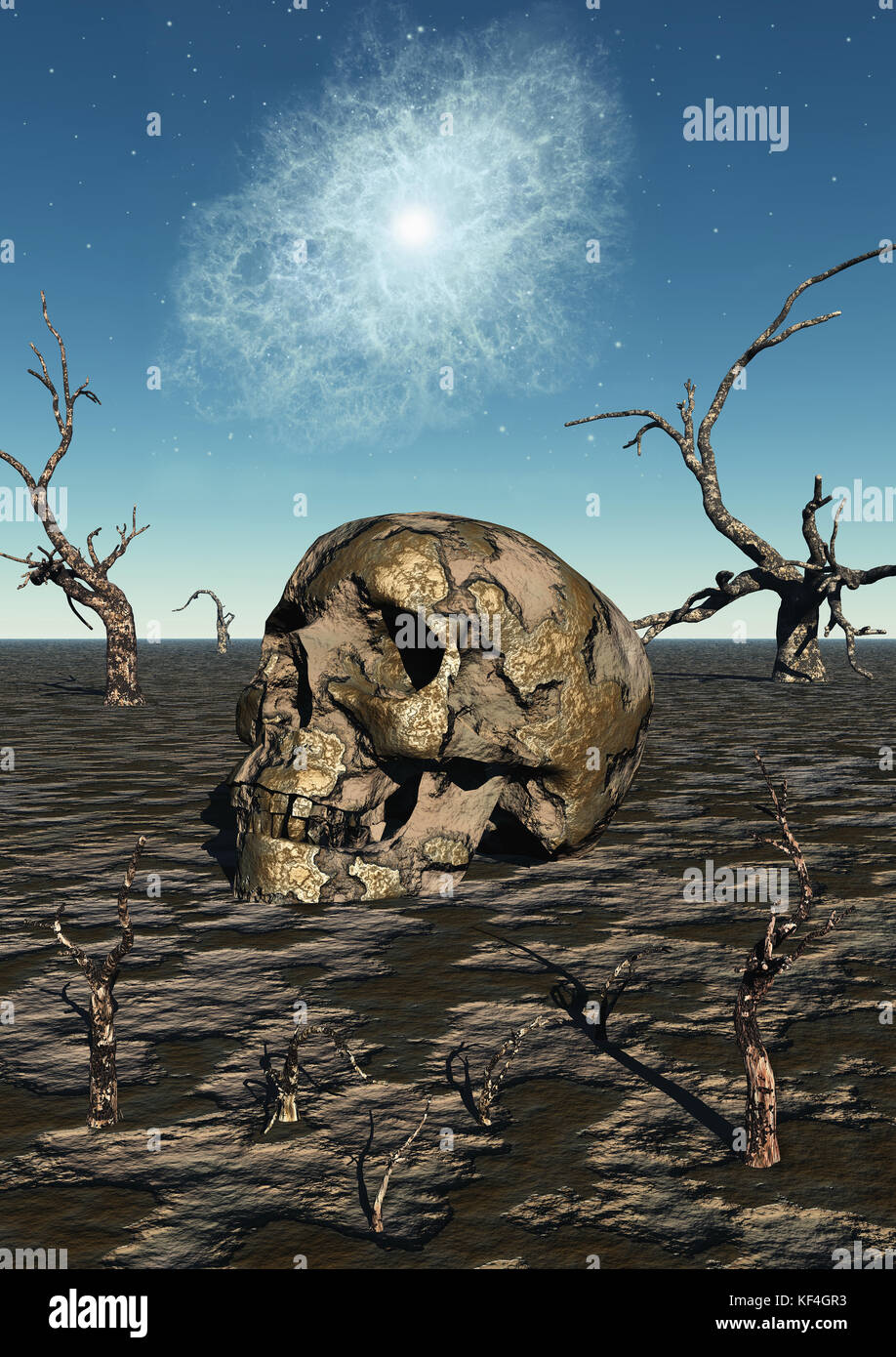 A Civilization Destroyed By A Gamma-Ray Burst. Stock Photohttps://www.alamy.com/image-license-details/?v=1https://www.alamy.com/stock-image-a-civilization-destroyed-by-a-gamma-ray-burst-164214151.html
A Civilization Destroyed By A Gamma-Ray Burst. Stock Photohttps://www.alamy.com/image-license-details/?v=1https://www.alamy.com/stock-image-a-civilization-destroyed-by-a-gamma-ray-burst-164214151.htmlRMKF4GR3–A Civilization Destroyed By A Gamma-Ray Burst.
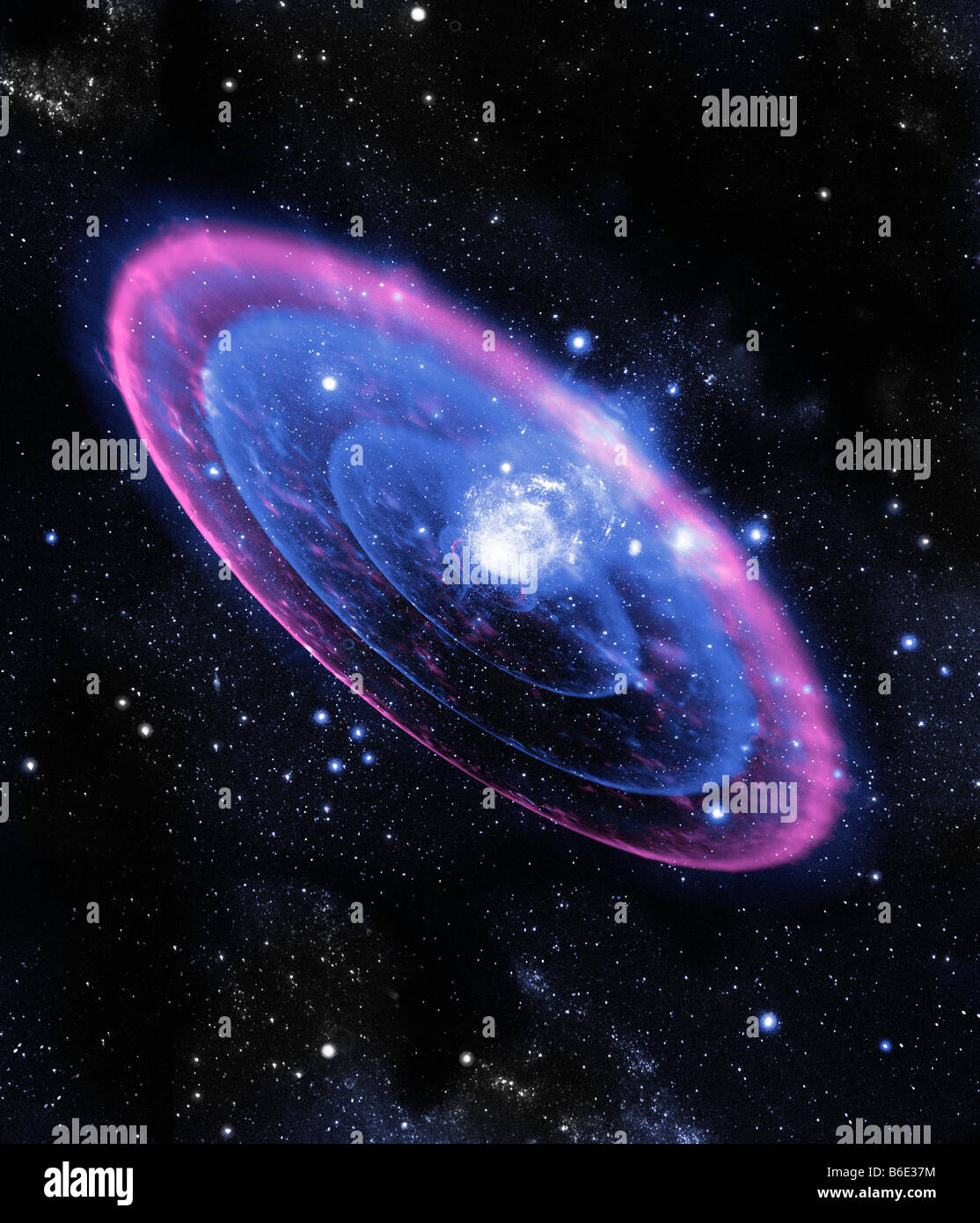 Supernova explosion Stock Photohttps://www.alamy.com/image-license-details/?v=1https://www.alamy.com/stock-photo-supernova-explosion-21208200.html
Supernova explosion Stock Photohttps://www.alamy.com/image-license-details/?v=1https://www.alamy.com/stock-photo-supernova-explosion-21208200.htmlRFB6E37M–Supernova explosion
 A Supernova Emitting A Gamma - Ray Burst. Stock Photohttps://www.alamy.com/image-license-details/?v=1https://www.alamy.com/stock-image-a-supernova-emitting-a-gamma-ray-burst-164149747.html
A Supernova Emitting A Gamma - Ray Burst. Stock Photohttps://www.alamy.com/image-license-details/?v=1https://www.alamy.com/stock-image-a-supernova-emitting-a-gamma-ray-burst-164149747.htmlRMKF1JJY–A Supernova Emitting A Gamma - Ray Burst.
 (231117) -- BEIJING, Nov. 17, 2023 (Xinhua) -- This composite photo taken on April 21, 2023 shows the Large High Altitude Air Shower Observatory (LHAASO) about 4,410 meters above sea level in southwest China's Sichuan Province. China's Large High Altitude Air Shower Observatory (LHAASO), a high-altitude cosmic ray observatory, has released the precise energy spectrum for the highest-energy gamma-ray radiation from the brightest gamma-ray burst (GRB) observed to date. The study, conducted by the LHAASO collaboration team, was led by the Institute of High Energy Physics of the Chinese Academy Stock Photohttps://www.alamy.com/image-license-details/?v=1https://www.alamy.com/231117-beijing-nov-17-2023-xinhua-this-composite-photo-taken-on-april-21-2023-shows-the-large-high-altitude-air-shower-observatory-lhaaso-about-4410-meters-above-sea-level-in-southwest-chinas-sichuan-province-chinas-large-high-altitude-air-shower-observatory-lhaaso-a-high-altitude-cosmic-ray-observatory-has-released-the-precise-energy-spectrum-for-the-highest-energy-gamma-ray-radiation-from-the-brightest-gamma-ray-burst-grb-observed-to-date-the-study-conducted-by-the-lhaaso-collaboration-team-was-led-by-the-institute-of-high-energy-physics-of-the-chinese-academy-image572742810.html
(231117) -- BEIJING, Nov. 17, 2023 (Xinhua) -- This composite photo taken on April 21, 2023 shows the Large High Altitude Air Shower Observatory (LHAASO) about 4,410 meters above sea level in southwest China's Sichuan Province. China's Large High Altitude Air Shower Observatory (LHAASO), a high-altitude cosmic ray observatory, has released the precise energy spectrum for the highest-energy gamma-ray radiation from the brightest gamma-ray burst (GRB) observed to date. The study, conducted by the LHAASO collaboration team, was led by the Institute of High Energy Physics of the Chinese Academy Stock Photohttps://www.alamy.com/image-license-details/?v=1https://www.alamy.com/231117-beijing-nov-17-2023-xinhua-this-composite-photo-taken-on-april-21-2023-shows-the-large-high-altitude-air-shower-observatory-lhaaso-about-4410-meters-above-sea-level-in-southwest-chinas-sichuan-province-chinas-large-high-altitude-air-shower-observatory-lhaaso-a-high-altitude-cosmic-ray-observatory-has-released-the-precise-energy-spectrum-for-the-highest-energy-gamma-ray-radiation-from-the-brightest-gamma-ray-burst-grb-observed-to-date-the-study-conducted-by-the-lhaaso-collaboration-team-was-led-by-the-institute-of-high-energy-physics-of-the-chinese-academy-image572742810.htmlRM2T7PK8A–(231117) -- BEIJING, Nov. 17, 2023 (Xinhua) -- This composite photo taken on April 21, 2023 shows the Large High Altitude Air Shower Observatory (LHAASO) about 4,410 meters above sea level in southwest China's Sichuan Province. China's Large High Altitude Air Shower Observatory (LHAASO), a high-altitude cosmic ray observatory, has released the precise energy spectrum for the highest-energy gamma-ray radiation from the brightest gamma-ray burst (GRB) observed to date. The study, conducted by the LHAASO collaboration team, was led by the Institute of High Energy Physics of the Chinese Academy
 Launched on June 11, 2008, NASA's Fermi Gamma-ray Space Telescope is an astrophysics and particle physics partnership, developed by NASA in collaboration with the U.S. Department of Energy, along with important contributions from academic institutions and partners in France, Germany, Italy, Japan, Sweden and the United States. Working together, the Large Area Telescope (LAT) and the Gamma-Ray Burst Monitor (GBM), serve as powerful tools for studying gamma-ray bursts, particularly for time-resolved spectral studies over a very large energy band. The development of the GBM and analysis of its ob Stock Photohttps://www.alamy.com/image-license-details/?v=1https://www.alamy.com/launched-on-june-11-2008-nasas-fermi-gamma-ray-space-telescope-is-an-astrophysics-and-particle-physics-partnership-developed-by-nasa-in-collaboration-with-the-us-department-of-energy-along-with-important-contributions-from-academic-institutions-and-partners-in-france-germany-italy-japan-sweden-and-the-united-states-working-together-the-large-area-telescope-lat-and-the-gamma-ray-burst-monitor-gbm-serve-as-powerful-tools-for-studying-gamma-ray-bursts-particularly-for-time-resolved-spectral-studies-over-a-very-large-energy-band-the-development-of-the-gbm-and-analysis-of-its-ob-image547773319.html
Launched on June 11, 2008, NASA's Fermi Gamma-ray Space Telescope is an astrophysics and particle physics partnership, developed by NASA in collaboration with the U.S. Department of Energy, along with important contributions from academic institutions and partners in France, Germany, Italy, Japan, Sweden and the United States. Working together, the Large Area Telescope (LAT) and the Gamma-Ray Burst Monitor (GBM), serve as powerful tools for studying gamma-ray bursts, particularly for time-resolved spectral studies over a very large energy band. The development of the GBM and analysis of its ob Stock Photohttps://www.alamy.com/image-license-details/?v=1https://www.alamy.com/launched-on-june-11-2008-nasas-fermi-gamma-ray-space-telescope-is-an-astrophysics-and-particle-physics-partnership-developed-by-nasa-in-collaboration-with-the-us-department-of-energy-along-with-important-contributions-from-academic-institutions-and-partners-in-france-germany-italy-japan-sweden-and-the-united-states-working-together-the-large-area-telescope-lat-and-the-gamma-ray-burst-monitor-gbm-serve-as-powerful-tools-for-studying-gamma-ray-bursts-particularly-for-time-resolved-spectral-studies-over-a-very-large-energy-band-the-development-of-the-gbm-and-analysis-of-its-ob-image547773319.htmlRM2PR56CR–Launched on June 11, 2008, NASA's Fermi Gamma-ray Space Telescope is an astrophysics and particle physics partnership, developed by NASA in collaboration with the U.S. Department of Energy, along with important contributions from academic institutions and partners in France, Germany, Italy, Japan, Sweden and the United States. Working together, the Large Area Telescope (LAT) and the Gamma-Ray Burst Monitor (GBM), serve as powerful tools for studying gamma-ray bursts, particularly for time-resolved spectral studies over a very large energy band. The development of the GBM and analysis of its ob
 KENNEDY SPACE CENTER, FLA. - Clouds of exhaust form around a Boeing Delta II expendable launch vehicle as it blasts NASA's Swift spacecraft on its mission at Complex 17A, Cape Canaveral Air Force Station, on Nov. 20 at 12 16 00.611 p.m. EST. Swift is a first-of-its-kind multi-wavelength observatory dedicated to the study of gamma-ray burst science. Its three instruments will work together to observe GRBs and afterglows in the gamma ray, X-ray, ultraviolet and optical wavebands. Stock Photohttps://www.alamy.com/image-license-details/?v=1https://www.alamy.com/kennedy-space-center-fla-clouds-of-exhaust-form-around-a-boeing-delta-ii-expendable-launch-vehicle-as-it-blasts-nasas-swift-spacecraft-on-its-mission-at-complex-17a-cape-canaveral-air-force-station-on-nov-20-at-12-16-00611-pm-est-swift-is-a-first-of-its-kind-multi-wavelength-observatory-dedicated-to-the-study-of-gamma-ray-burst-science-its-three-instruments-will-work-together-to-observe-grbs-and-afterglows-in-the-gamma-ray-x-ray-ultraviolet-and-optical-wavebands-image592362441.html
KENNEDY SPACE CENTER, FLA. - Clouds of exhaust form around a Boeing Delta II expendable launch vehicle as it blasts NASA's Swift spacecraft on its mission at Complex 17A, Cape Canaveral Air Force Station, on Nov. 20 at 12 16 00.611 p.m. EST. Swift is a first-of-its-kind multi-wavelength observatory dedicated to the study of gamma-ray burst science. Its three instruments will work together to observe GRBs and afterglows in the gamma ray, X-ray, ultraviolet and optical wavebands. Stock Photohttps://www.alamy.com/image-license-details/?v=1https://www.alamy.com/kennedy-space-center-fla-clouds-of-exhaust-form-around-a-boeing-delta-ii-expendable-launch-vehicle-as-it-blasts-nasas-swift-spacecraft-on-its-mission-at-complex-17a-cape-canaveral-air-force-station-on-nov-20-at-12-16-00611-pm-est-swift-is-a-first-of-its-kind-multi-wavelength-observatory-dedicated-to-the-study-of-gamma-ray-burst-science-its-three-instruments-will-work-together-to-observe-grbs-and-afterglows-in-the-gamma-ray-x-ray-ultraviolet-and-optical-wavebands-image592362441.htmlRM2WBMC9D–KENNEDY SPACE CENTER, FLA. - Clouds of exhaust form around a Boeing Delta II expendable launch vehicle as it blasts NASA's Swift spacecraft on its mission at Complex 17A, Cape Canaveral Air Force Station, on Nov. 20 at 12 16 00.611 p.m. EST. Swift is a first-of-its-kind multi-wavelength observatory dedicated to the study of gamma-ray burst science. Its three instruments will work together to observe GRBs and afterglows in the gamma ray, X-ray, ultraviolet and optical wavebands.
 Fiery glowing supermassive mysterios object in space gamma ray burst, computer generated abstract background, 3D rendering Stock Photohttps://www.alamy.com/image-license-details/?v=1https://www.alamy.com/fiery-glowing-supermassive-mysterios-object-in-space-gamma-ray-burst-computer-generated-abstract-background-3d-rendering-image225045194.html
Fiery glowing supermassive mysterios object in space gamma ray burst, computer generated abstract background, 3D rendering Stock Photohttps://www.alamy.com/image-license-details/?v=1https://www.alamy.com/fiery-glowing-supermassive-mysterios-object-in-space-gamma-ray-burst-computer-generated-abstract-background-3d-rendering-image225045194.htmlRFR23KCA–Fiery glowing supermassive mysterios object in space gamma ray burst, computer generated abstract background, 3D rendering
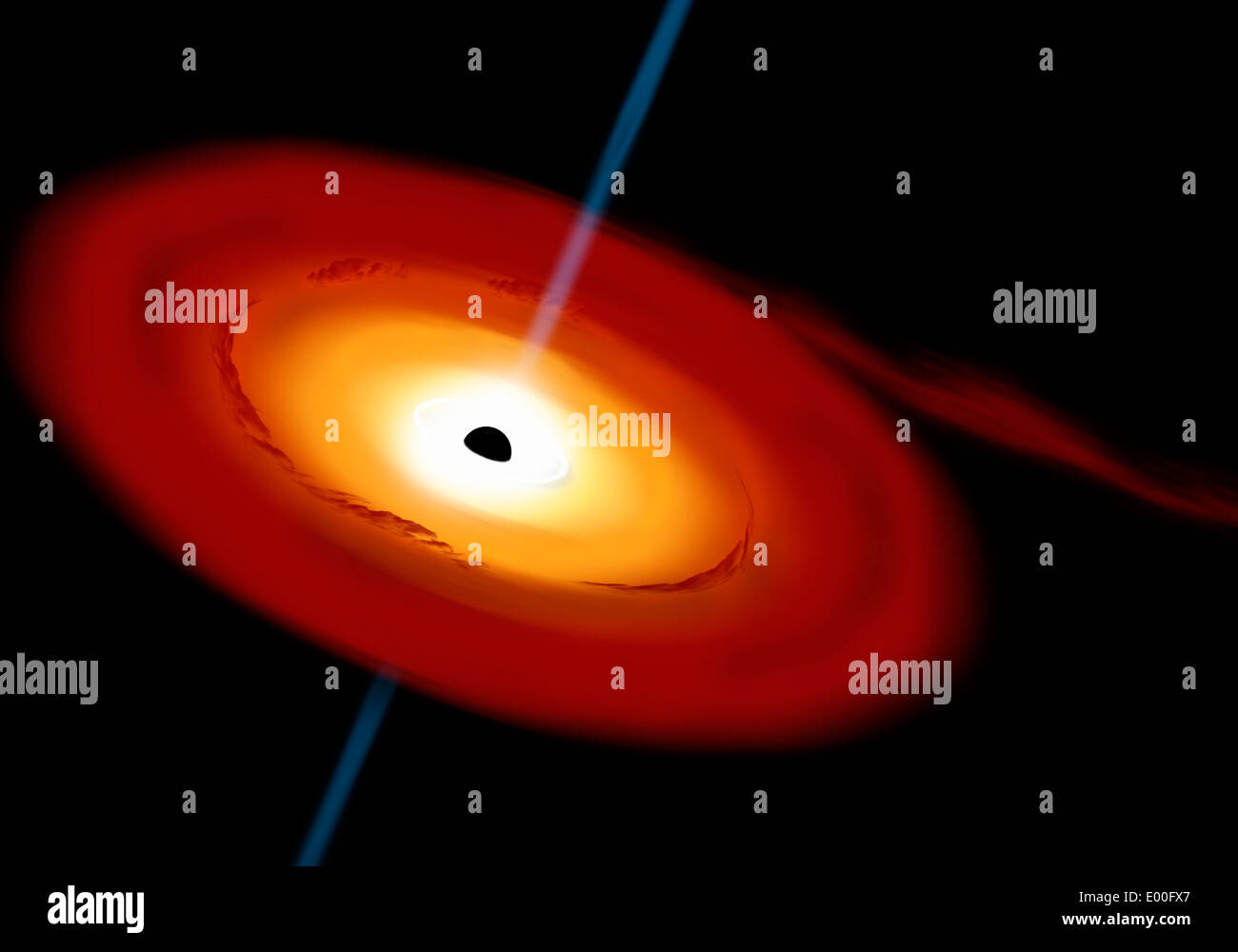 Artist's depiction of a black hole and it's accretion disk in interstellar space. Stock Photohttps://www.alamy.com/image-license-details/?v=1https://www.alamy.com/artists-depiction-of-a-black-hole-and-its-accretion-disk-in-interstellar-image68853967.html
Artist's depiction of a black hole and it's accretion disk in interstellar space. Stock Photohttps://www.alamy.com/image-license-details/?v=1https://www.alamy.com/artists-depiction-of-a-black-hole-and-its-accretion-disk-in-interstellar-image68853967.htmlRFE00FX7–Artist's depiction of a black hole and it's accretion disk in interstellar space.
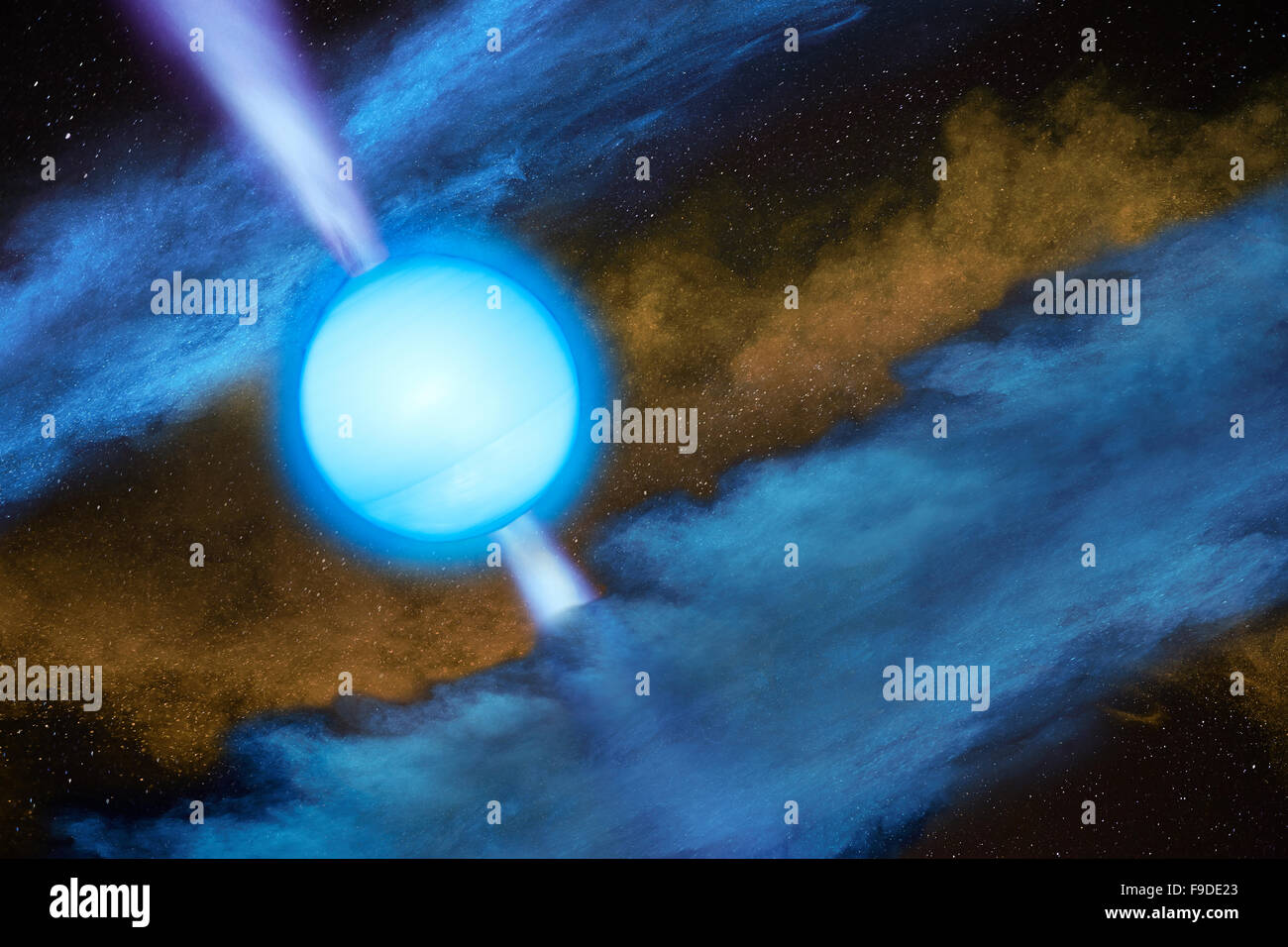 Neutron Star - Visualization Stock Photohttps://www.alamy.com/image-license-details/?v=1https://www.alamy.com/stock-photo-neutron-star-visualization-91880155.html
Neutron Star - Visualization Stock Photohttps://www.alamy.com/image-license-details/?v=1https://www.alamy.com/stock-photo-neutron-star-visualization-91880155.htmlRMF9DE23–Neutron Star - Visualization
 Artist's depiction of a black hole and it's accretion disk in interstellar space. Stock Photohttps://www.alamy.com/image-license-details/?v=1https://www.alamy.com/artists-depiction-of-a-black-hole-and-its-accretion-disk-in-interstellar-image68854104.html
Artist's depiction of a black hole and it's accretion disk in interstellar space. Stock Photohttps://www.alamy.com/image-license-details/?v=1https://www.alamy.com/artists-depiction-of-a-black-hole-and-its-accretion-disk-in-interstellar-image68854104.htmlRFE00G34–Artist's depiction of a black hole and it's accretion disk in interstellar space.
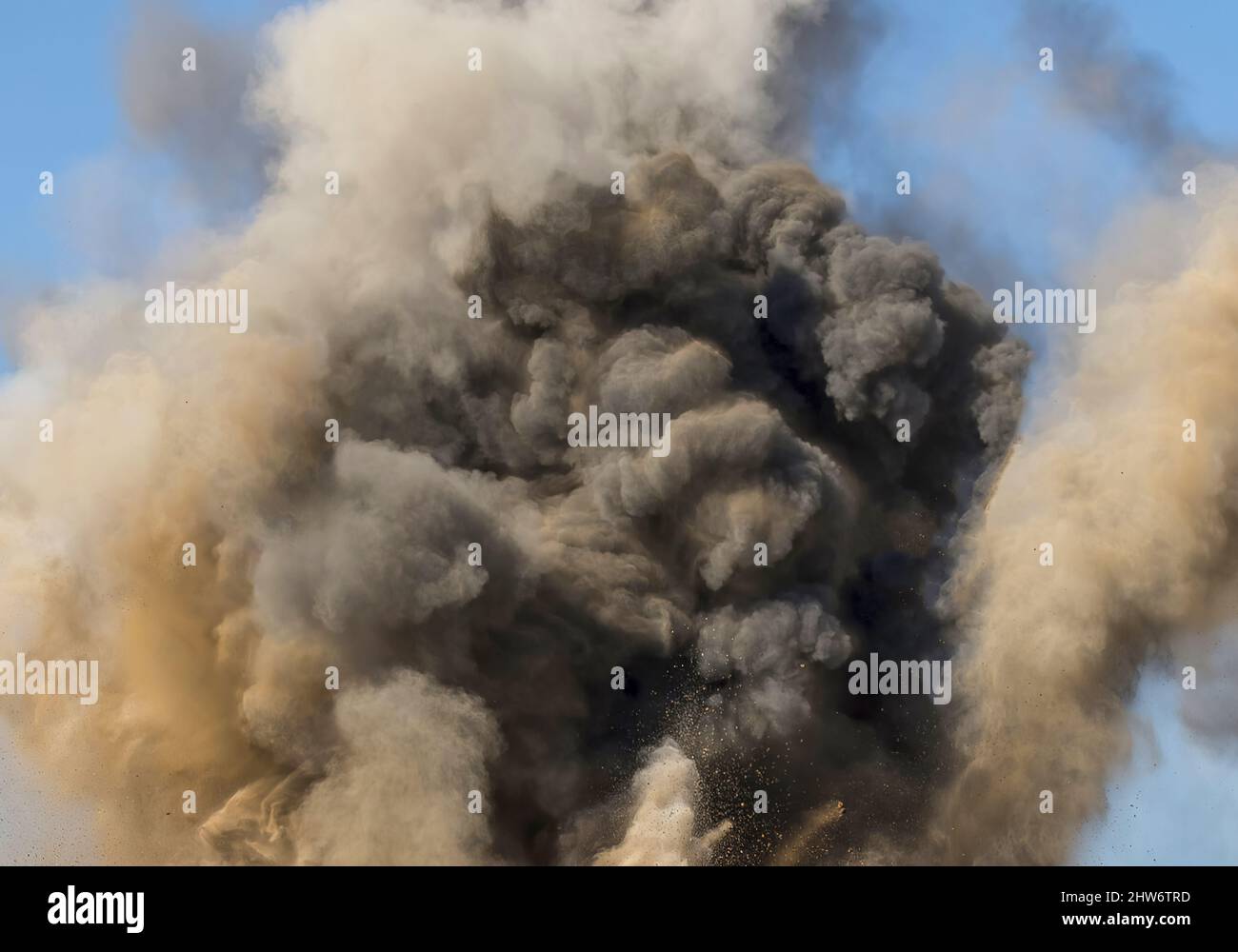 Dust and rock particles during powerful detonator blast Stock Photohttps://www.alamy.com/image-license-details/?v=1https://www.alamy.com/dust-and-rock-particles-during-powerful-detonator-blast-image462987153.html
Dust and rock particles during powerful detonator blast Stock Photohttps://www.alamy.com/image-license-details/?v=1https://www.alamy.com/dust-and-rock-particles-during-powerful-detonator-blast-image462987153.htmlRF2HW6TRD–Dust and rock particles during powerful detonator blast
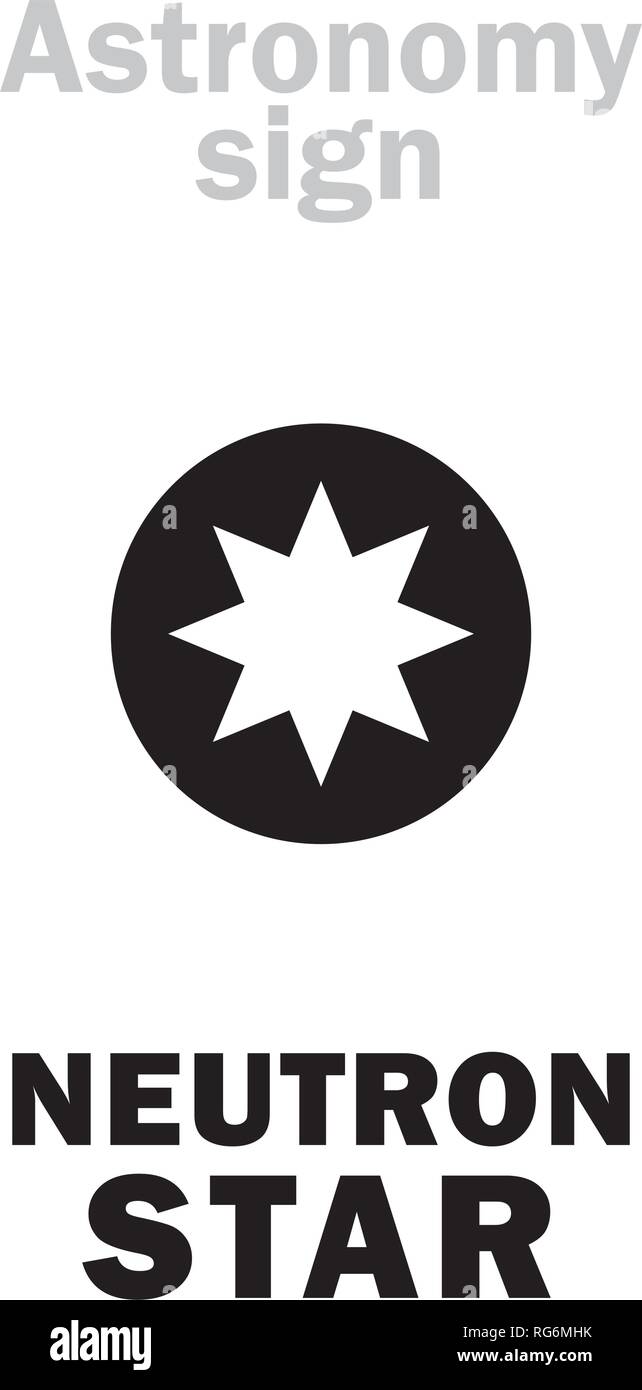 Astrology Alphabet: NEUTRON STAR, small cold but superdense Collapsed Dead Star emitting faint glow and Lethal Rays. Enigmatic phenomenon in Universe. Stock Vectorhttps://www.alamy.com/image-license-details/?v=1https://www.alamy.com/astrology-alphabet-neutron-star-small-cold-but-superdense-collapsed-dead-star-emitting-faint-glow-and-lethal-rays-enigmatic-phenomenon-in-universe-image233717167.html
Astrology Alphabet: NEUTRON STAR, small cold but superdense Collapsed Dead Star emitting faint glow and Lethal Rays. Enigmatic phenomenon in Universe. Stock Vectorhttps://www.alamy.com/image-license-details/?v=1https://www.alamy.com/astrology-alphabet-neutron-star-small-cold-but-superdense-collapsed-dead-star-emitting-faint-glow-and-lethal-rays-enigmatic-phenomenon-in-universe-image233717167.htmlRFRG6MHK–Astrology Alphabet: NEUTRON STAR, small cold but superdense Collapsed Dead Star emitting faint glow and Lethal Rays. Enigmatic phenomenon in Universe.